The Process - THIS/NEXT/LAST TIME Part III
Momentum is a critical component of any creative endeavour. Without it, your project is doomed to languish before completion.
I lost my momentum.
After returning from London, it took me weeks before I got around to editing together the exterior scenes we shot. I’m not sure if it was general apathy towards the project or just working around my pre-existing schedule, but it took until almost Christmas before I had anything to show Chris and Bobcat.
The biggest issue to tackle in the edit was the scene transitions. As written and shot, the movement of my character, Ted, through the bar door would carry us from one scene to the other. However, when shooting the exteriors we didn’t have access to open the door all night, so we had to shoot around the actual entrance except for the last scene.
Added to the complication was the dialogue — it was designed to start on one side and finish in a new context on the other. By shooting the scenes 9 months apart, we lost the connective tissue to really sell that idea.
The most significant change to the film was made fairly early on - we removed an entire scene.
Originally the film started with the exterior of me banging my head against the wall, went inside for Christmas, then returned to the exterior for Halloween. This lacked punch, as the opening scene had far less production value than the interior, so by dropping the Halloween scene, we could start in the inside, go out to the head bashing scene, and return for New Year’s. It took some work around to get the transitions to smooth out, but it works substantially better and gets us into the film in a faster and funnier way; in hindsight it should always have started in the bar first.
Once we finally had a decent rough cut, the real problems started to emerge.
Timeline of the finished film.
POST PRODUCTION
Momentum is a critical component of any creative endeavour. Without it, your project is doomed to languish before completion.
I lost my momentum.
After returning from London, it took me weeks before I got around to editing together the exterior scenes we shot. I’m not sure if it was general apathy towards the project or just working around my pre-existing schedule, but it took until almost Christmas before I had anything to show Chris and Bobcat.
The biggest issue to tackle in the edit was the scene transitions. As written and shot, the movement of my character, Ted, through the bar door would carry us from one scene to the other. However, when shooting the exteriors we didn’t have access to open the door all night, so we had to shoot around the actual entrance except for the last scene.
Added to the complication was the dialogue — it was designed to start on one side and finish in a new context on the other. By shooting the scenes 9 months apart, we lost the connective tissue to really sell that idea.
The most significant change to the film was made fairly early on - we removed an entire scene.
Originally the film started with the exterior of me banging my head against the wall, went inside for Christmas, then returned to the exterior for Halloween. This lacked punch, as the opening scene had far less production value than the interior, so by dropping the Halloween scene, we could start in the inside, go out to the head bashing scene, and return for New Year’s. It took some work around to get the transitions to smooth out, but it works substantially better and gets us into the film in a faster and funnier way; in hindsight it should always have started in the bar first.
Once we finally had a decent rough cut, the real problems started to emerge.
We began to show the edit to some unbiased friends and family, and while we got some very positive feedback, we also kept getting the same note: it feels incomplete. Multiple people mentioned it felt more like a trailer for something longer, and they were right; somehow in the re-writes we had lost or muddled the story too much. People wanted to see more of Ted and Erin, portrayed by the beautiful Amanda Verhagen, but the film had become more about his inaction rather than their relationship - an obvious mistake in hindsight that was not present in the first draft.
A snippet of the deleted Hallloween scene appears after the credits.
There wasn’t much we could do, as it was practically impossible to do any reshoots. We thought about some pickup shots that might help, but at the end of the day what we had just wasn’t exactly what we wanted.
So the film became what it is now, and I wasn’t satisfied with it. I let it sit on a shelf for the better part of a year because I didn’t feel like it was good enough. It didn’t resonate the way I wanted it to, and more importantly, a year later I didn’t feel the same way. I didn’t feel the same way I did when Chris and I were writing it, and it became hard to want to put out an idea I no longer believed in.
It wasn’t until December 2013 that my mind was changed. I was chatting with a friend who was going though a situation similar to what I had experienced, and I decided to send him a link to watch the film. Not long after I got a reply, “Yeah, that’s about how it feels.”
Even though I’d lost momentum, it didn’t mean what Chris and I created was invalid or didn’t work on some small level, and it wasn’t fair to all those who volunteered their time and energy to just sit on the project. So in January of 2014, almost exactly two years since we began shooting, the film (now retitled to THIS/NEXT/LAST TIME after anguishing discussion) premiered at the Short Circuit Film Festival in Victoria, and it made its way online 6 months later.
The film never “took off” or got many hits at all, but that’s all besides the point. It said what Chris and I were trying to say, and shit, we made something. It was a great learning experience, and it makes me chuckle. That’s enough.
A few of the crew members at post-wind storm drinks.
TAKE-AWAYS
• TRUST YOUR SCRIPT
Sure, the second version of the script saved our butts when we had to postpone the shoot, but had we stuck to the original version, we never would have been outside anyways. Plus we wouldn’t have had a gimmick get in the way of our story. Story first, always.
• KEEP MOMENTUM
Especially if you’re one of the primary creative forces behind a project, you have to keep invested. Time will change your perspective and feelings about it, but your job is to keep it moving. Taking extended time away from your purpose will kill your momentum and do nothing but hurt the project.
• JUST RELEASE IT
When all is said and done, the whole point of making things is for them to be seen or experienced, no matter how far they fall from your expectations. Unless it’s an un-resounding failure, just learn from your mistakes, put it out and move on.
FINAL THOUGHTS
More than anything I have to thank everyone in the cast and crew who volunteered their time to help this project, and apologize for letting it sit on a shelf for so long. To Bobcat, you are a champion among men. You get things done, and this film would absolutely never have happened without you. To Chris, you made this film better than it should be. Without your writing and directing, and your hilarious ad-libs on set, this wouldn’t have worked at all. I should have trusted in our first draft, and I will forever be sorry for that, but thanks for going along with my insanity anyways.
And if you care to revisit it, here is the final film:
The Process - THIS/NEXT/LAST TIME Part II
When shooting any film, weather and time are your greatest enemies. If they both turn against you, you’re screwed - so you better have a backup plan.
We didn’t.
Bobcat arrived on the island a few days before Chris. He worked his producer magic and secured us an amazing location - a bar with a fantastic interior, as well as an entrance to an isolated alley which was perfect for our needs. Additionally, we made a deal with the owners to cook lunch for our crew as part of the location fee - food is an essential part of any production, particularly on volunteer shoots.
"The Process" is a series of entires where I'll talk though the hurdles and joys of projects I've worked on. This entry is the second in a series covering the production of "THIS/NEXT/LAST TIME". Read Part I here.
PRODUCTION
When shooting any film, weather and time are your greatest enemies. If they both turn against you, you’re screwed - so you better have a backup plan.
We didn’t.
Bobcat arrived on the island a few days before Chris. He worked his producer magic and secured us an amazing location - a bar with a fantastic interior, as well as an entrance to an isolated alley which was perfect for our needs. Additionally, we made a deal with the owners to cook lunch for our crew as part of the location fee - food is an essential part of any production, particularly on volunteer shoots.
The original costume for the Halloween scene.
While we wouldn’t need the same about of background performers with our script changes, we now had to deal with various set decorations and costumes changes, and Bobcat worked with a friend of ours, Sarah Csumrik, to secure what we required. (A particular shout out to ChristmasSweaters.ca who provided us with the amazing assortment of garments for our festive scene.)
The actual shoot plan was simple, but audacious. Since we had time constraints with Chris, we would spend the first day of his visit finalizing the prep and the second day shooting. We figured we could shoot out all the interiors during the day and go outside at night for the exteriors. It would be a long day and ask a lot of our crew, but everyone was up for it.
In hindsight, it was a terrible idea.
The interior shoot went much slower than anticipated. We hadn’t properly budgeted the time or resources to create a blackout tent around the door, so my character could enter and exit while maintaining the illusion that it was night outside. Not properly planning for this cost us a lot of valuable time we didn’t have.
On the positive side, we were fortunate to have multiple friends bring their Canon DSLR’s, and we took every advantage of that. Our Director of Photography, Nicolas Watkins-Lenis, lit and composed for the two mains, and we let the others find their own additional shots with minimal involvement from Chris and I unless there was a particular angle we needed. While the final edit relies primarily on the main angles, those additional angles proved invaluable.
When it was finally time to move outside, we realized there was a problem pretty quickly - about thirty seconds, in fact. All it took was moving one light outside and watch the diffusion paper fly off in grand fashion to know we were hooped. Generally when you think of weather issues, you just pray it doesn’t rain - a wind storm is pretty far down the list of your concerns. If it was just a lighting issue we probably could have made it work, but the wind was so strong it was visually noticeable and it made recording audio impossible.
It was a nightmare. We had no backup - Chris was set to fly out the next afternoon so we couldn’t push it to the next evening, and we couldn’t ask our crew to sit around and hope the storm would abate. We had no choice - with only half a film shot, we packed up and sent our crew home, cancelling the rest of the shoot.
Can't thank everyone who came out to help in out shoot enough. You all are amazing, despite Zeus being a gigantic dick. #FUZeus
— Jeremy Klassen (@jereklassen) January 22, 2012When the Gods punch you in the nuts, you go to Fiamo's and drop Irish Car Bombs and chug down Long Island Iced Teas.#FUZeus
— Jeremy Klassen (@jereklassen) January 22, 2012I got drunk early and I got drunk fast. It was painful to have gotten so far and be unable to finish what we set out to do. However, after editing the final scene together the next day and seeing it work, we decided we had to finish the film, even if it took a couple months before Chris could come back.
9 MONTHS LATER
Sitting on a half completed project for the better part of a year is incredibly frustrating. I had cut together the three scenes we shot, but there wasn’t much to do except wait and try to maintain interest in the film.
Finally we got word that Chris would be able to get up to Victoria on the last weekend of September, so we began to make plans. The crew would be much smaller this time, and we wouldn’t require any other actors besides Chris and myself. It was fall, so we’d have a long night to shoot, and we had three nights available in case we ran into any unforeseen weather issues. Everything would be find this time - or so we thought.
The exterior shoot crew.
Photo by Jon Cairns
Less than two weeks before Chris arrived, I was asked if I would accompany the Director and Producer of LOCKED IN A GARAGE BAND, a film I had been working on, to the film’s world premiere at the Raindance Film Festival in London, England to capture video and photo of the event. Of course I couldn’t say no to that, but as (un)luck would have it, I’d have to fly out the weekend Chris was visiting. We’d still be able to shoot, but it would be tight.
Thanks in part to my new travel plans — and in part to Chris’s luggage being lost on his way to Victoria — we again ended up with one night to shoot and no back-up plan.
Fortunately, the wind stayed away and we completed the shoot without much hassle. Luckily, we didn’t have to worry about continuity due to the time jumps, so the fact that our hair was completely different and I had lost a noticeable 20lbs was a non-issue.
After two shoot days, with a 270 day break in between, we finally had something to work with - it was just up to me to finish the edit, a process that would take the next year to complete.
Tomorrow: the long road of post-production and finding a title.
The Process - THIS/NEXT/LAST TIME Part I
As with most things, it started with an idea. Actually, it started with an event — she left. The girl I was in love with just up and moved to another city and I was in emotional turmoil. I didn't know how to process it, but I needed to write.
Lucky for me, my writing partner Christopher M. Hernandez knew exactly what I was going through. As gentlemen of a similar disposition, we had both been in situation where we'd been placed — or willingly walked in to — the dreaded "Friend Zone" (something we would later refer to as being "an emotional Teddy Bear"). So we gathered our collective experiences and started to type.
"The Process" is a series of entires where I'll talk though the hurdles and joys of projects I've worked on. This entry is the first in a series covering the production of "THIS/NEXT/LAST TIME".
PRE-PRODUCTION
As with most things, it started with an idea. Actually, it started with an event — she left. The girl I was in love with just up and moved to another city and I was in emotional turmoil. I didn't know how to process it, but I needed to write.
Lucky for me, my writing partner Christopher M. Hernandez knew exactly what I was going through. As gentlemen of a similar disposition, we had both been in situation where we'd been placed — or willingly walked in to — the dreaded "Friend Zone" (something we would later refer to as being "an emotional Teddy Bear"). So we gathered our collective experiences and started to type.
At that time, Chris and I were unfortunately separated by an international border so our writing took place in the form of drafts sent back and forth via email. We would then jump on Skype and discuss before heading back for another round of writing. The process was rather quick, and within a few weeks we had a draft we could work with.
The story was simple: A man and his best friend attend a going away party for the girl he loves (but has not told) and hijinks ensue. The 20-page script, coded with the working title PROJECT STEVE, had 4 speaking roles; the two men, the girl, Erin, and a loveable doofus named Jim. We made plans to shoot in 2 months later, when Chris would be in town on a weekend visit.
Our biggest priority was getting the right cast to pull it off. Quickly it was decided that for sake of simplicity, Chris and I would take the lead roles (which were at that time named after ourselves anyways) and we would set-up auditions for the other two roles.
The first major hurdle in this plan was one of time. We had enlisted our good friend Jon "Bobcat" Cairns to help produce the film, but he was living and working in Vancouver which left me as the sole individual in Victoria to get things ready for the shoot - and I was incredibly busy.
Added to the casting dilemma, I began to worry about the script. Not the content — the length. We had planned to shoot this over the course of two days at the most, and there was 20-pages of practically all dialogue with four characters who needed coverage. Plus, we'd need to call in a lot of background artists, and we weren't sure who our crew would be yet. With only a few weeks before Chris arrived, I called him and proposed we make it easier on ourselves but adjusting the script.
Chris maintained throughout the whole production that the first script was better and in hindsight, he is probably right. A lot of story issues we fought with in post-production were introduced in this new version, which saw role of Erin diminished to unspeaking (so we wouldn't have to rehearse an actress) and the role of Jim removed completely.
However, the biggest change when re-writing the film was to add time-jumps - in essence take what was originally one conversation on a single night and turn it into one conversation spanning several years. Half the film now took place outside in an alley, half took place inside the bar - the idea being that half the movie would no longer require extensive background artists, and we could use two locations if need be.
What we didn't know at the time was the addition of those time jumps actually ended up saving the film from never being completed, after an unexpected wind storm ripped though our location, completely derailed our shoot.
But more on that tomorrow.
Two Milestones
The numbness in my arms was the first indication something was wrong.
Throughout my life I'd find myself sleeping on my stomach, arms tucked under my body for warmth – something I no doubt learned in the Canadian winters when I was too lazy to get another blanket – but when I began to awake without being able to feel my upper limbs, I became concerned. After a few months of hoping it would go away, I finally resigned myself to seeing a doctor and got the news: my blood pressure was high and I was severely overweight.
Since I was a child I've battled with my weight. Always on the heavier side, I fluctuated between highs and lows, but I had never let it get overly bad. In fact, I thought I was doing quite well. When I had first moved back to Victoria after film school, I was the slimmest that I could recall. However, that was 5 years previous, and in the interim I had slowly piled on the pounds to finally reaching nearly 300 lbs.
In hindsight, I knew I was getting bigger. My purposefully loose clothes had gotten decidedly less loose, and I had all but stopped looking in reflective surfaces – I actively avoided the full length mirror in my room. Until the tingling started, I never let myself acknowledge the problem, and now I had to.
The numbness in my arms was the first indication something was wrong.
Throughout my life I'd find myself sleeping on my stomach, arms tucked under my body for warmth – something I no doubt learned in the Canadian winters when I was too lazy to get another blanket – but when I began to awake without being able to feel my upper limbs, I became concerned. After a few months of hoping it would go away, I finally resigned myself to seeing a doctor and got the news: my blood pressure was high and I was severely overweight.
Since I was a child I've battled with my weight. Always on the heavier side, I fluctuated between highs and lows, but I had never let it get overly bad. In fact, I thought I was doing quite well. When I had first moved back to Victoria after film school, I was the slimmest that I could recall. However, that was 5 years previous, and in the interim I had slowly piled on the pounds to finally reaching nearly 300 lbs.
In hindsight, I knew I was getting bigger. My purposefully loose clothes had gotten decidedly less loose, and I had all but stopped looking in reflective surfaces – I actively avoided the full length mirror in my room. Until the tingling started, I never let myself acknowledge the problem, and now I had to.
I bought a fitness tracker and was unsurprised to find that my daily movements were quite limited, so I got some audiobooks and started walking. Not in the daylight, mind you - no, I wouldn't let myself be seen by others. I took advantage of my nocturnal sleep schedule and started making loops in my hilly neighbourhood at 2am, astonishingly never being arrested for lurking around in a black hooded sweater during the middle of the night.
Within a few months I had dropped 20 lbs. Friends and colleges started to notice, and I began to feel good. I looked forward to my midnight walks and to the stories I'd get to enjoy in my ears. Forcing myself to only listen whilst walking was a great incentive to get out the door. But after that first 20 lbs, nothing was changing.
I tried joining a gym with a friend, but I was still too self-conscious to exercise around people, and the floor to ceiling mirrors did nothing to help matters. I resigned myself back to my midnight walks, and spent the next year completely stagnant.
Throughout this first year and a half, the one thing I never changed drastically was my diet. I am a horrible cook and terrible with ingredients, so many of the diets presented to me seemed overly complicated and too much to take on. It was only once I heard Tim Ferris speak about the 4 Hour Body on an episode of the Nerdist Podcast that I considered leaping in. It seemed simple enough, and the idea of a cheat day was very appealing.
I distinctly remember the first day I weighed in below 270 lbs. I had been on the 4HB for a over a month and hadn't seen any substantial results, at least nothing more than standard fluctuations. I was defeated; it seemed like losing the weight was going to be an insurmountable goal. However, that moment I saw 269.6 lbs on the scale I knew something was working. I knew if I stuck with this, I could lose the weight.
That was nearly two years ago. Since then I have lost a further 73 lbs – this week hitting two milestones; officially losing 100 lbs total, as well as the falling from a BMI classification of "obese" to merely "overweight".
As you can see the from the chart above, it hasn't been an uninterrupted experience. When I moved from Canada to the United Kingdom it took me a few months to get adjusted before I restarted the diet but, as you can see, I didn't actually gain any weight during that time. I attribute this to both the lack of car and also the increased knowledge and awareness of what I was putting in my body. Even if I wasn't following the diet, I was conscious of what I was eating.
The spike in the second gap is Christmas, and the most recent large spike was from my trip to Dublin during St Paddy's Day, so I fully blame the Guinness for that one.
When people find out I've been losing weight, they always ask, "What's your ultimate goal? When are you going to stop?" The answer to the first part is easy: 169 lbs. At that weight, I will drop from a BMI classification of "overweight" to "normal range" for the first time in my adult life. That is my goal. It's an illogical one, as BMI classifications aren't a good indicator of health, but it's my goal none-the-less.
The answer to the second part is, hopefully never. This is a lifetime commitment to keeping my weight in check. Some people don't struggle with their weight, and I'm envious of them, but I also suspect that there are far less of them than I used to think.
Personally, I started this for medical reasons, but continued with it because it feels good. I'm not going to lie, there is a bit of vanity in there, but it's more than just that. The increase in self confidence not just physically, but mentally is immeasurable. I doubt I would have made the move to the UK if I hadn't been on the diet; I just wouldn't have – and didn't have – the confidence to do it beforehand.
This whole weight loss thing has been a long process. If you were to tell me 4 years ago that it would take this long to lose 100 lbs, I probably would have given up because I'm impatient. However, I can't imagine where I'd be now with this.
I still do my walking under the cover of night, and the idea of going back to a gym surrounded by people freaks me out, but I'm no longer angry at the guy in the mirror, I just see him for what he is - a work in progress.
Discovery Street: Five Year Lookback
It was mid-2009 when my former film school instructor David Mills reached out and asked if I'd be interested in co-writing a web series set at the school I had attended.
The idea was to bring current and former students together; the current students tackling the crew/production side of things while the graduates would form the cast and creative roles. I'm not sure why he asked me to co-write, but more significantly, I'm not sure why he asked me to co-write with Christopher M Hernandez - we had never really met.
Chris had started at the school the week after I graduated. We shared mutual friends, but since he only just arrived in Victoria before starting classes and I left Victoria right after graduating, our paths didn't cross. Over the next year we'd be at the same event only a handful of times, but likely said less than 20 words to each other. Why we were asked to write together was beyond me.
David had constructed the series outline, and it was up to Chris and I to flesh out his ideas into eight 5-minute webisodes. The basics were all there; our former acting teacher Pat Phillips would be be the school's headmaster, Chris would play a dual role as an actor and portray one of the student along with George Waters & Marina Miller, and yet-to-be-cast were two other students, the school's custodian and receptionist.
Over the next few months Chris (who was living in Oregon) and I (who had returned to Victoria) would collaborate remotely, emailing drafts back and forth and video chatting to spit-ball ideas. We would take things that had happened to us during our respective film school experiences and exaggerate them. David had remarkably few notes - even when Chris and I deviated from his bible.
By December '09 we'd completed the eight scripts and Dylan Jackson, Jessica Henke, Bobbi Charlton and Pam Barkhouse had joined the cast as the two students, custodian, and receptionist respectively. Plans were made to start shooting in January for an April release.
When we gathered for the table read the week before production, I didn't really know what to expect. Up until that point, I had directed, produced and cast all the projects I had written, so to be removed from those decisions was a new experience for me. However, as always, hearing your words come to life is truly one of the greatest things in the world. Even better is hearing jokes work, and fixing them in the room when they don't.
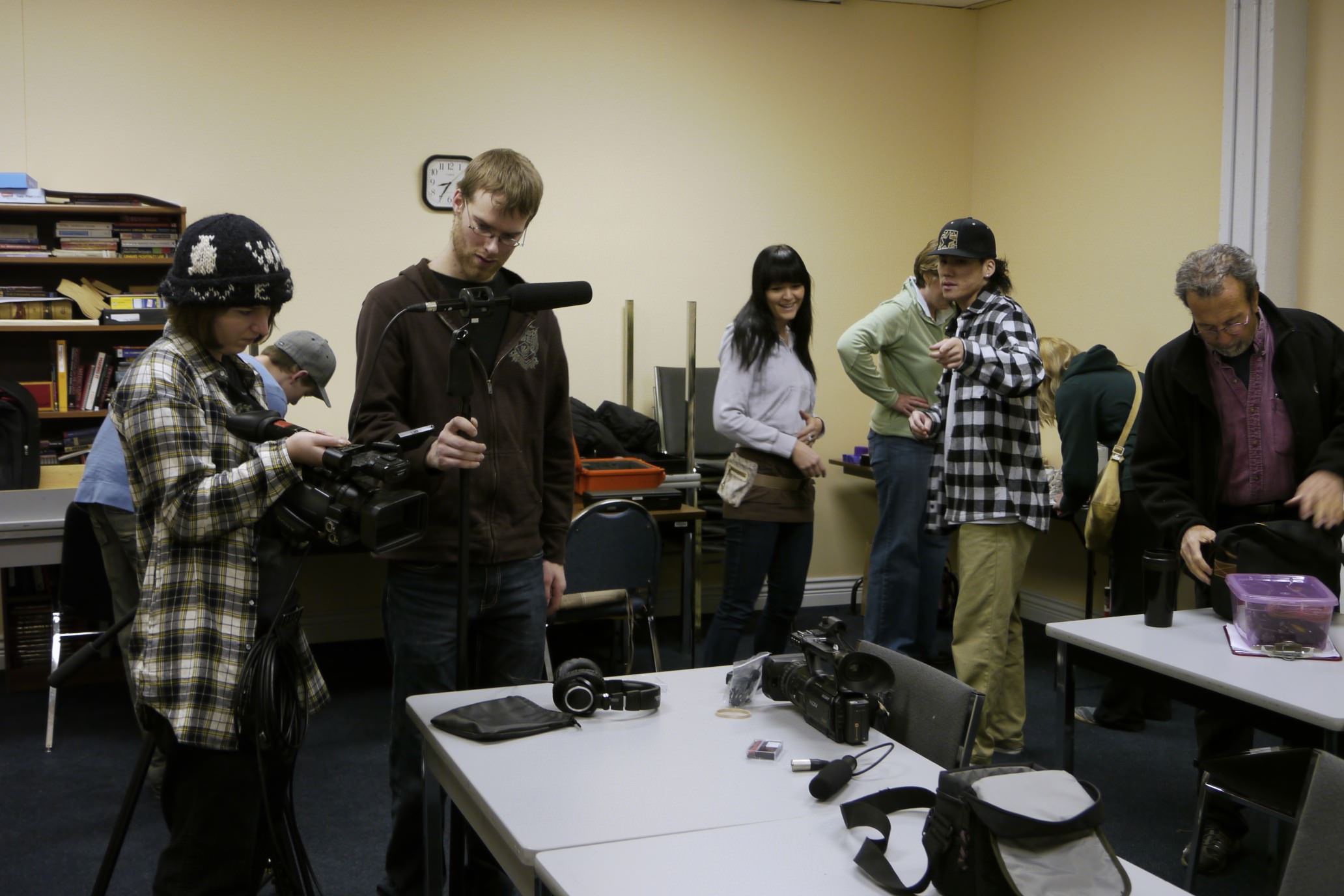
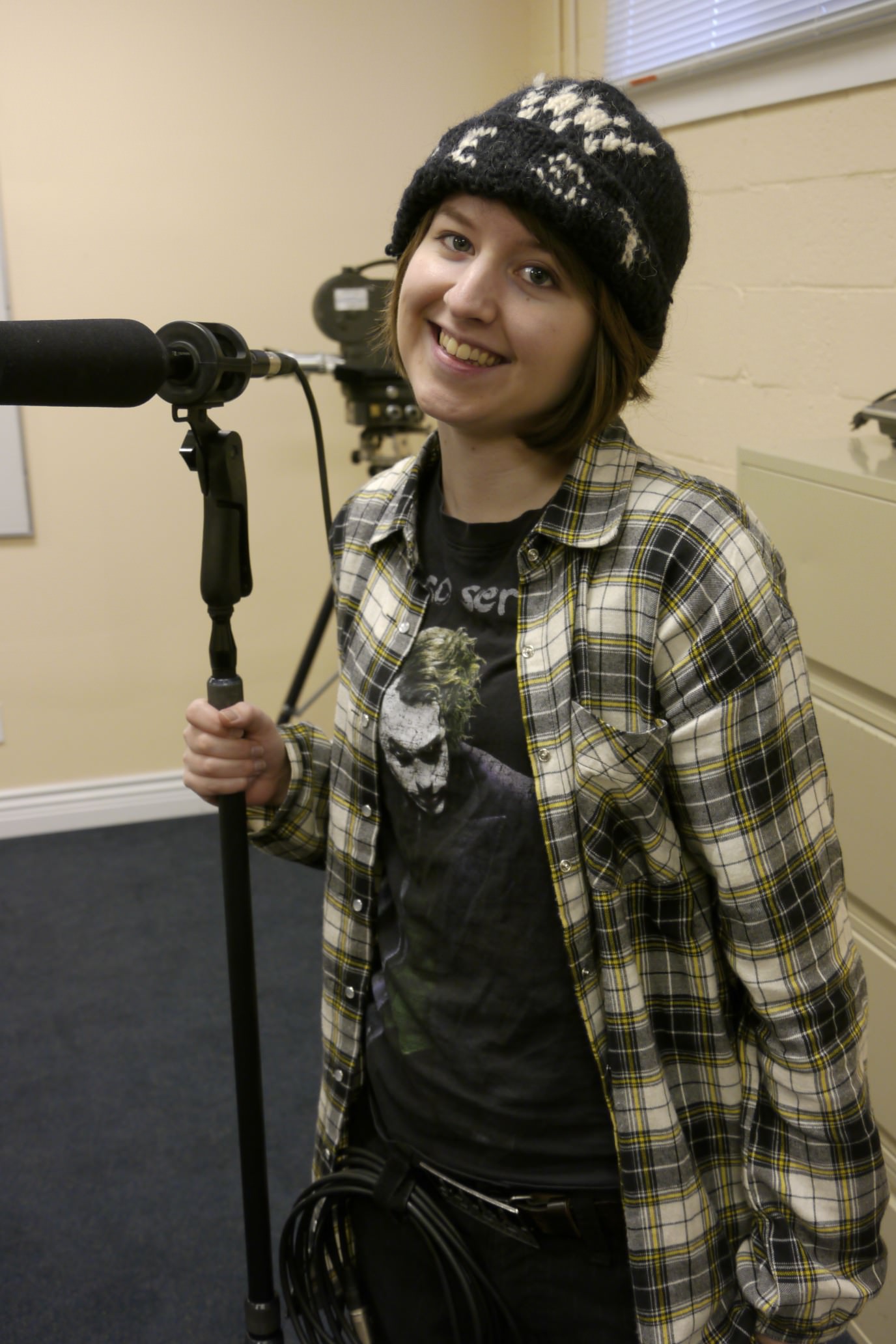
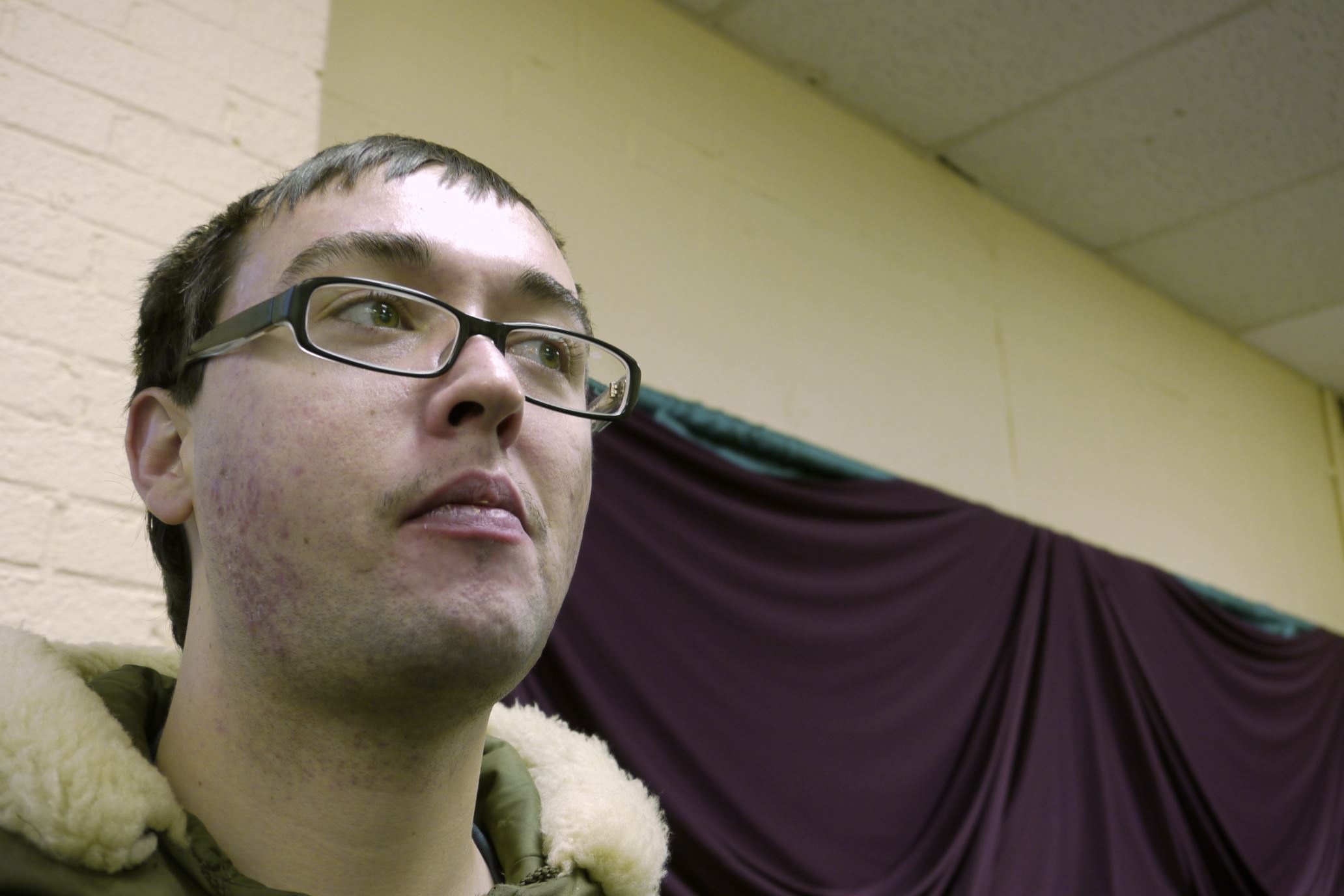
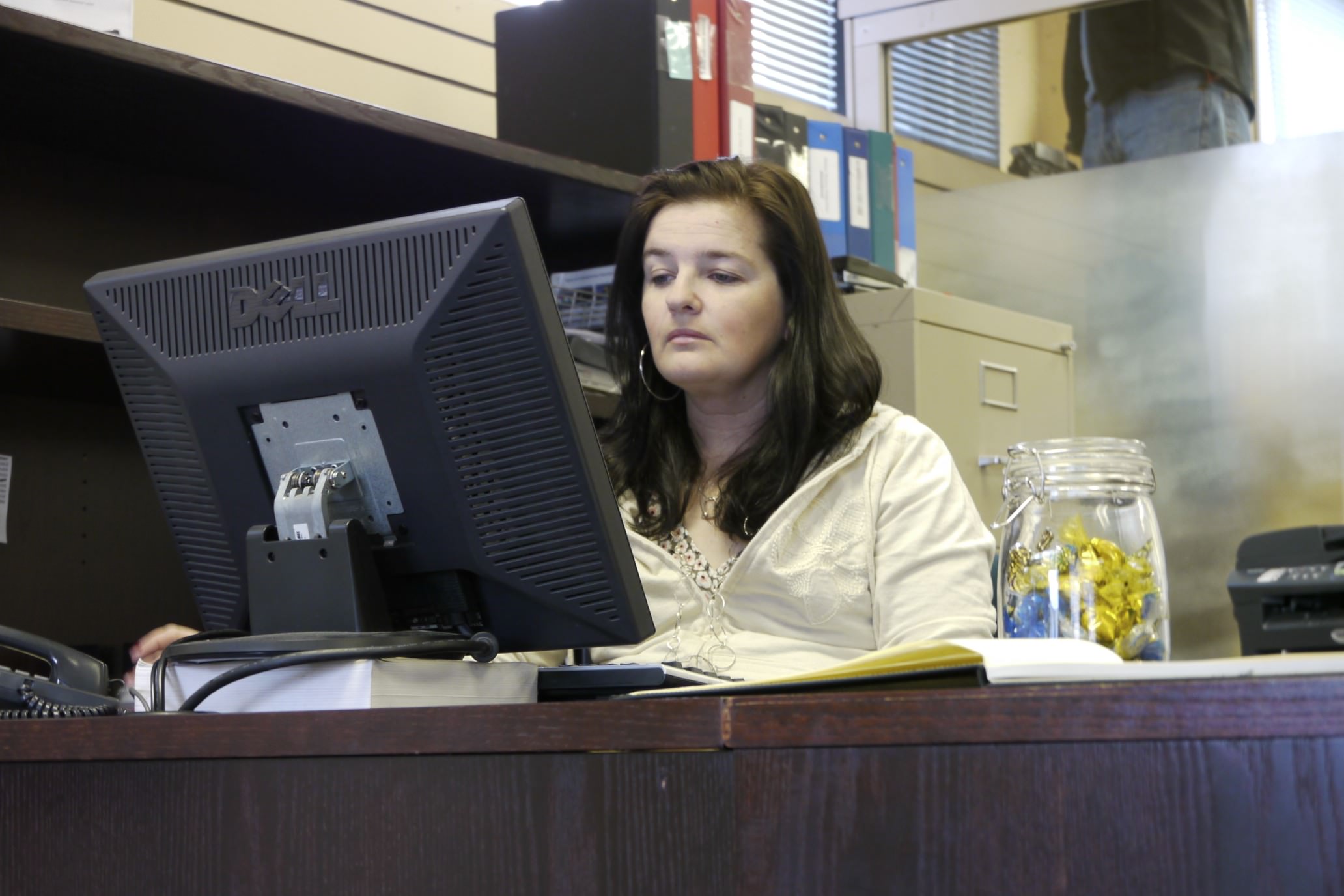
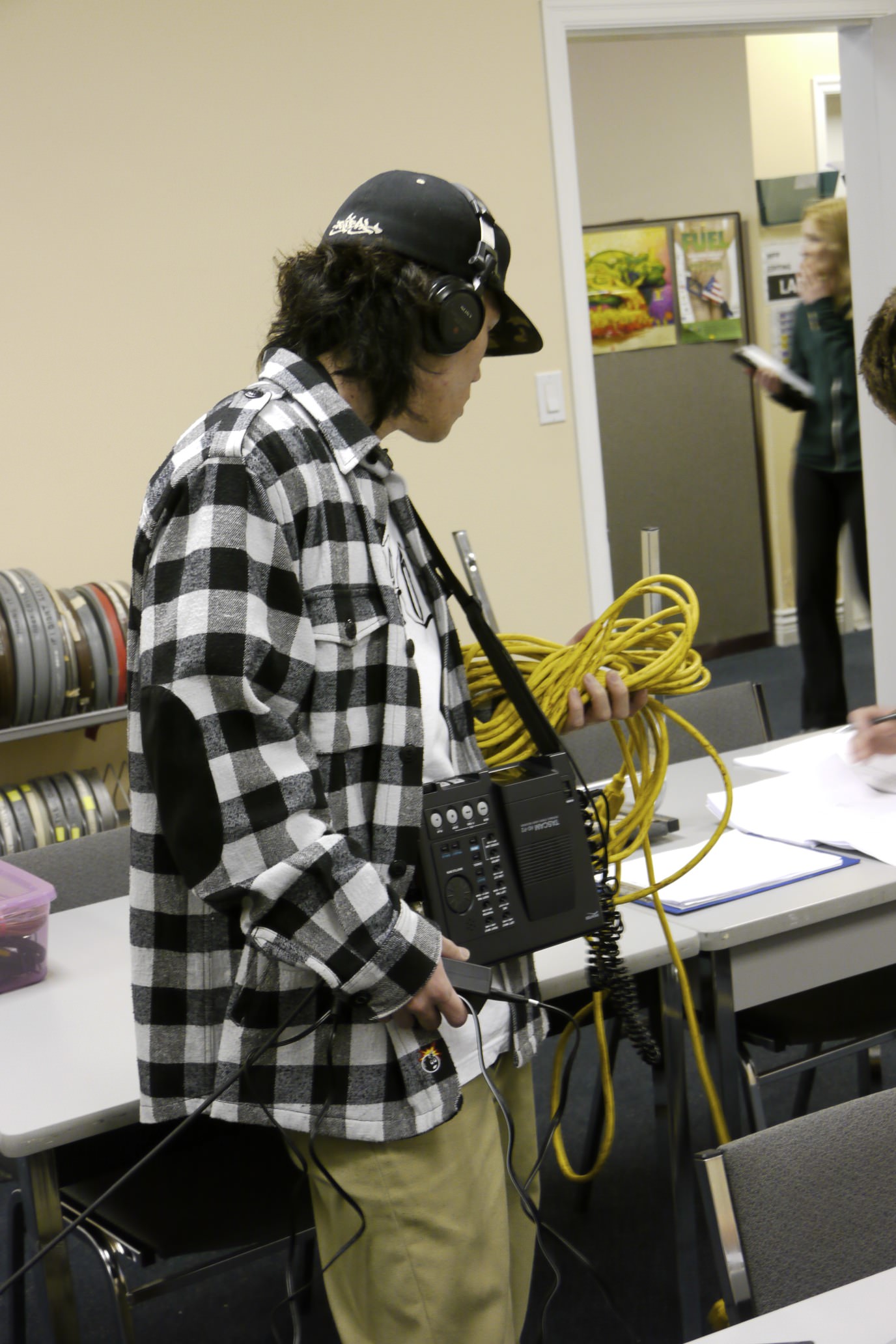
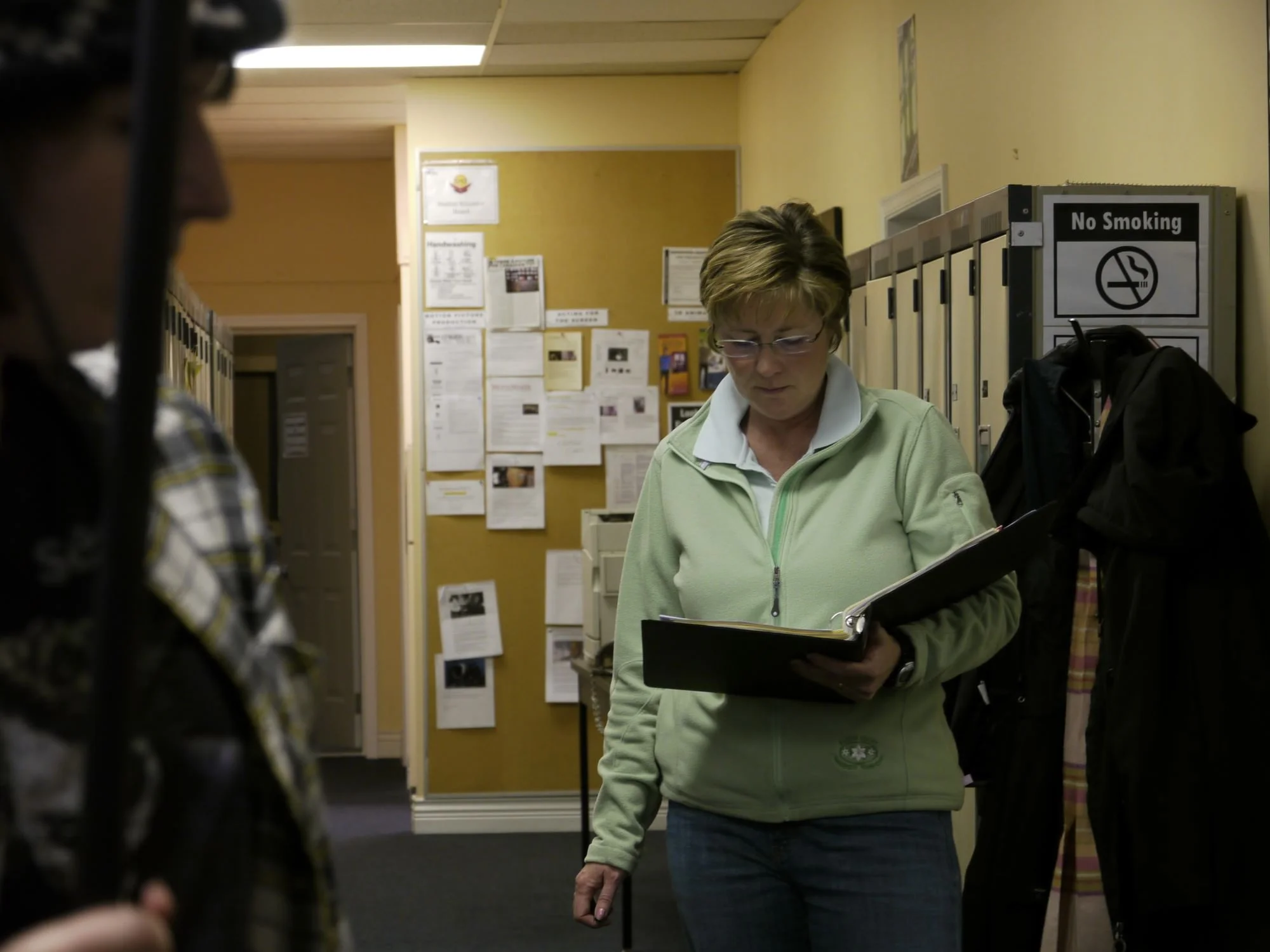
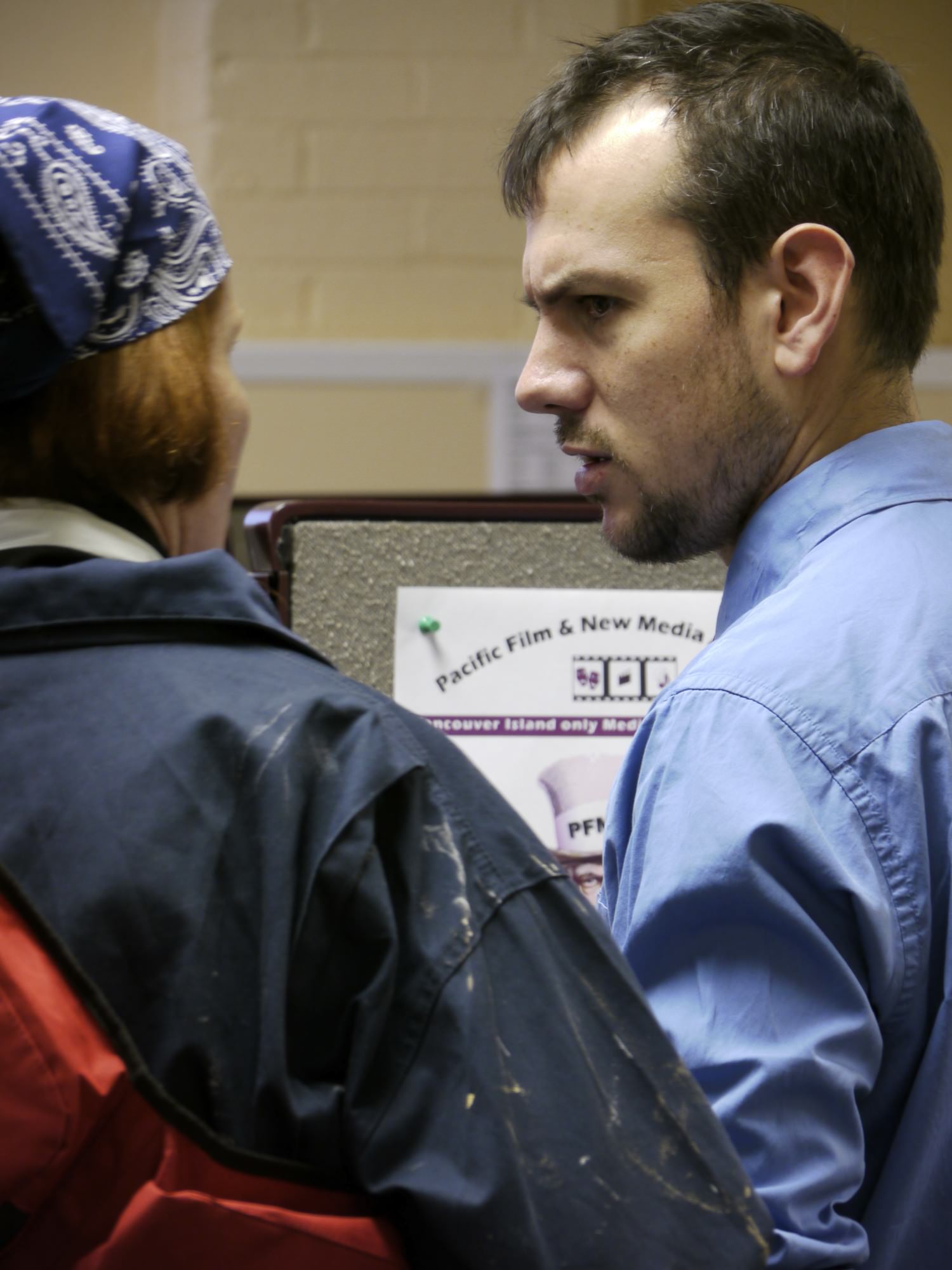
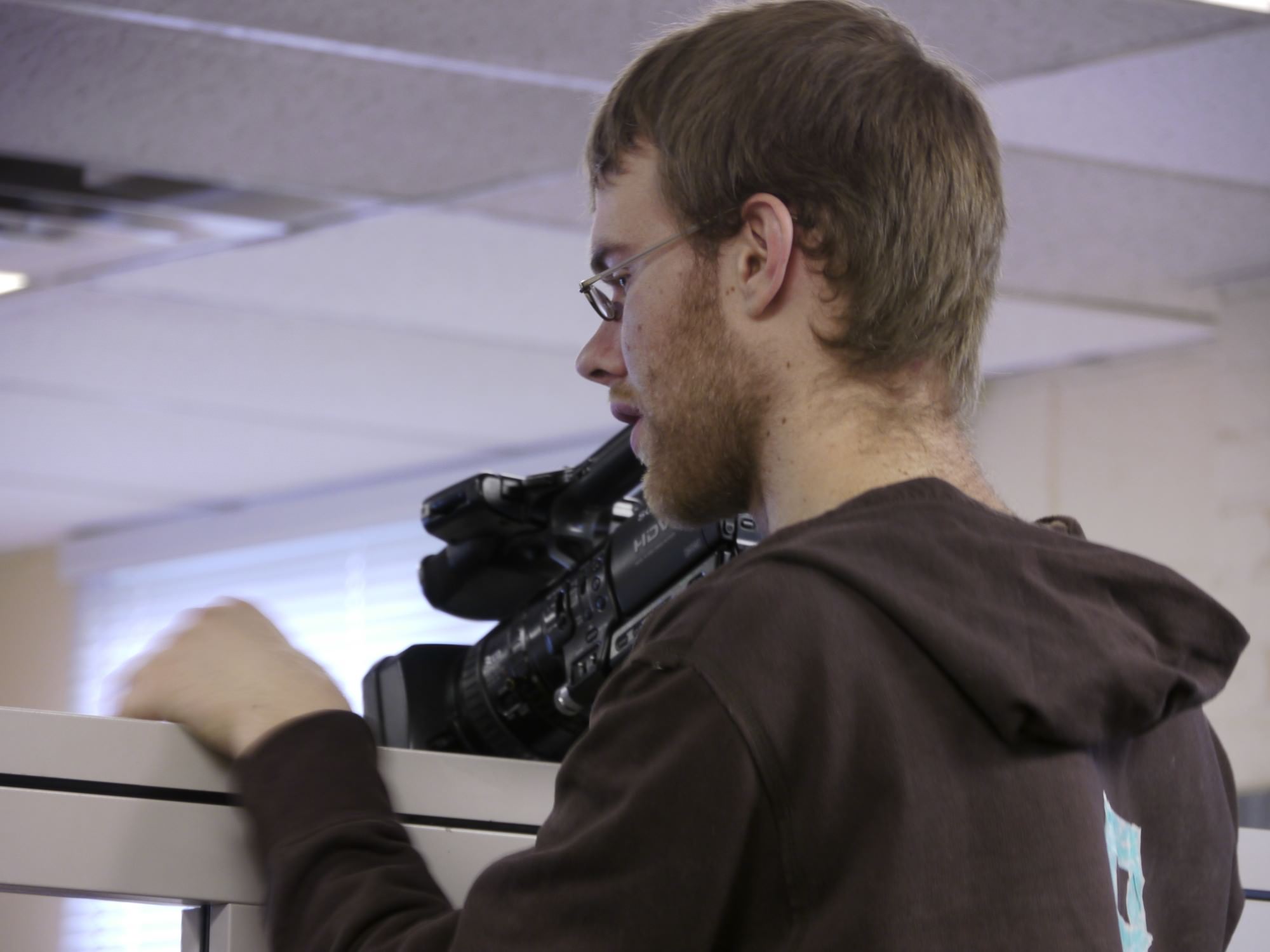
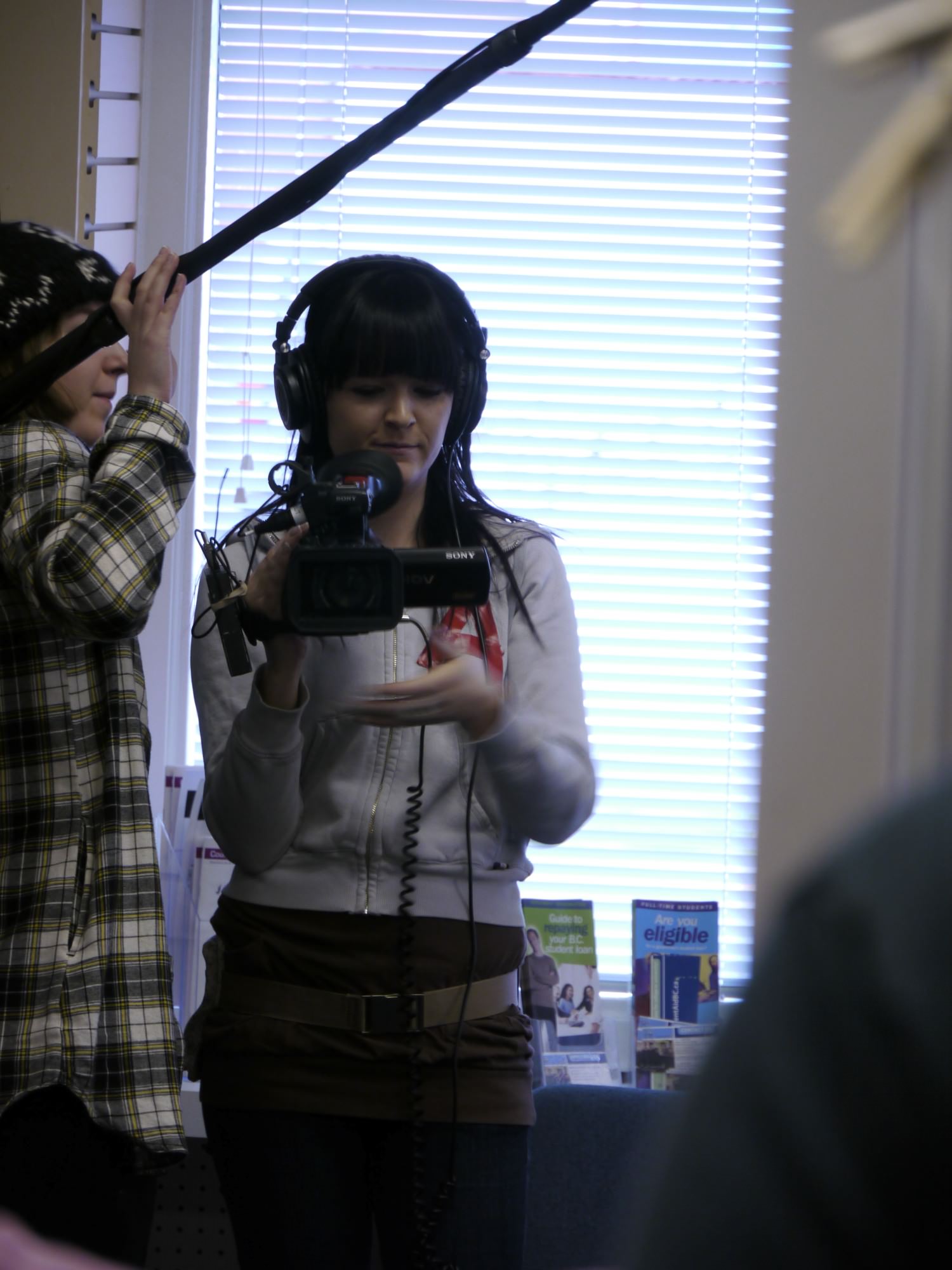
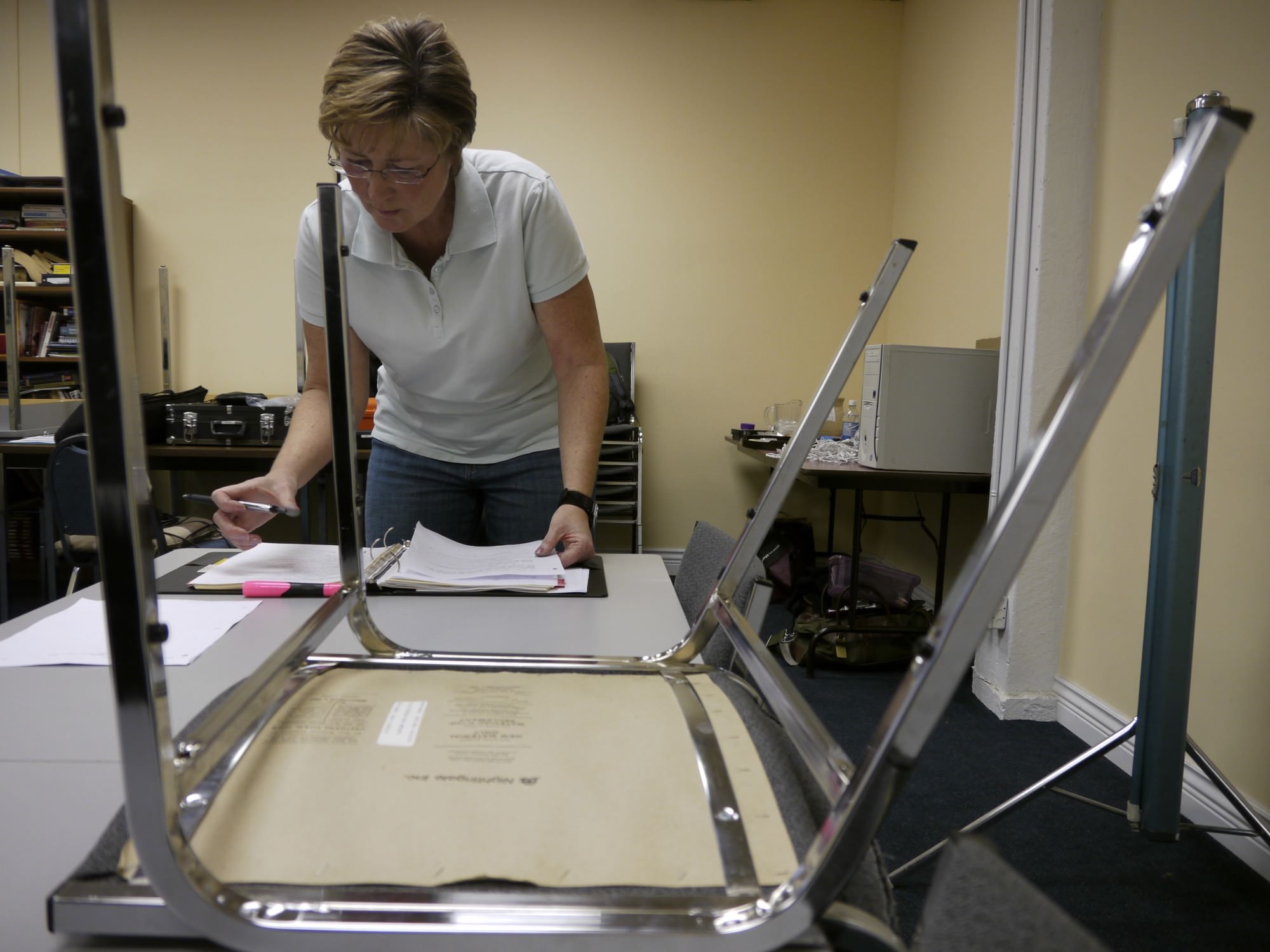
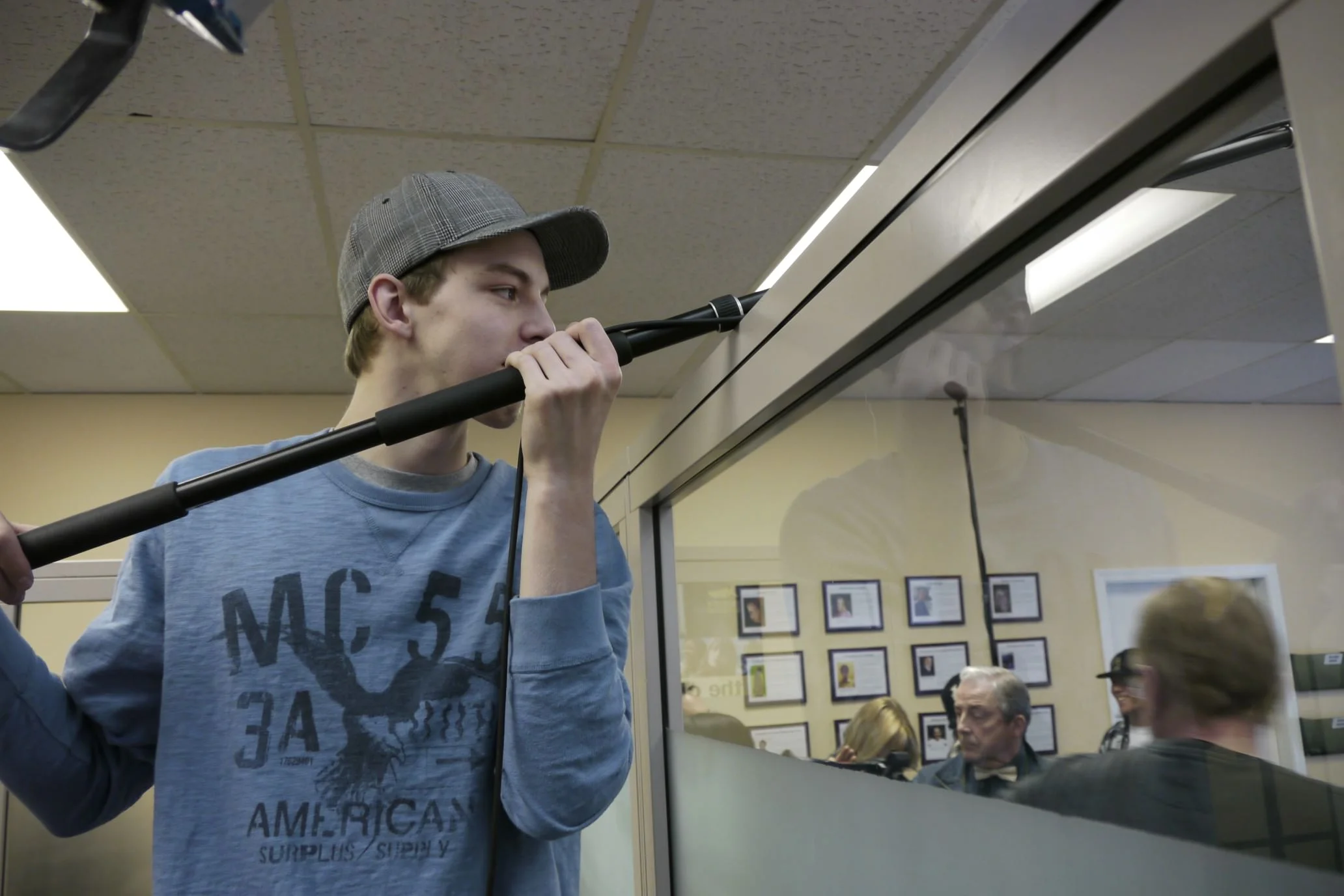
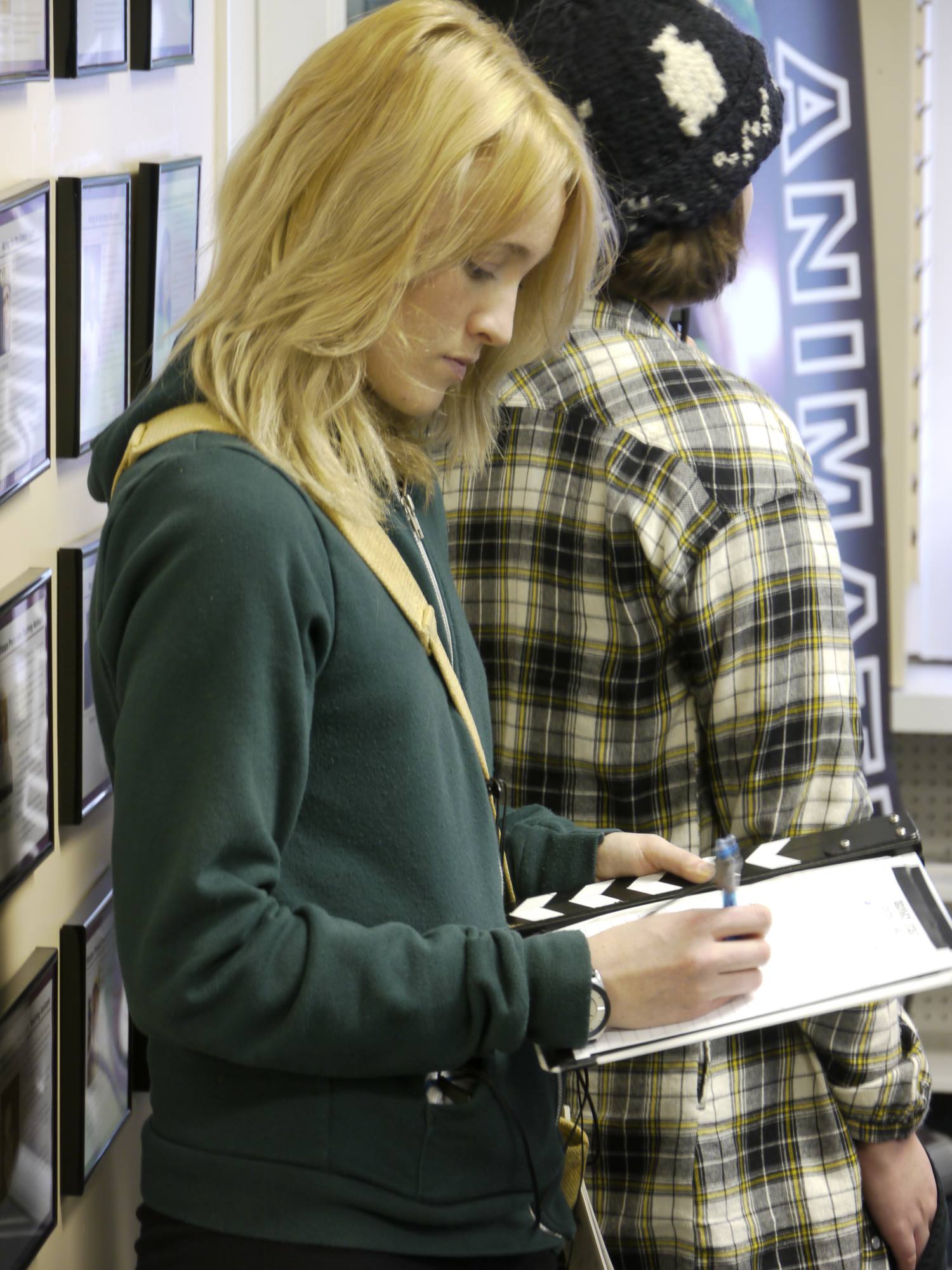
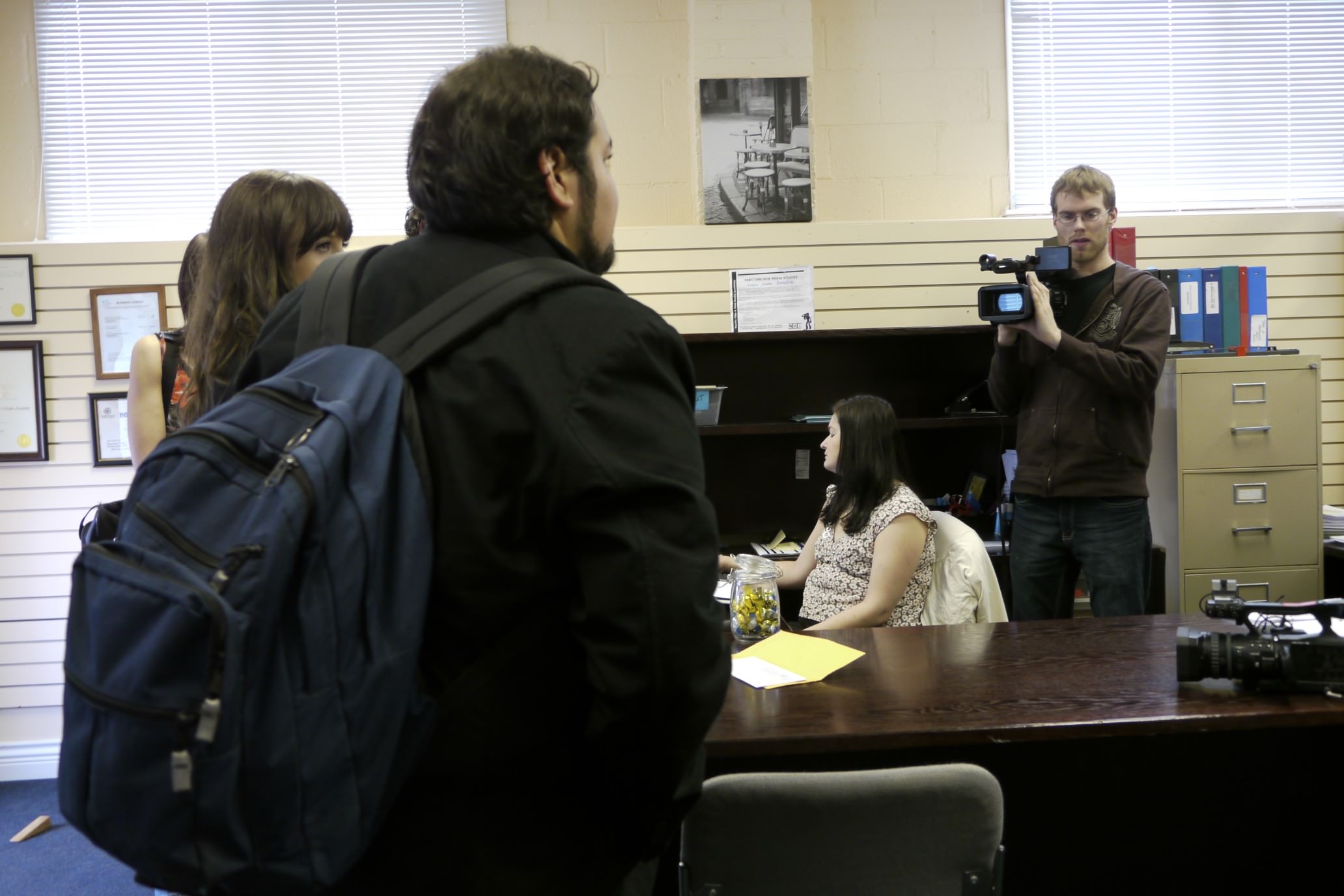
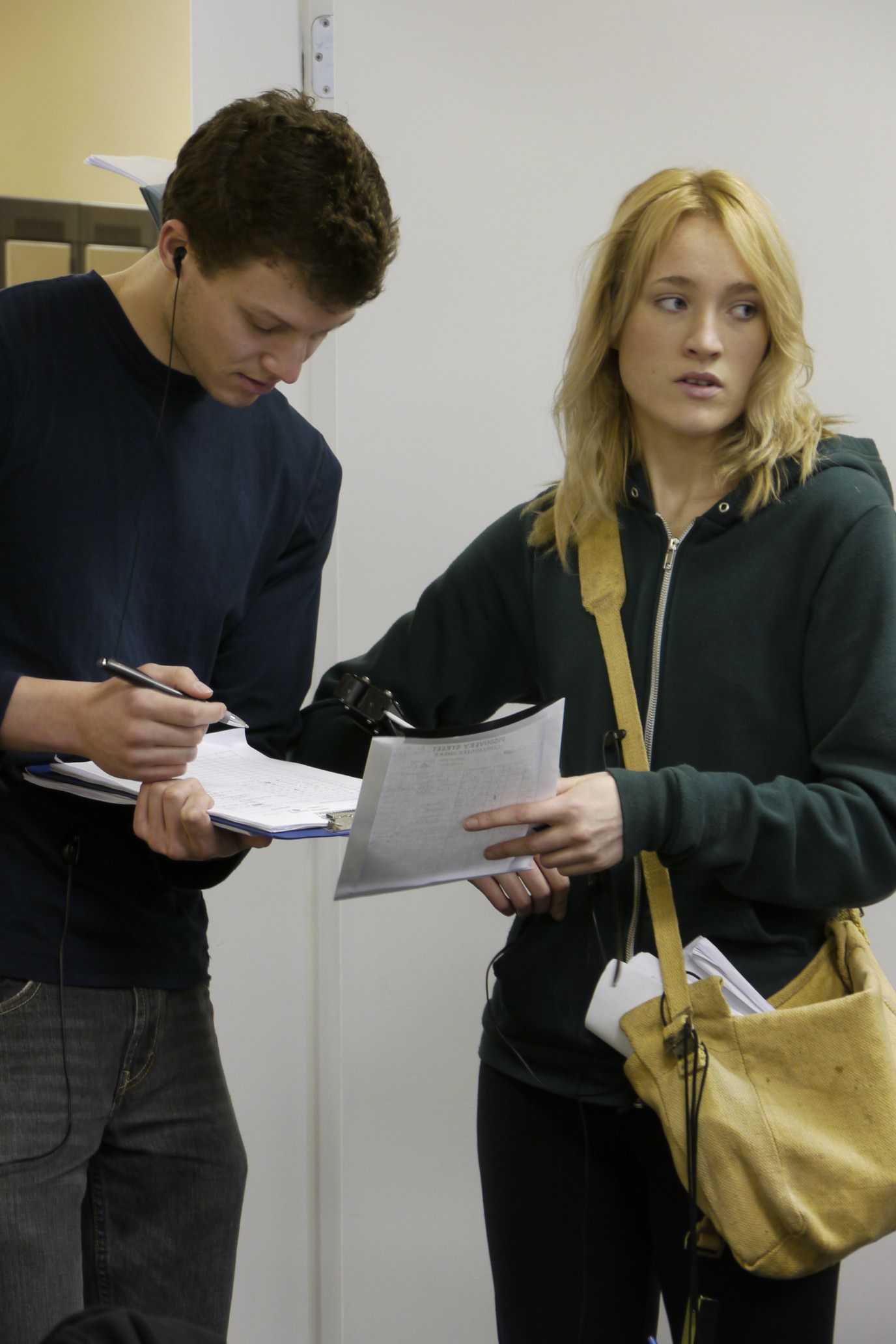
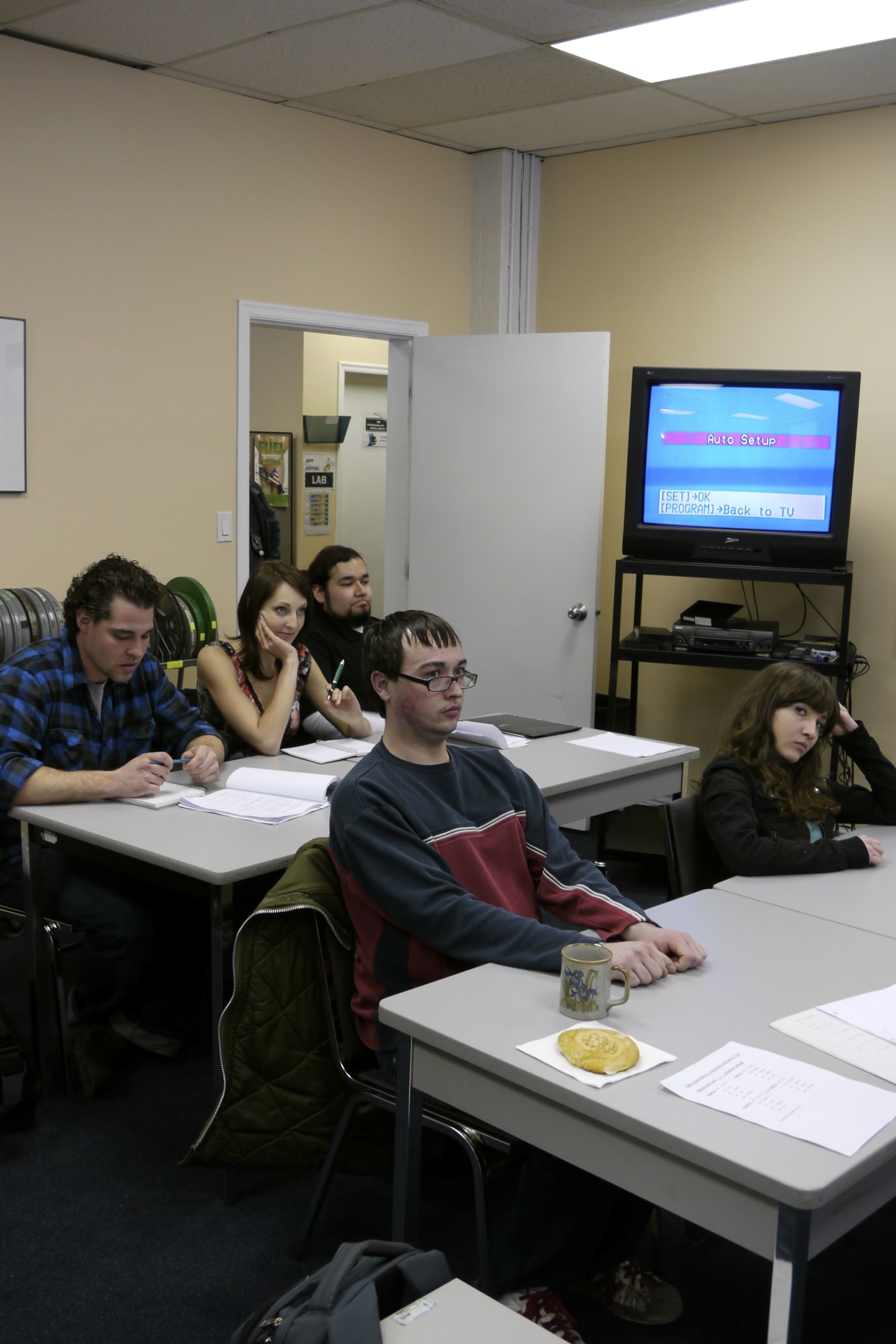
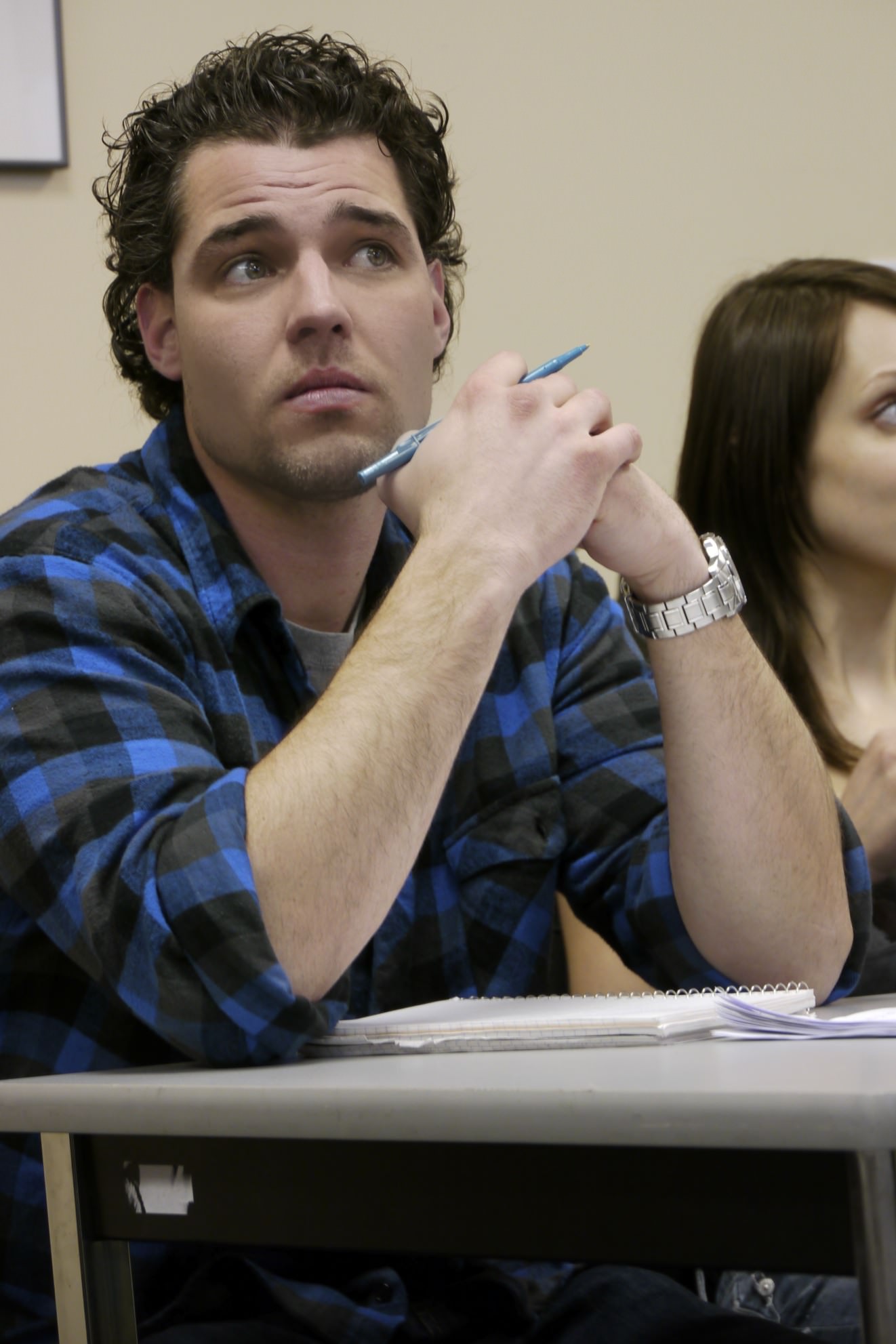
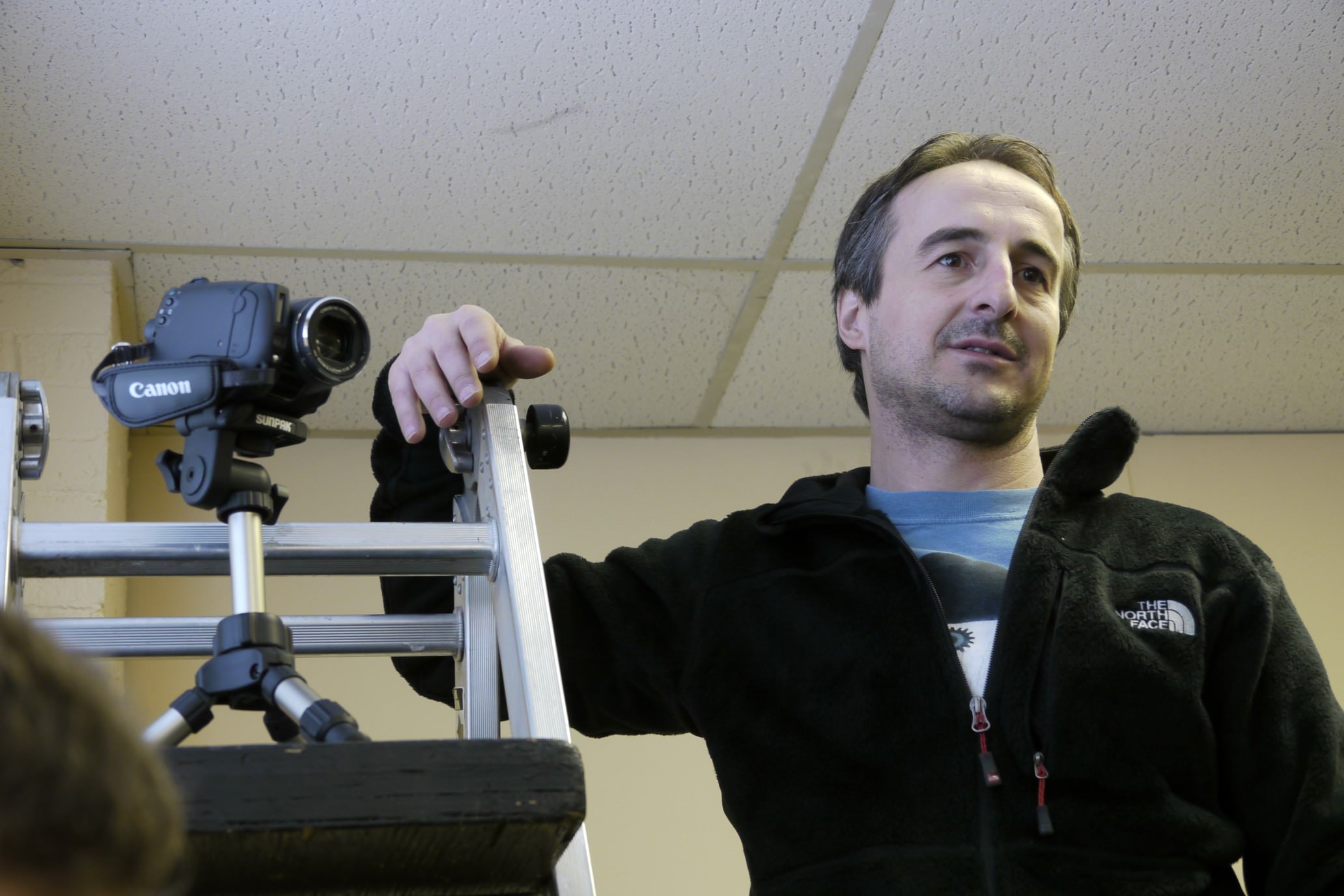
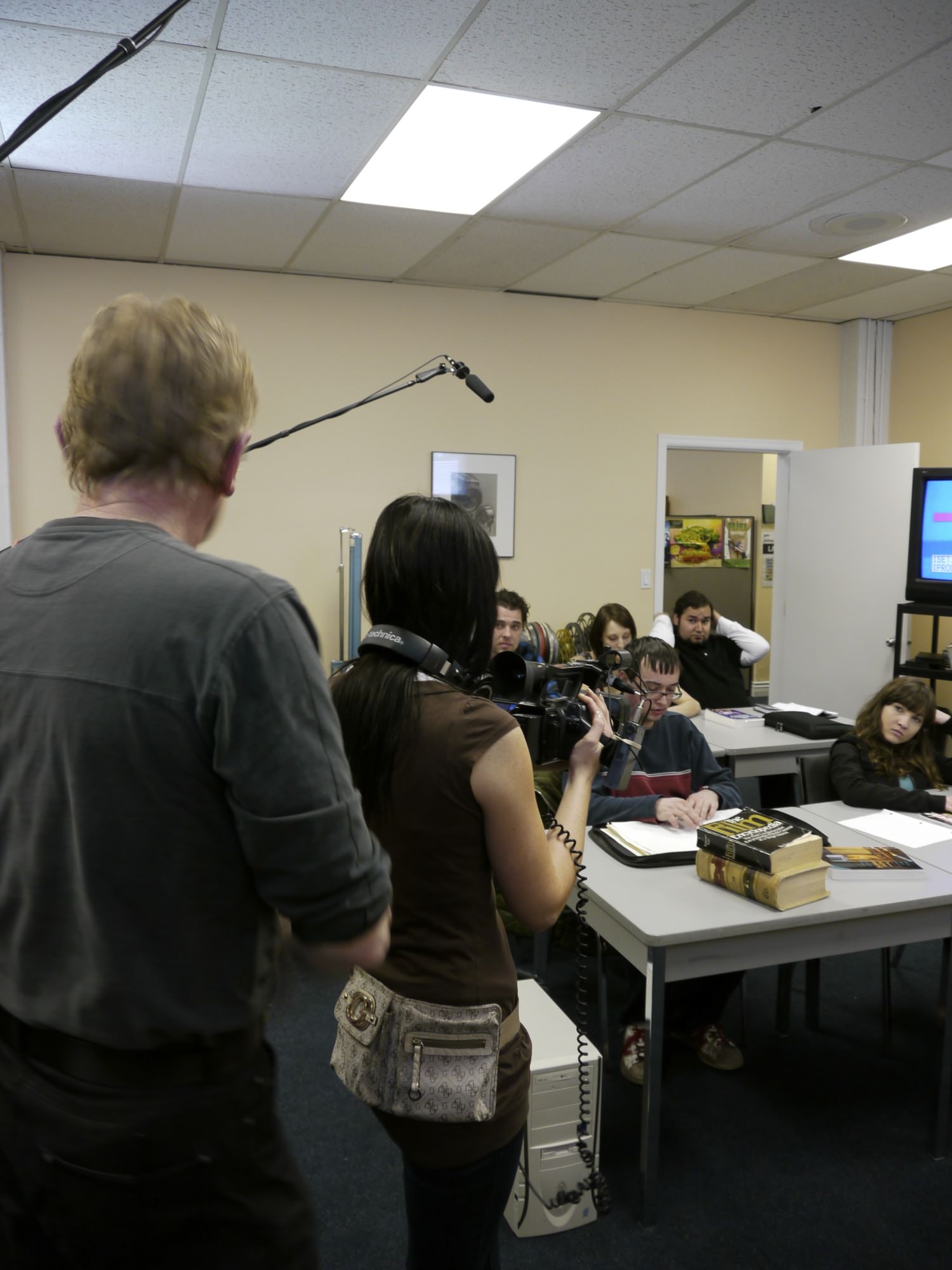
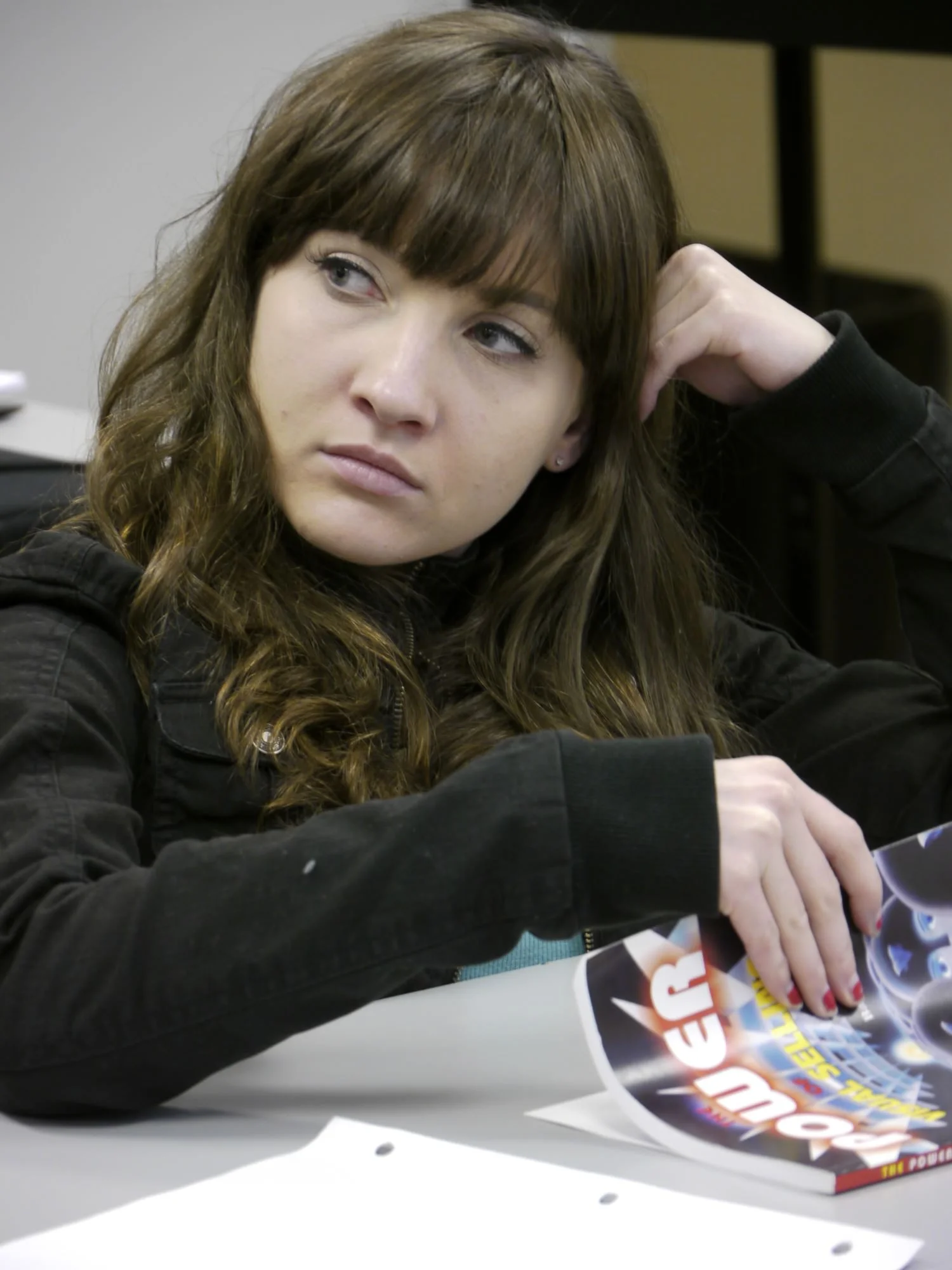
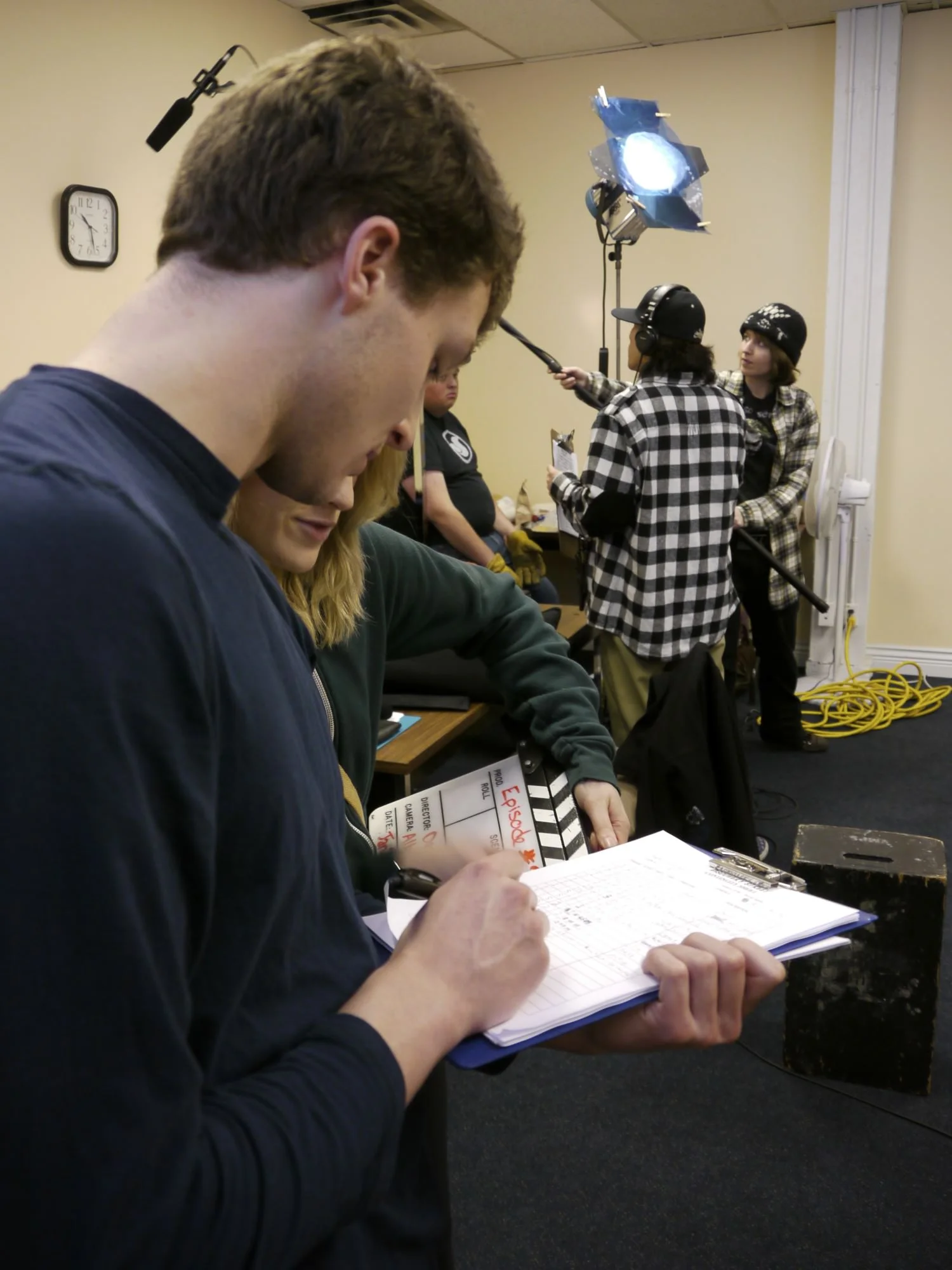
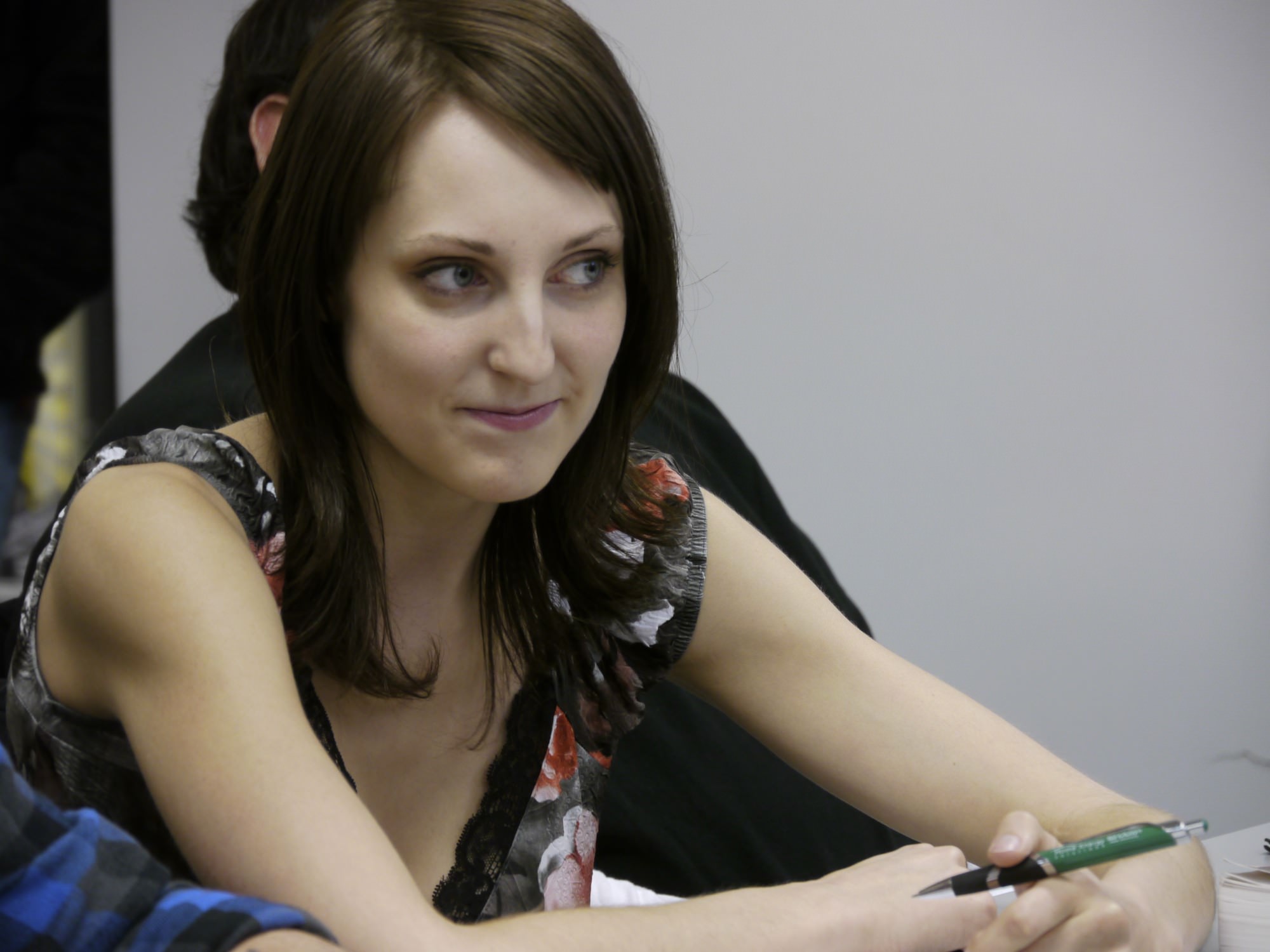
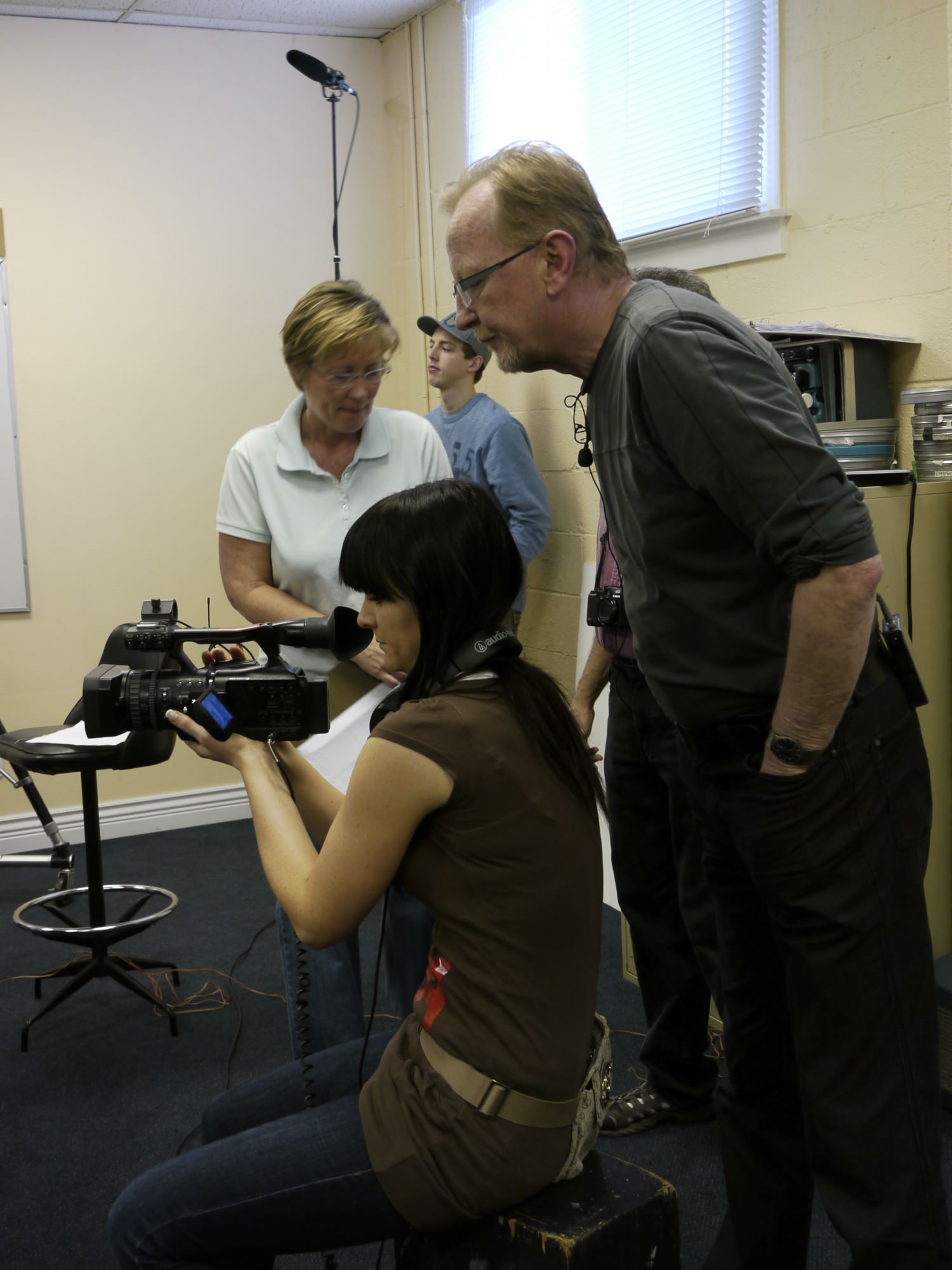
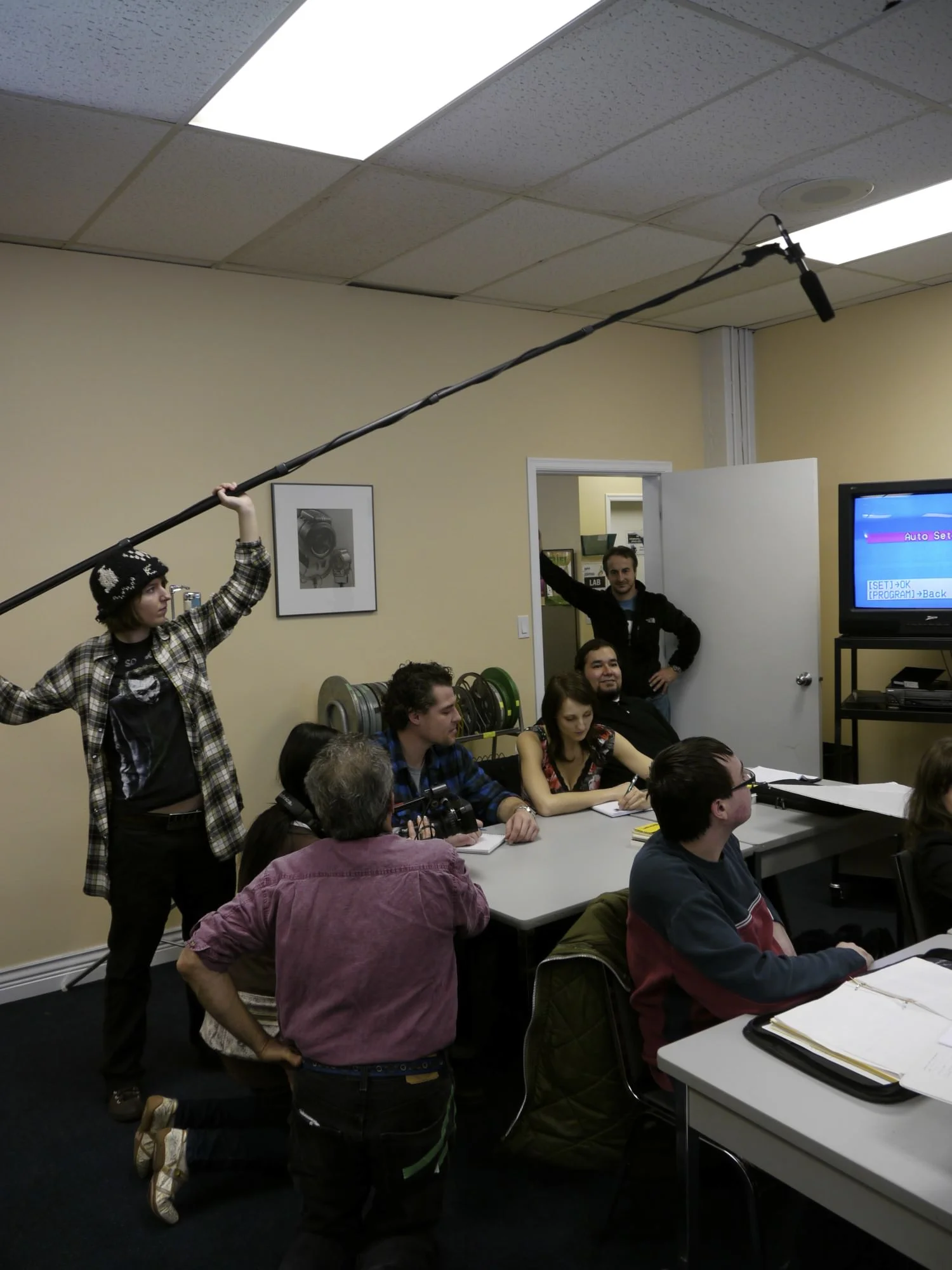
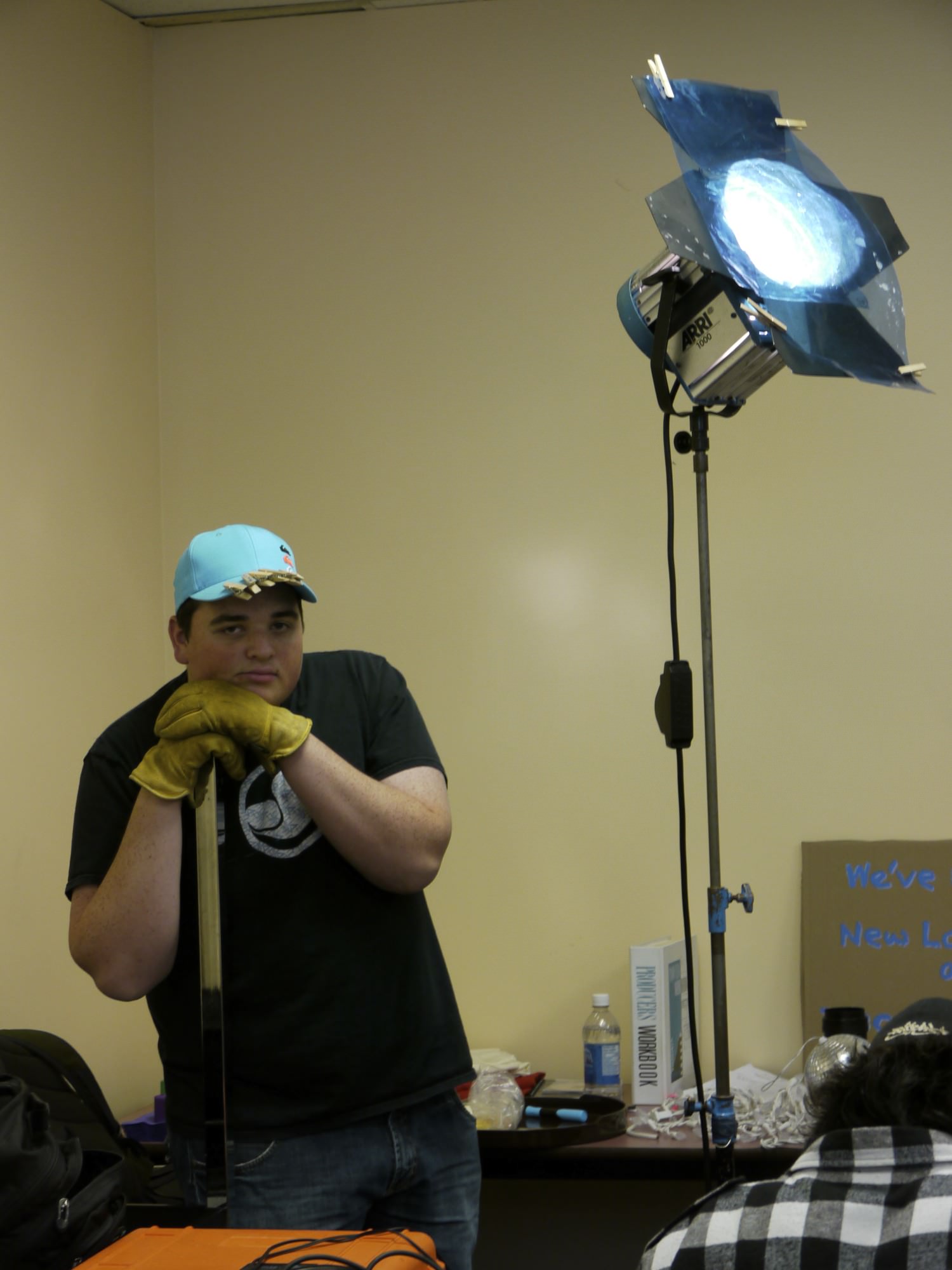
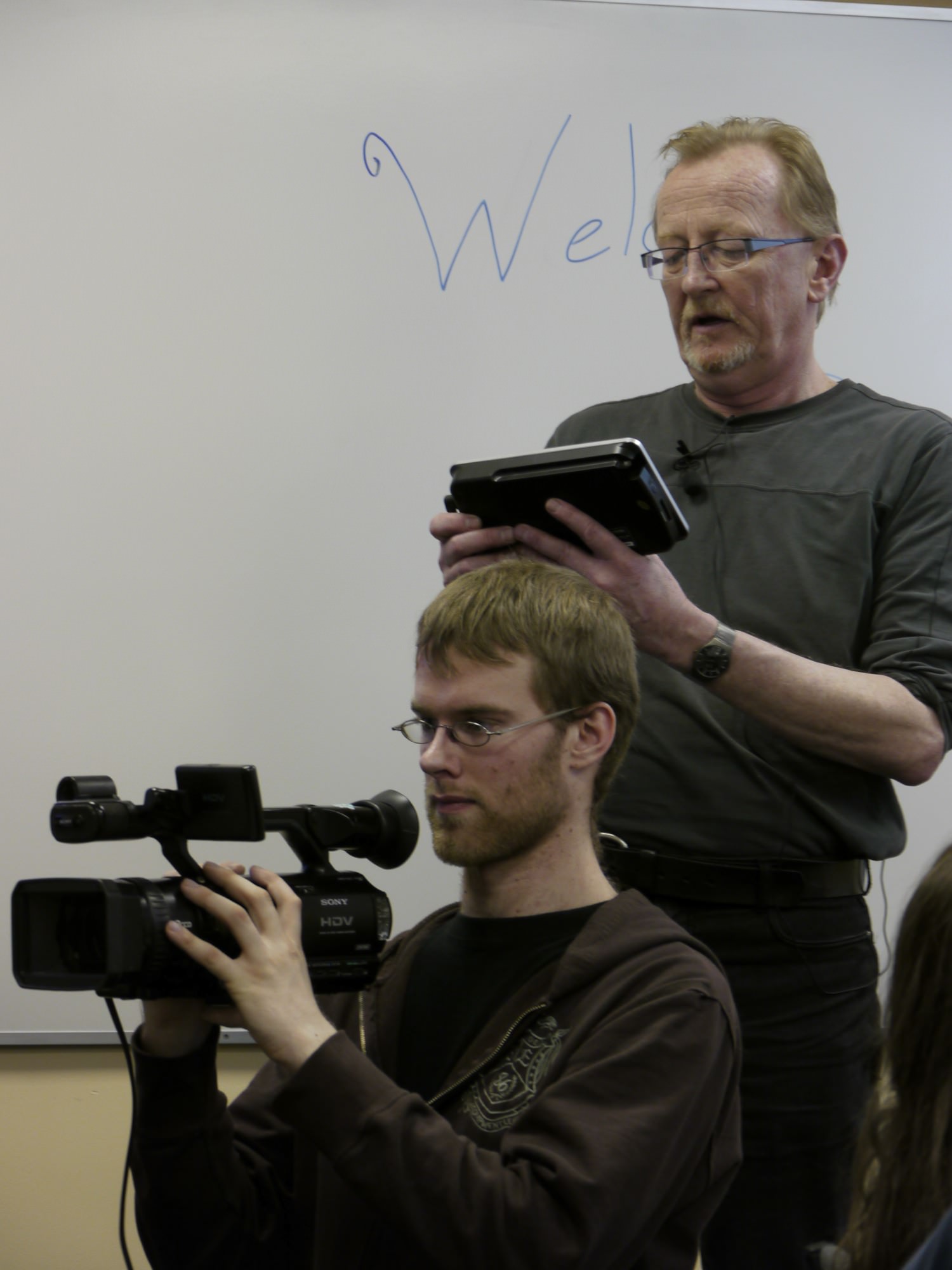
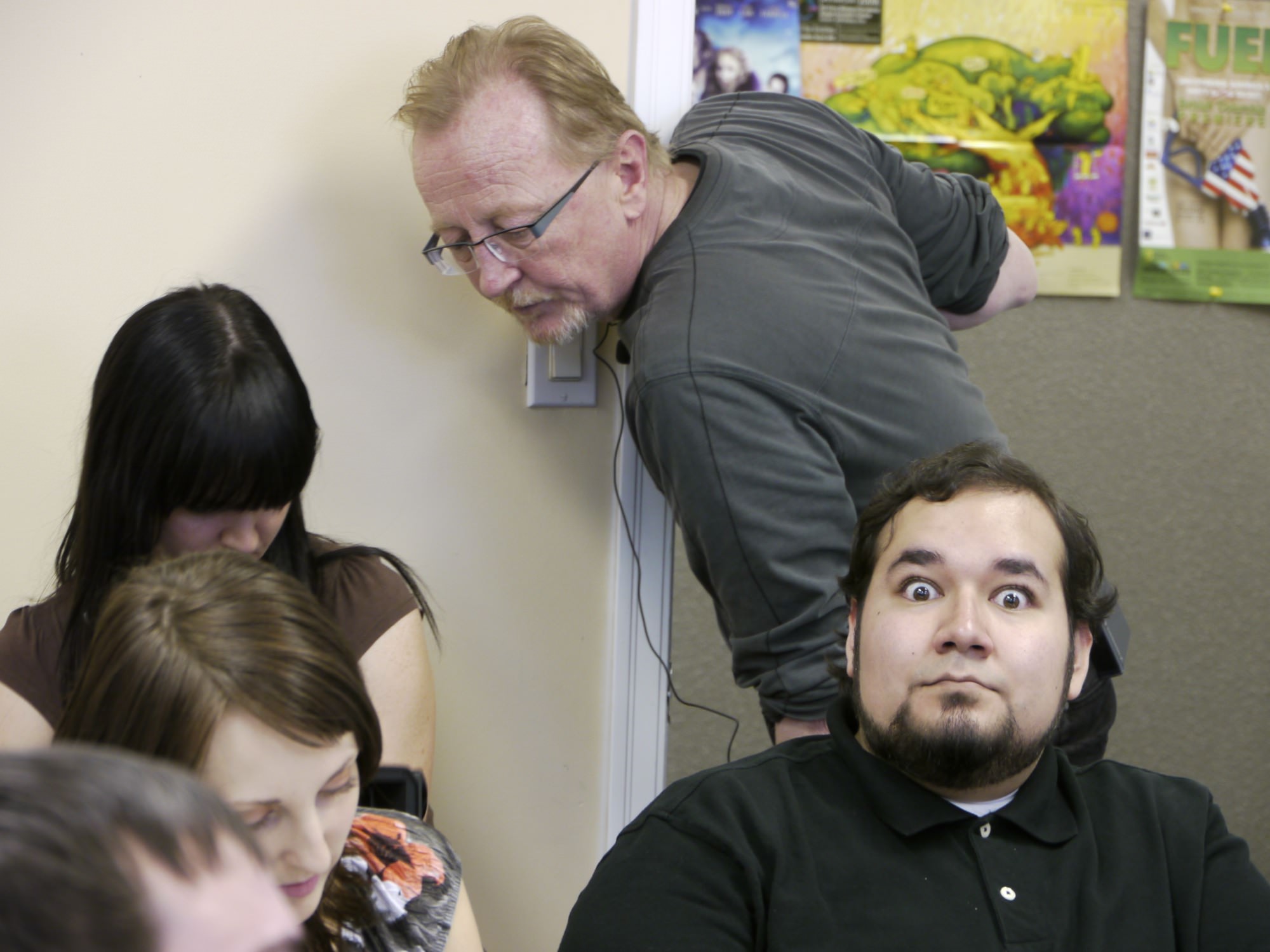
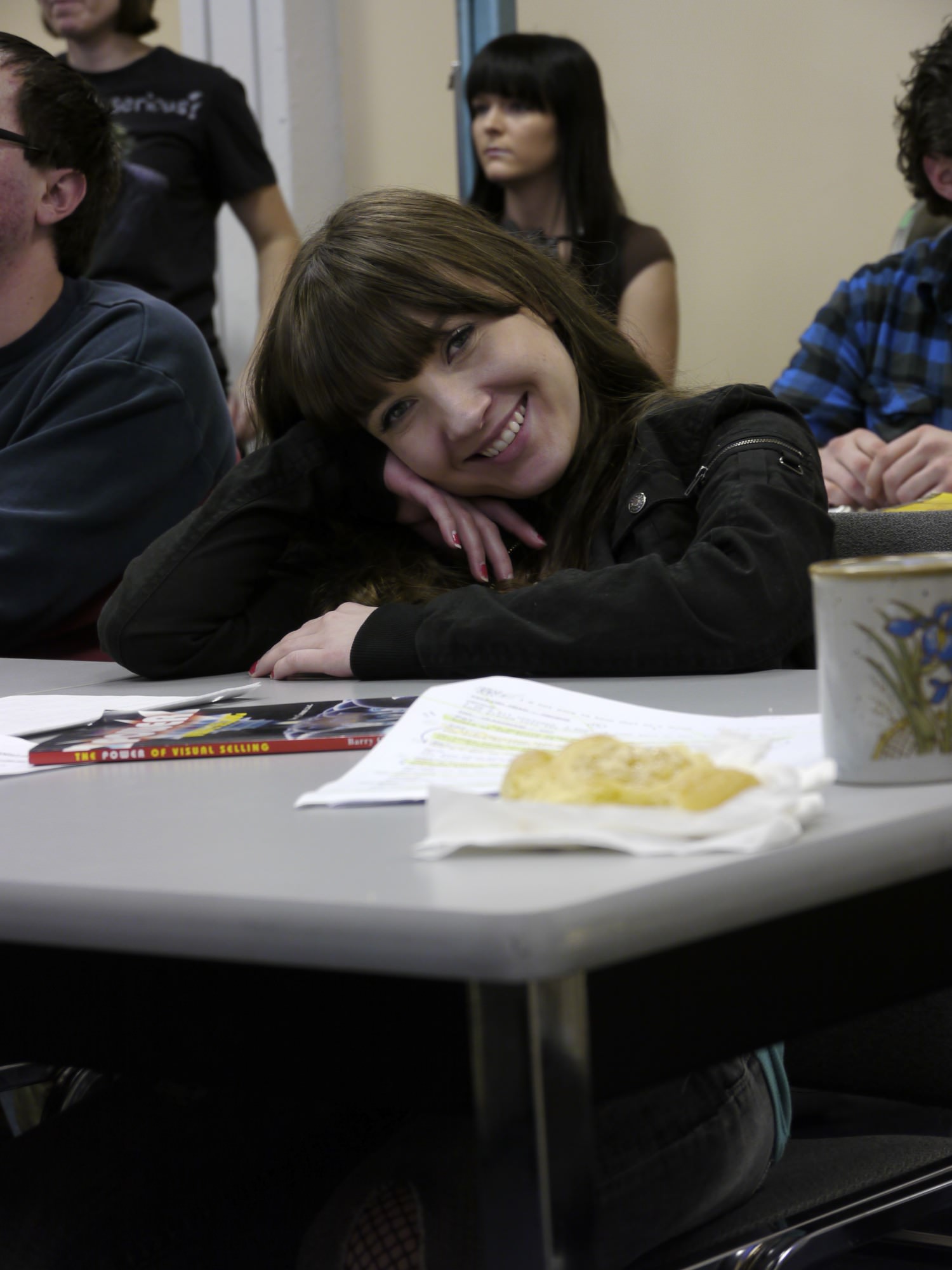
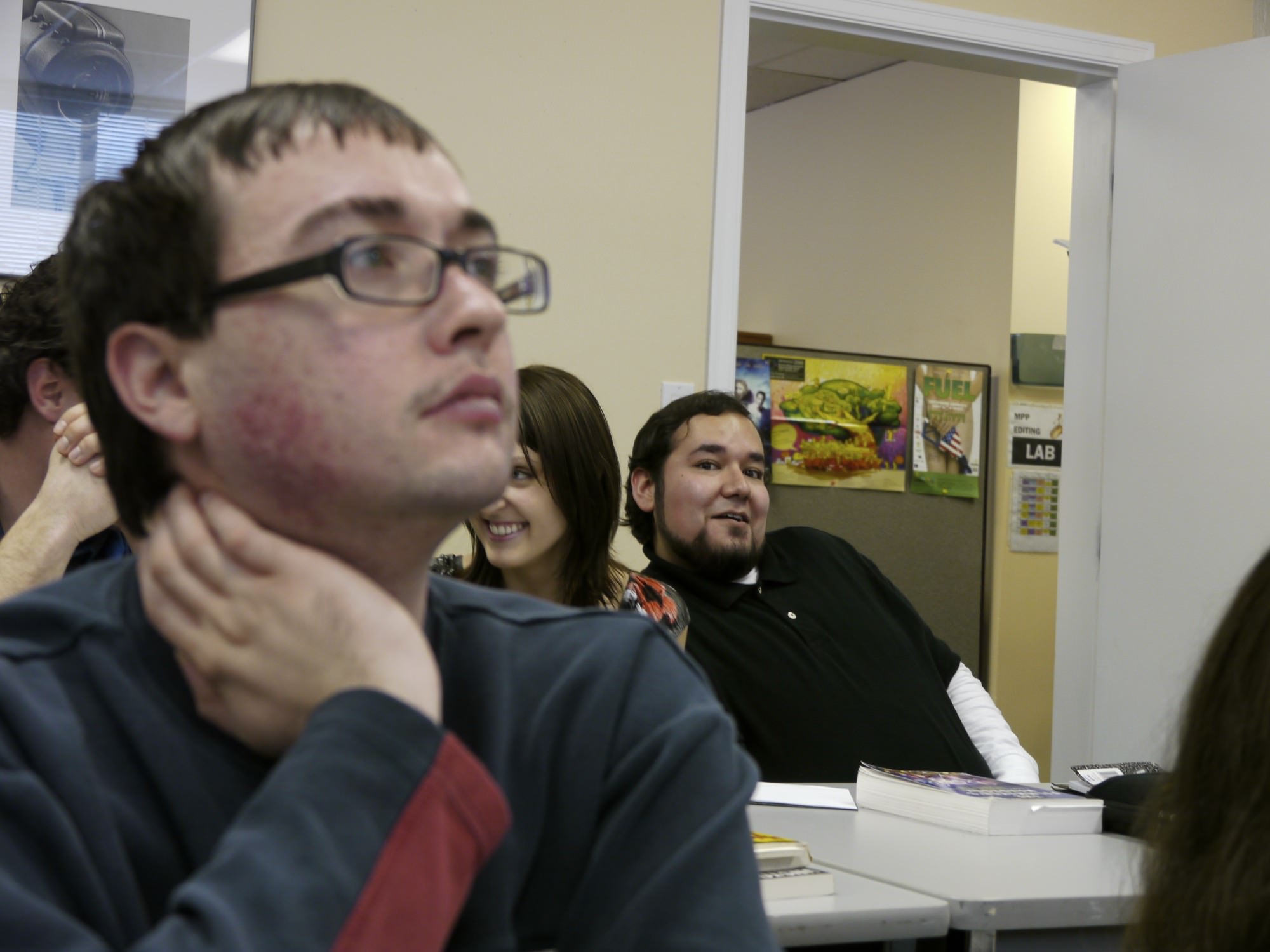
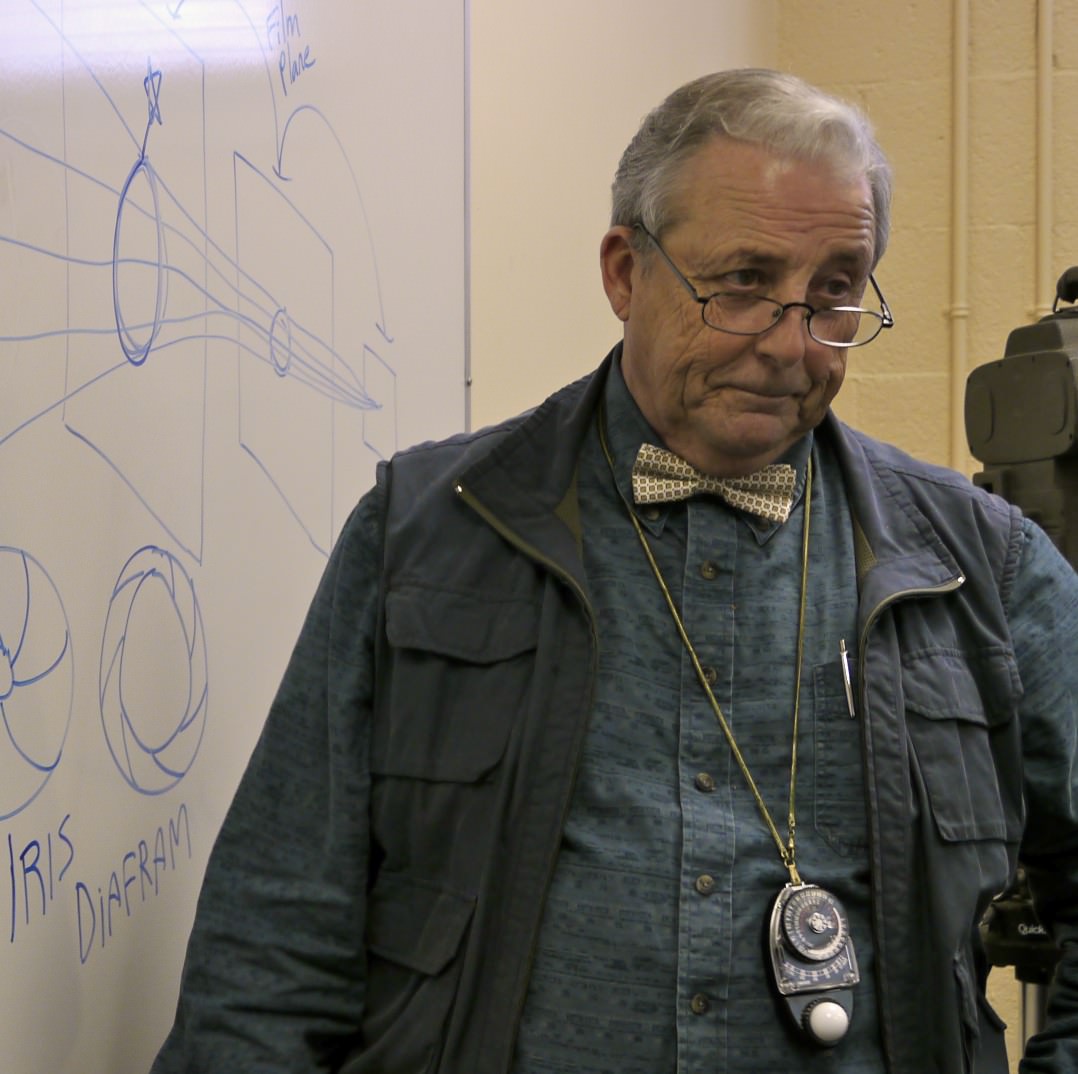
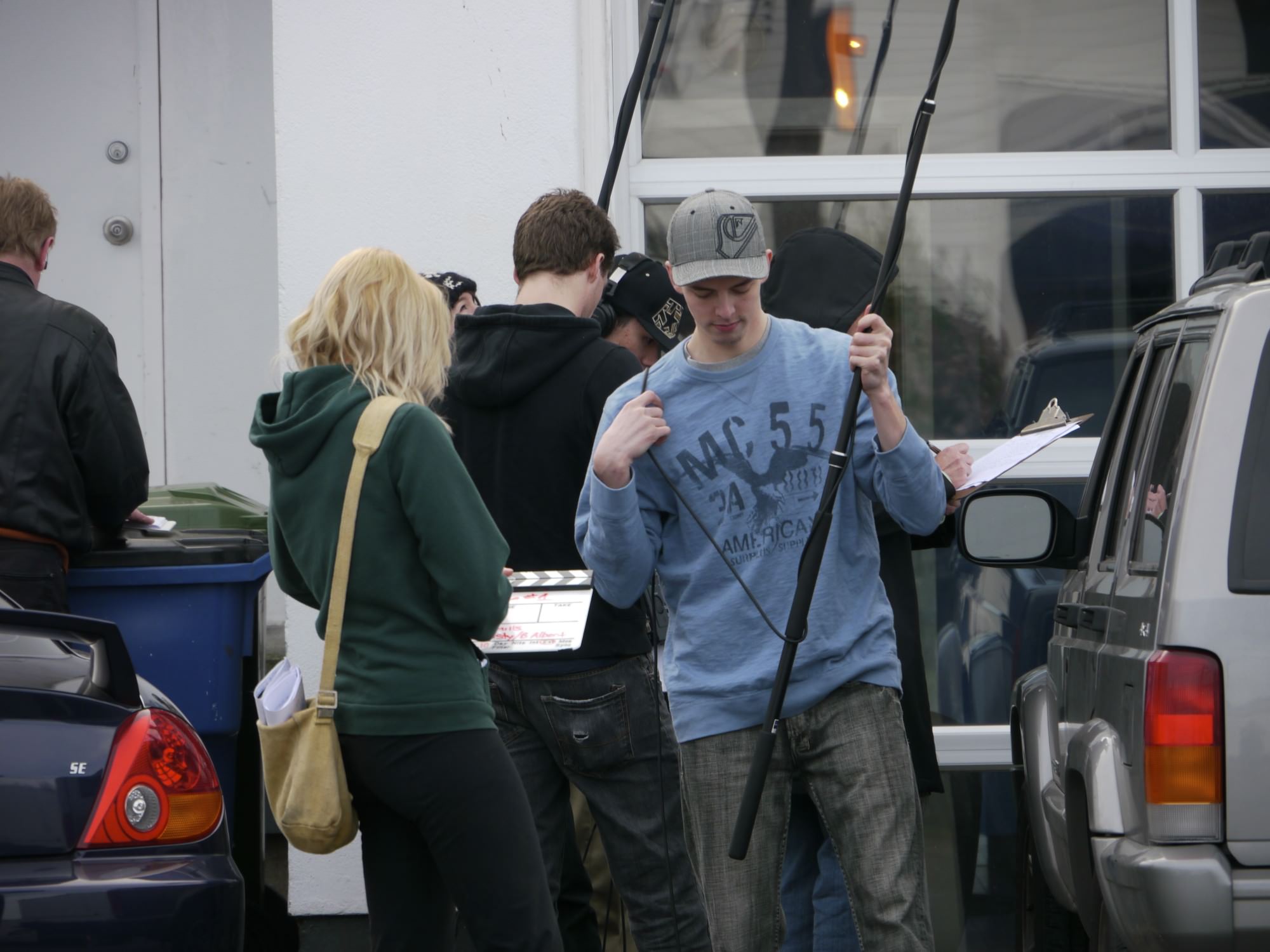
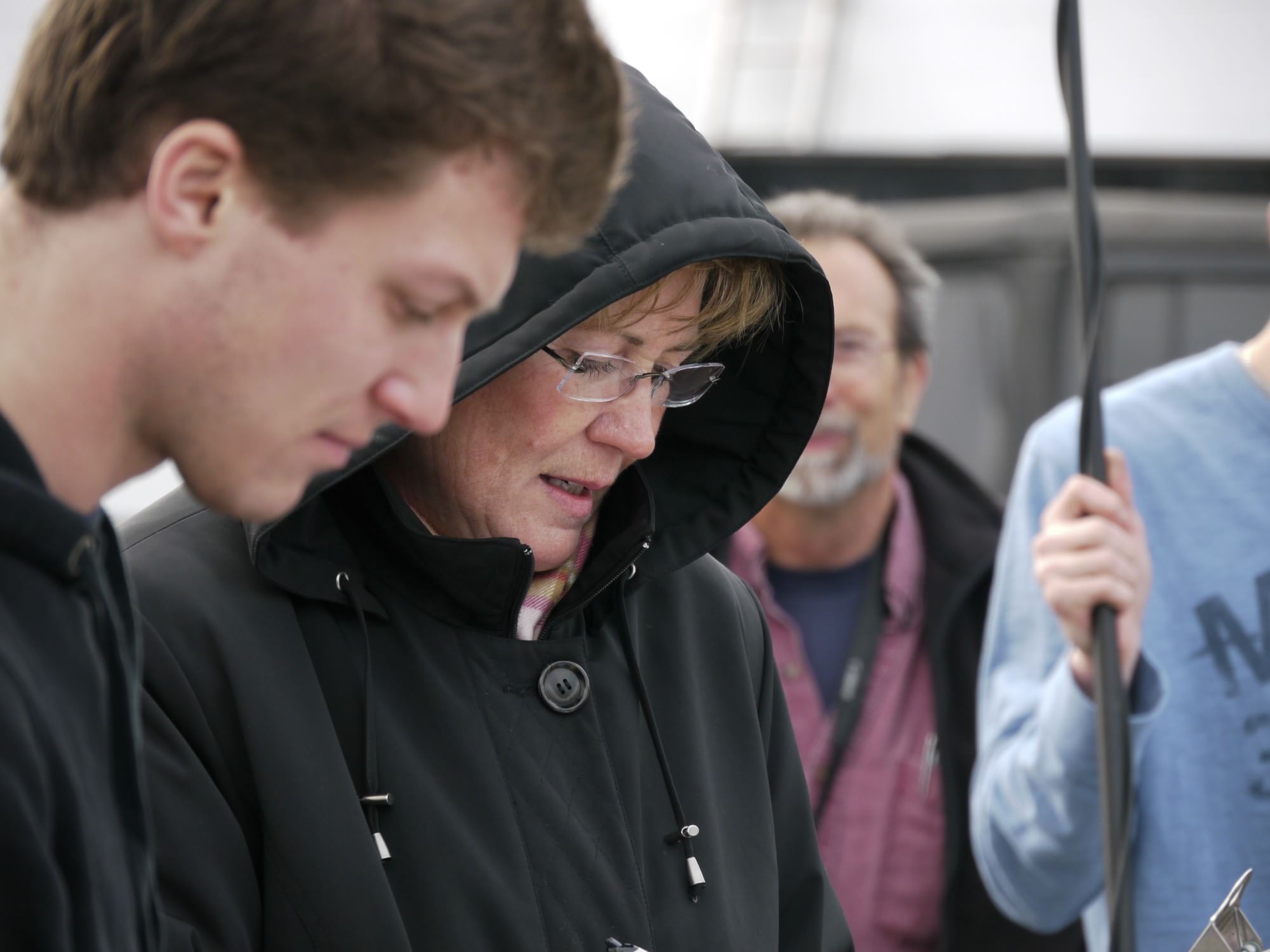
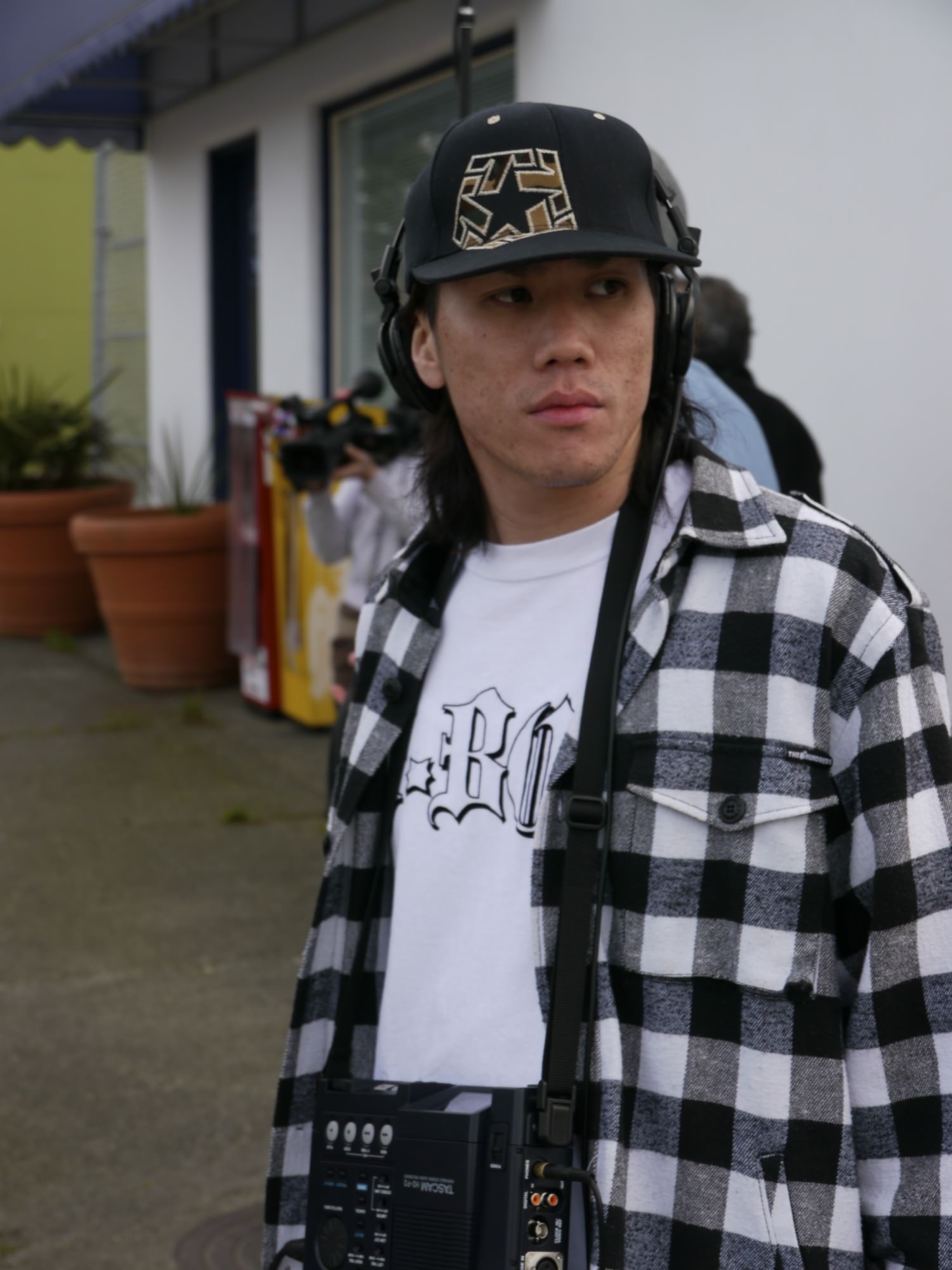
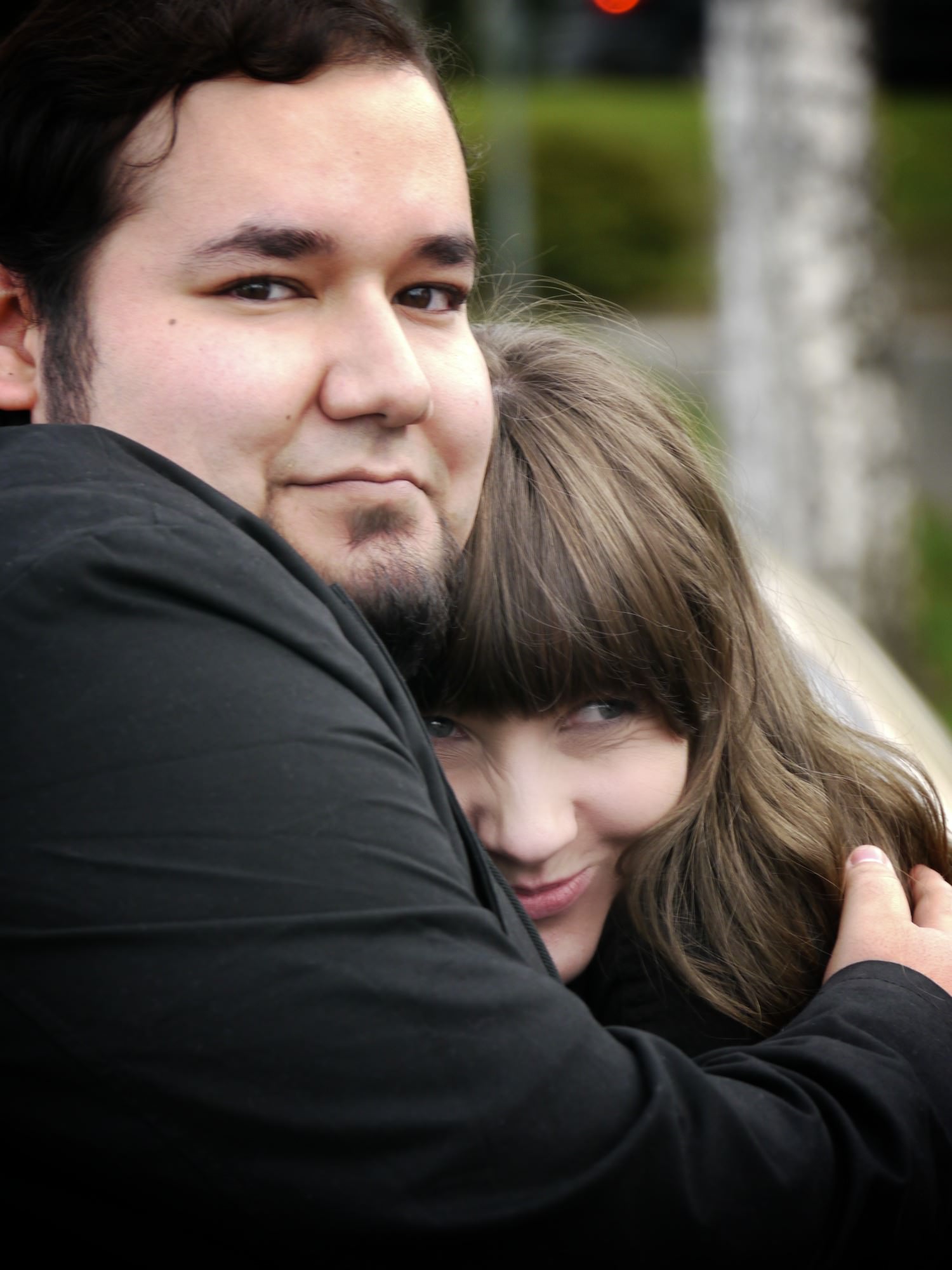
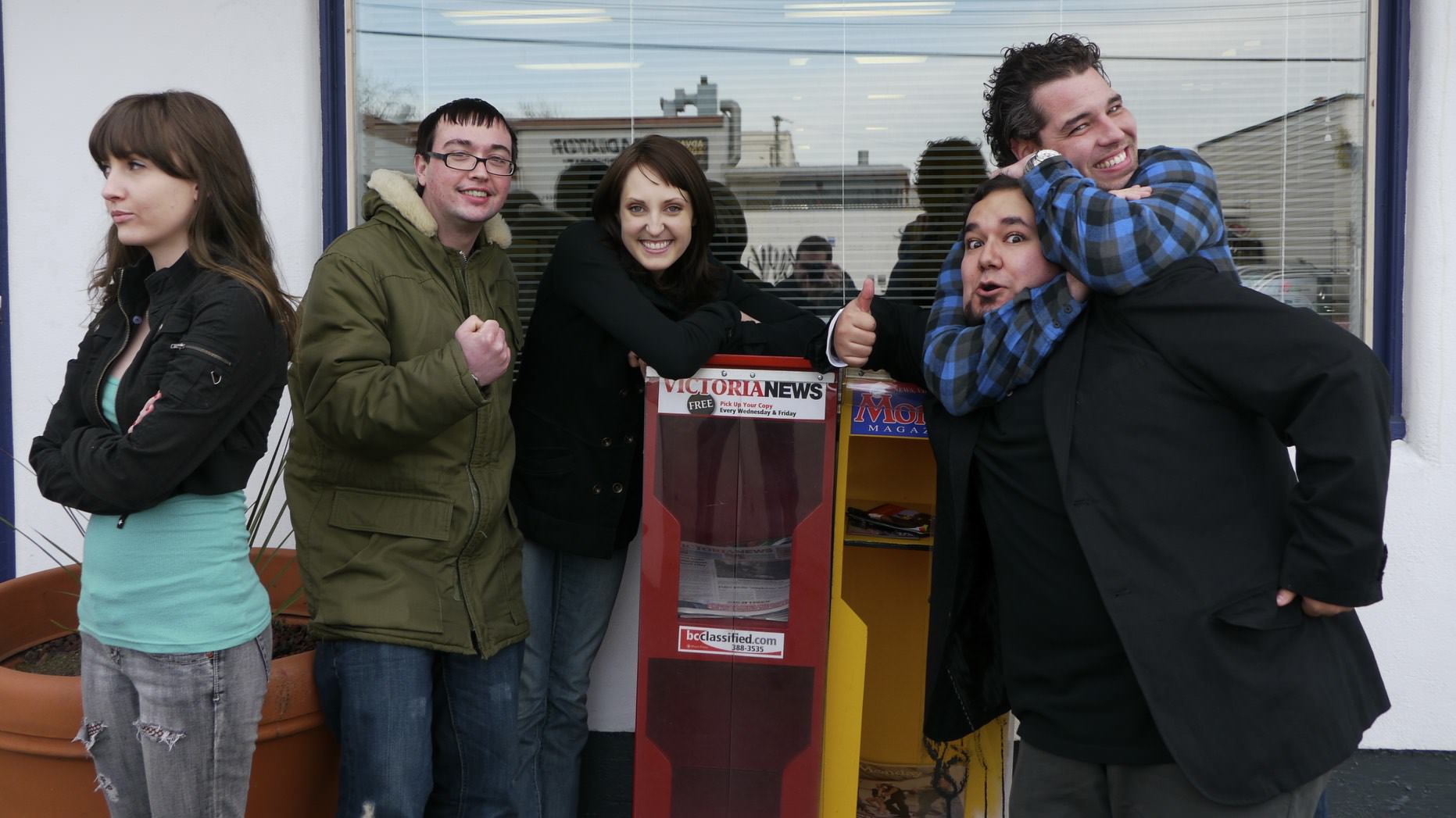
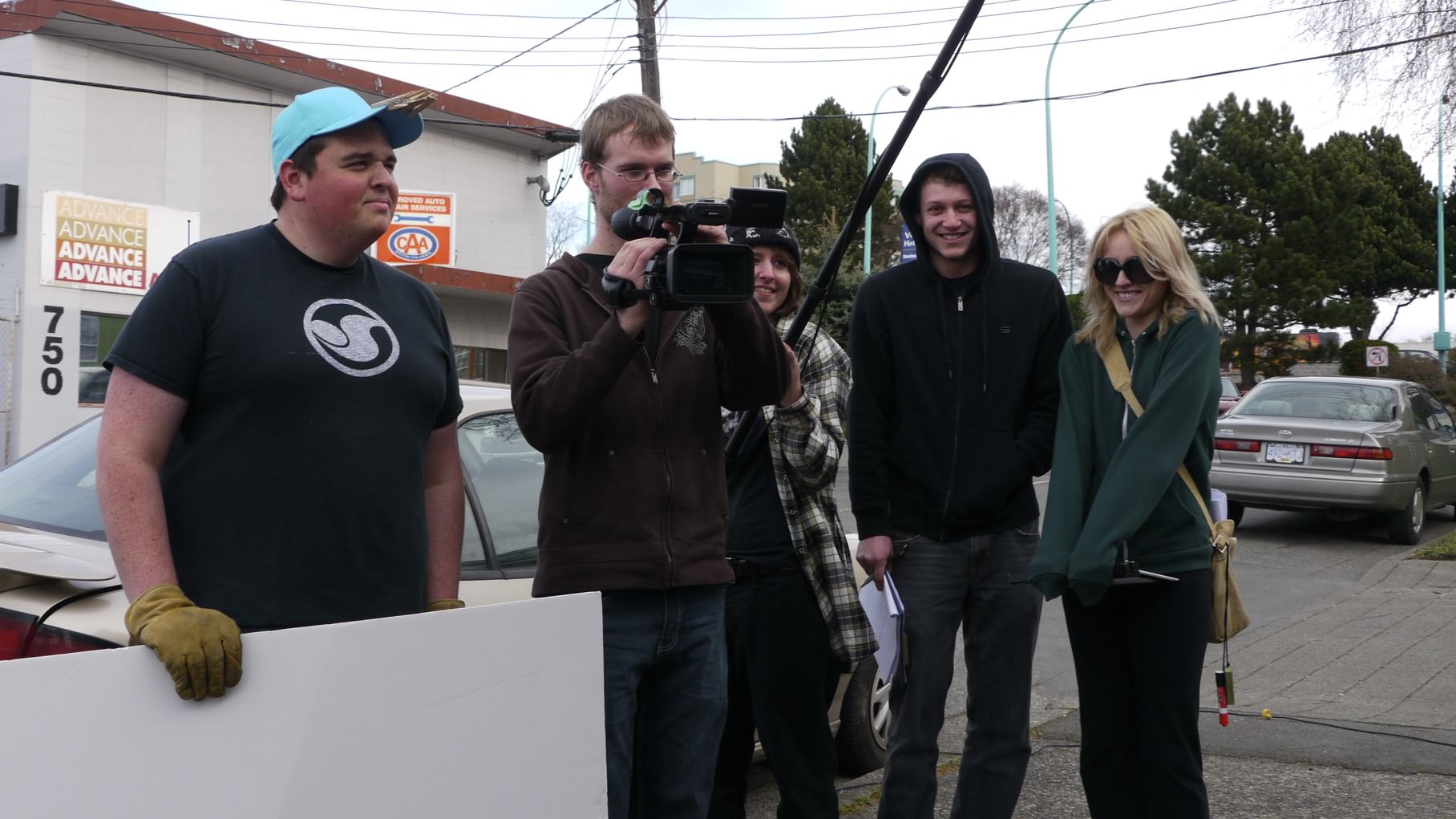
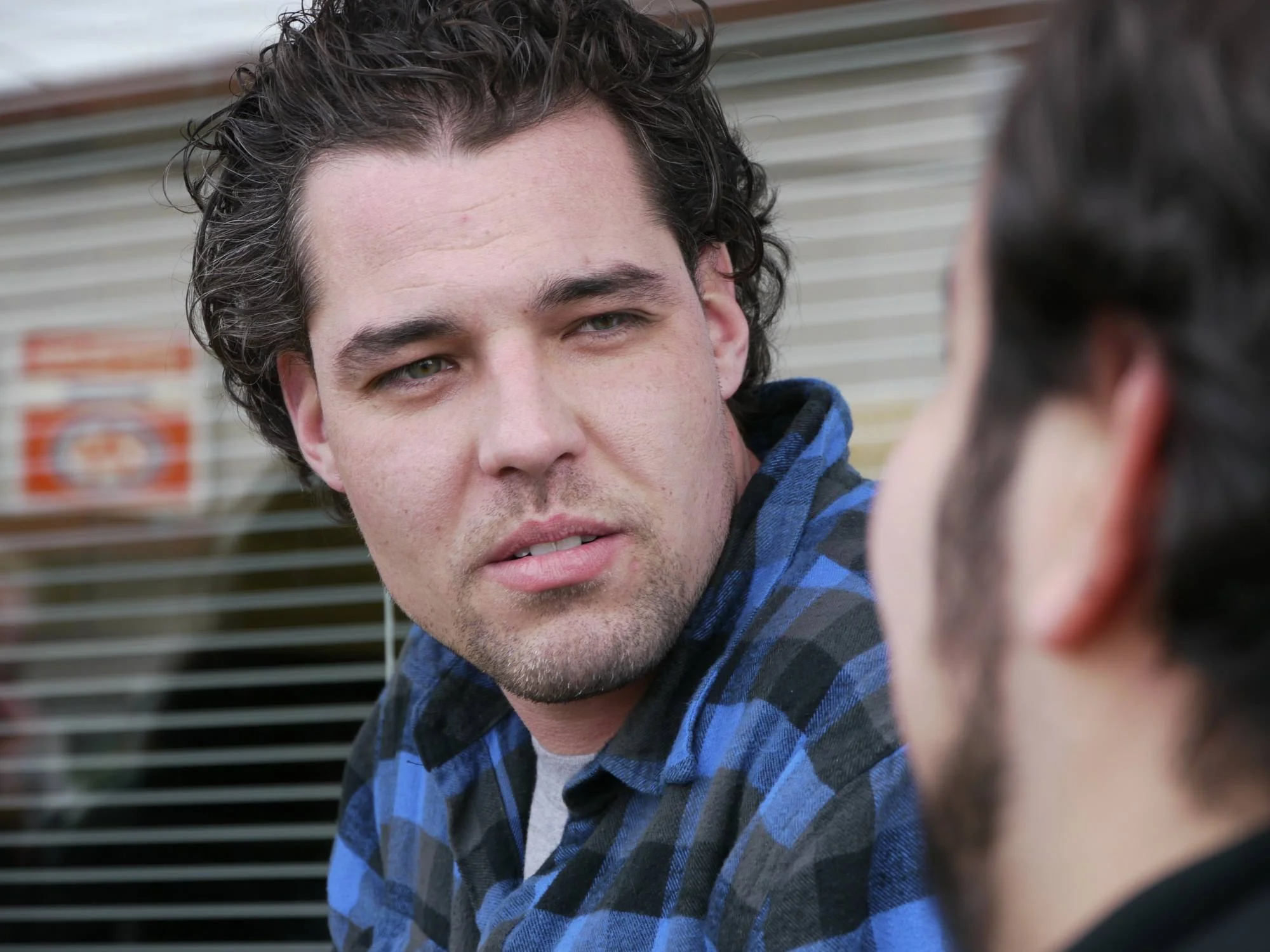

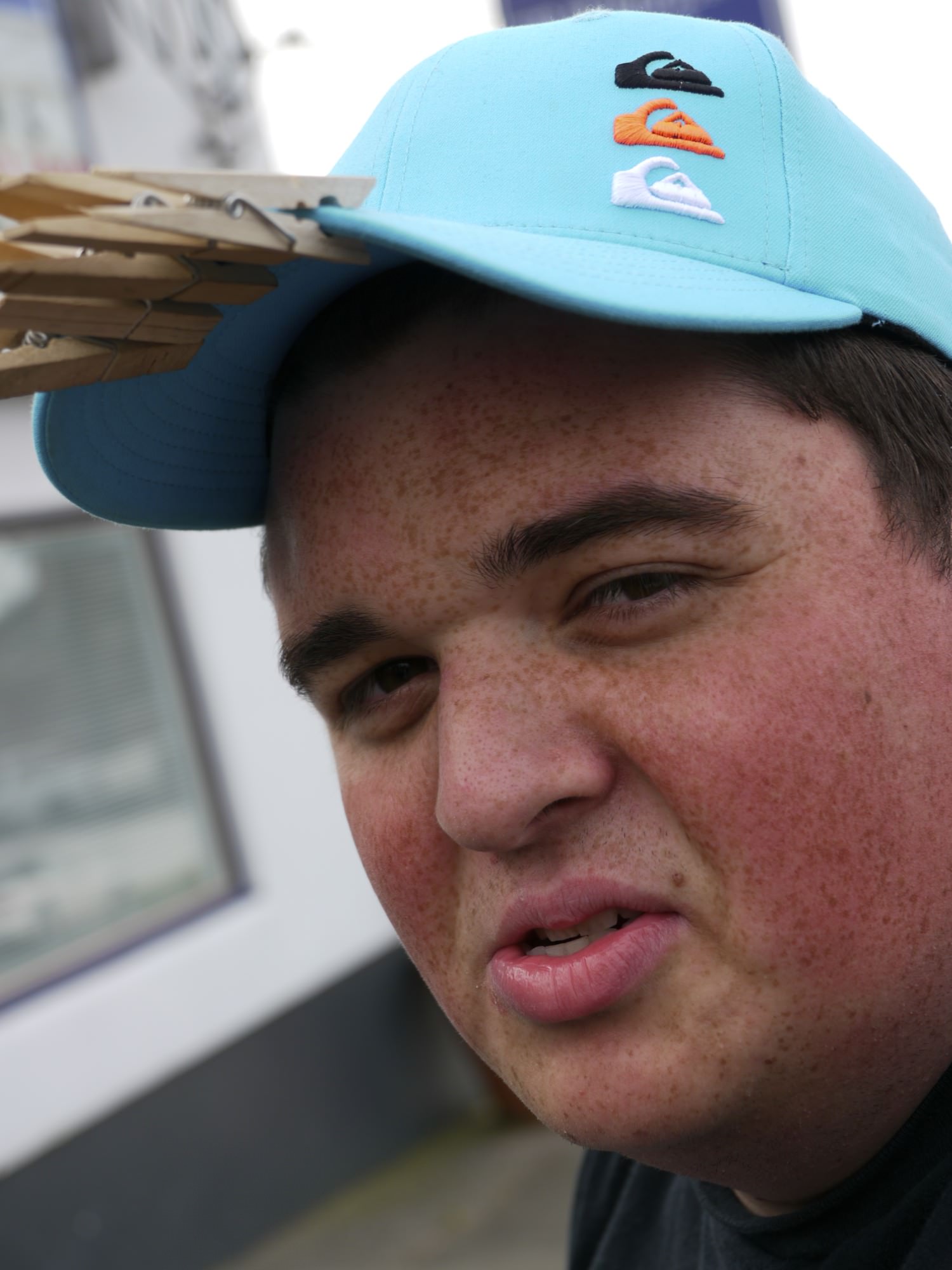
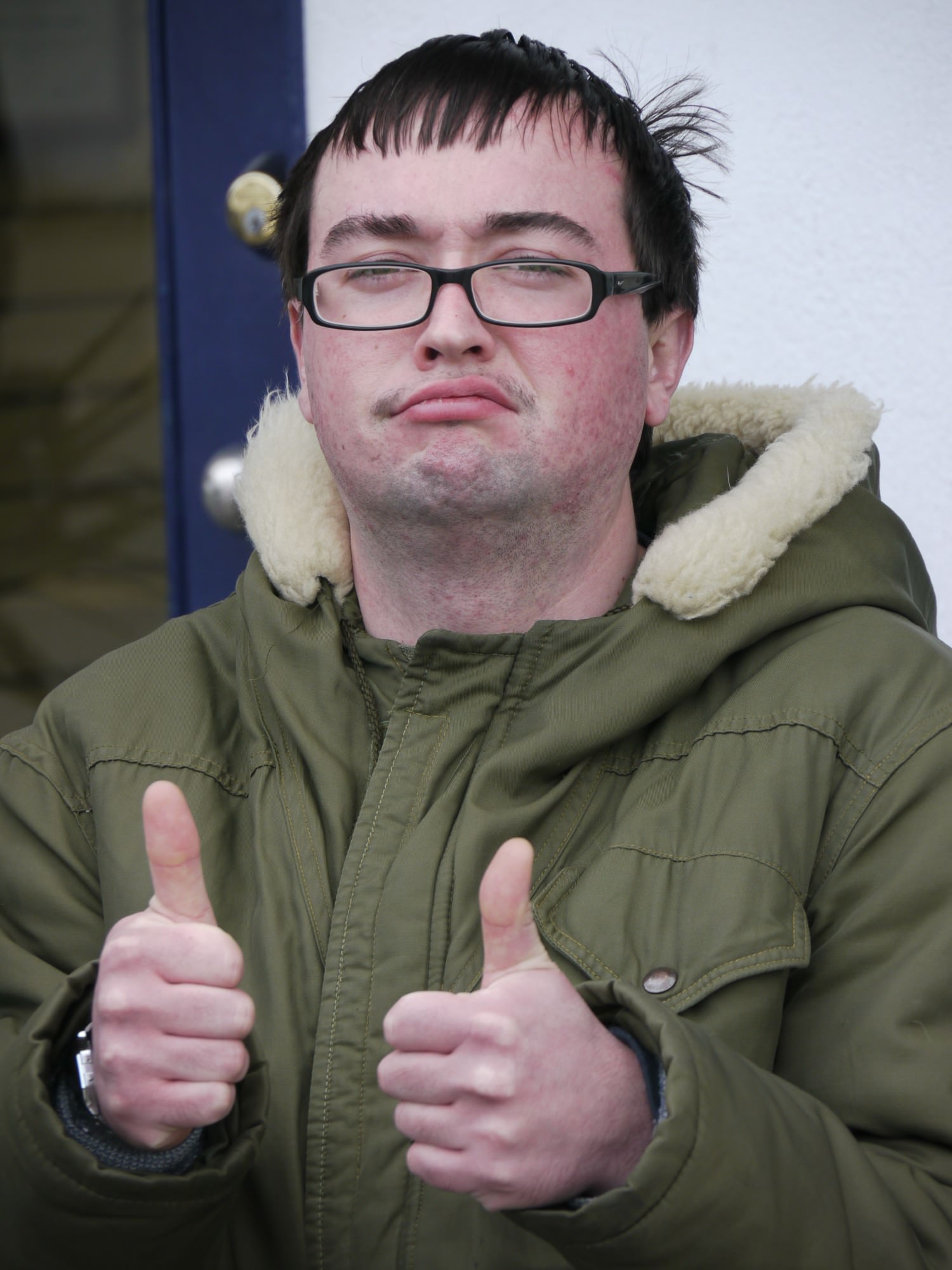
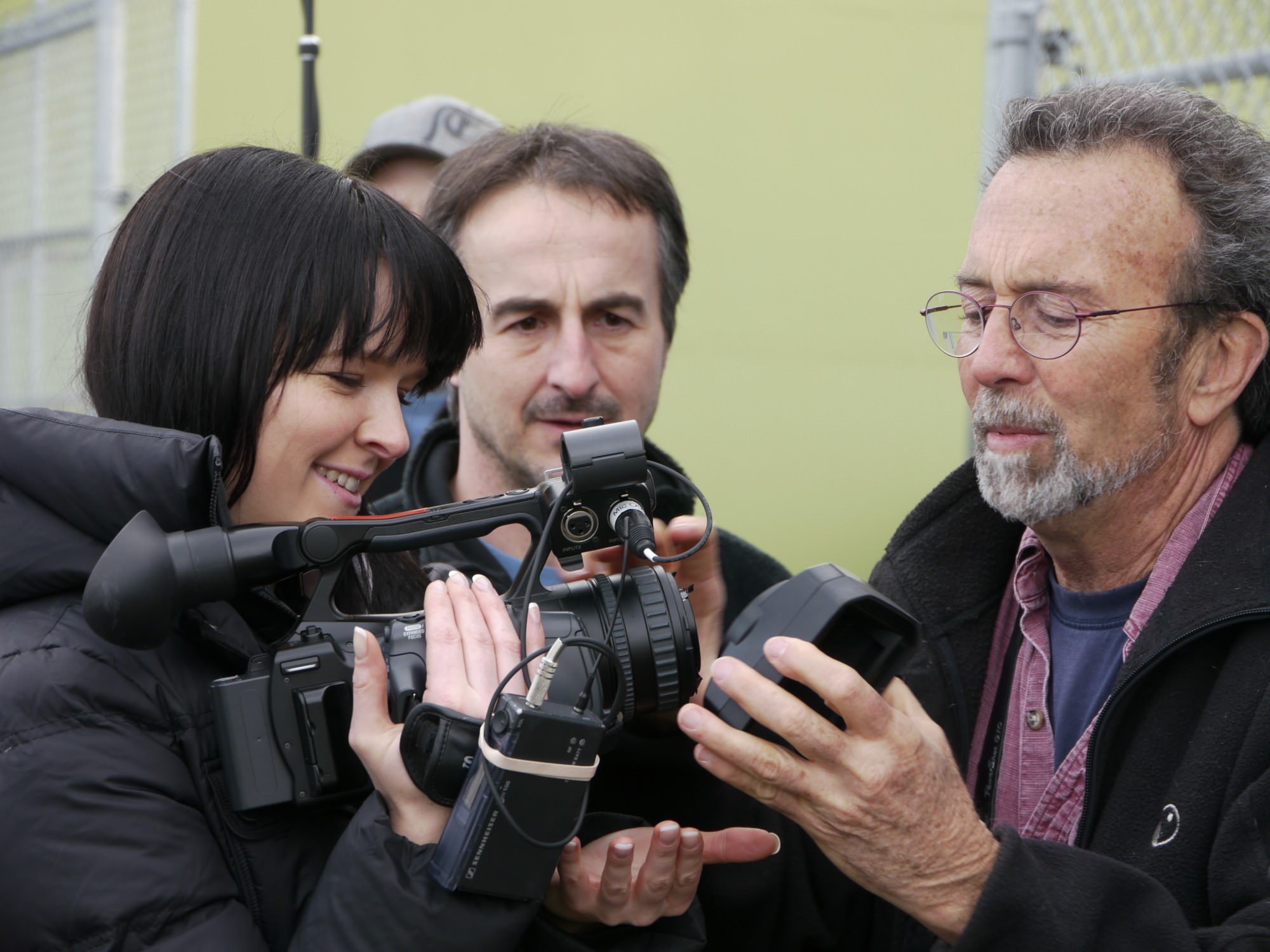
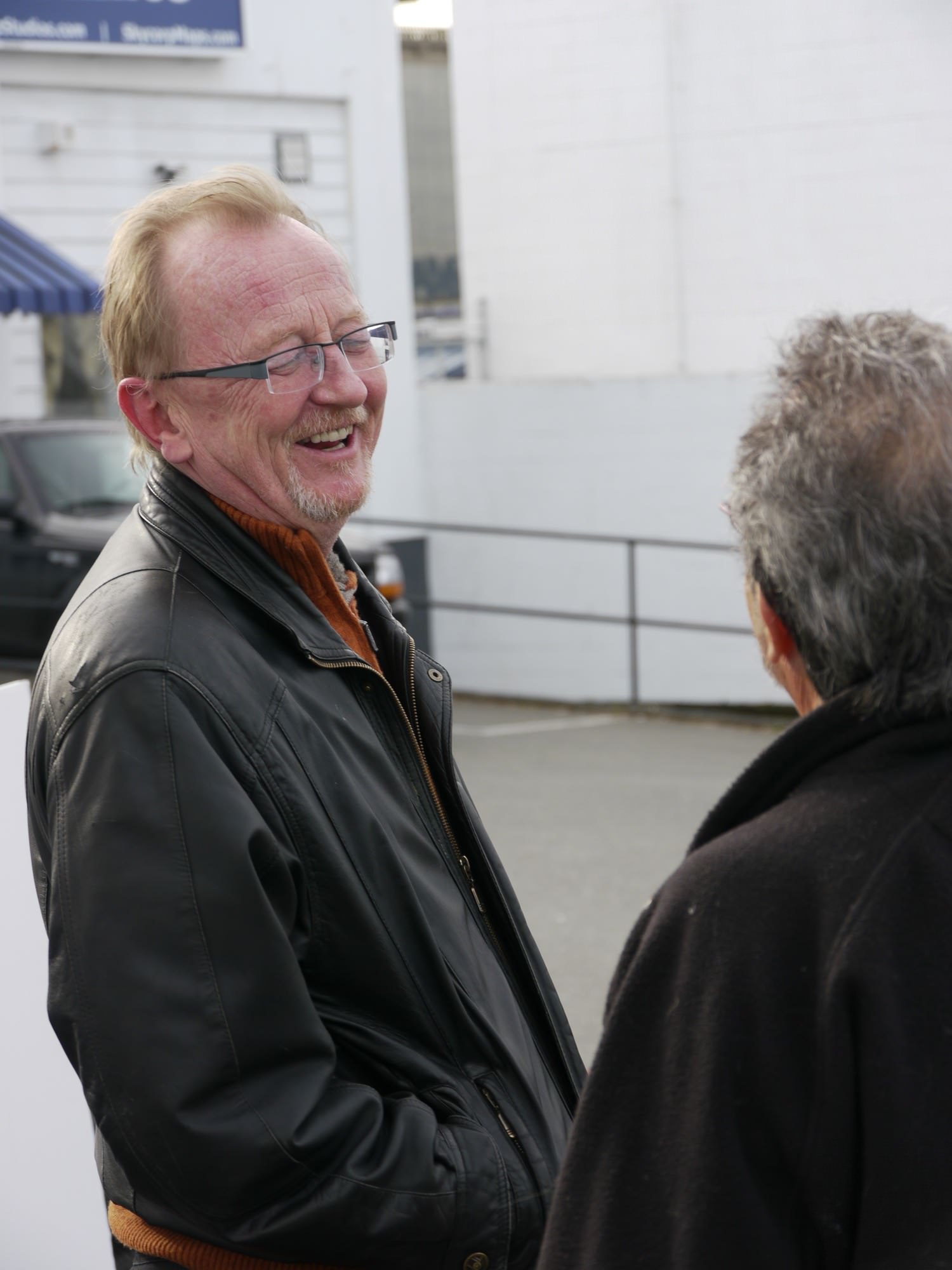
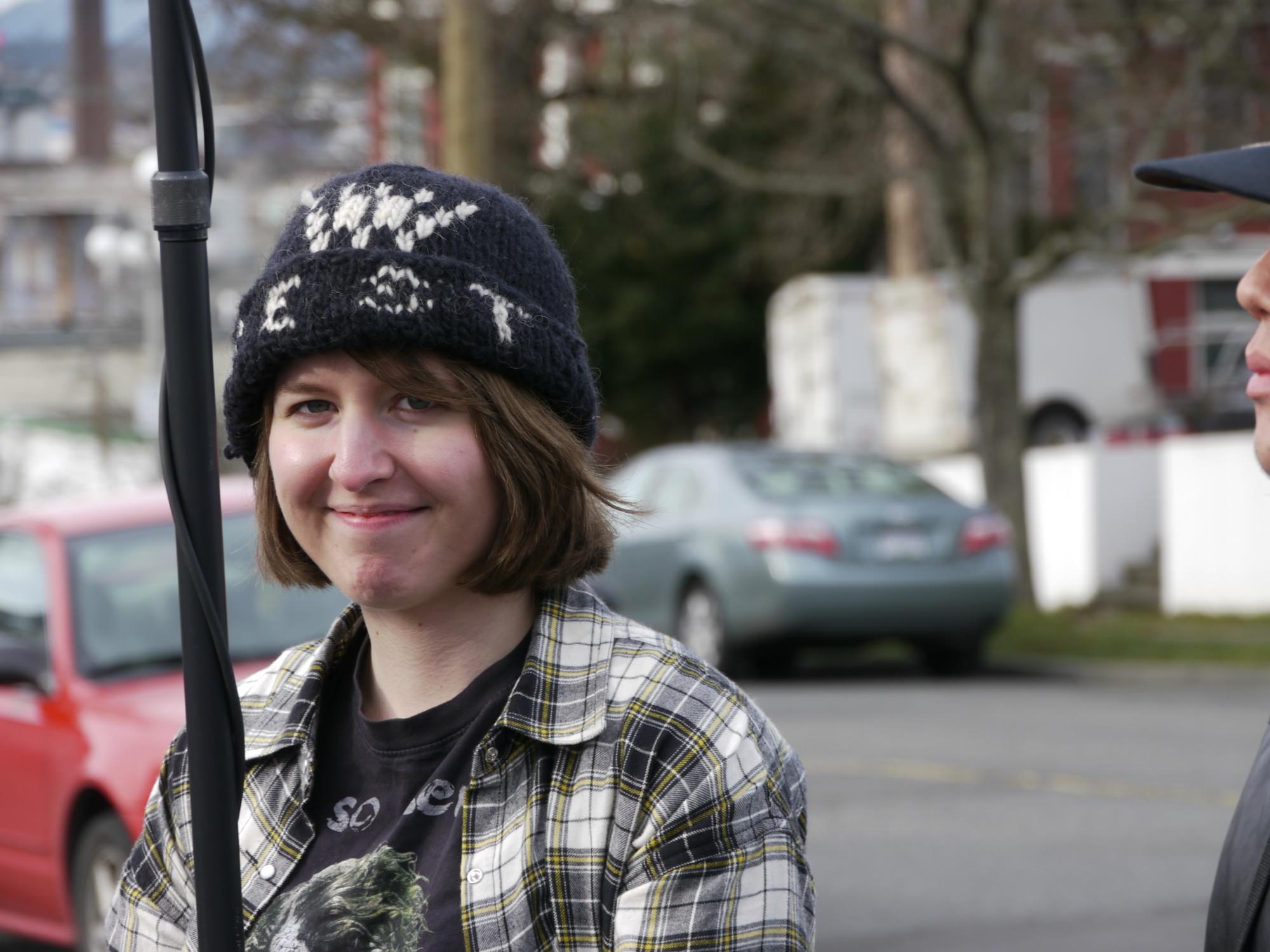
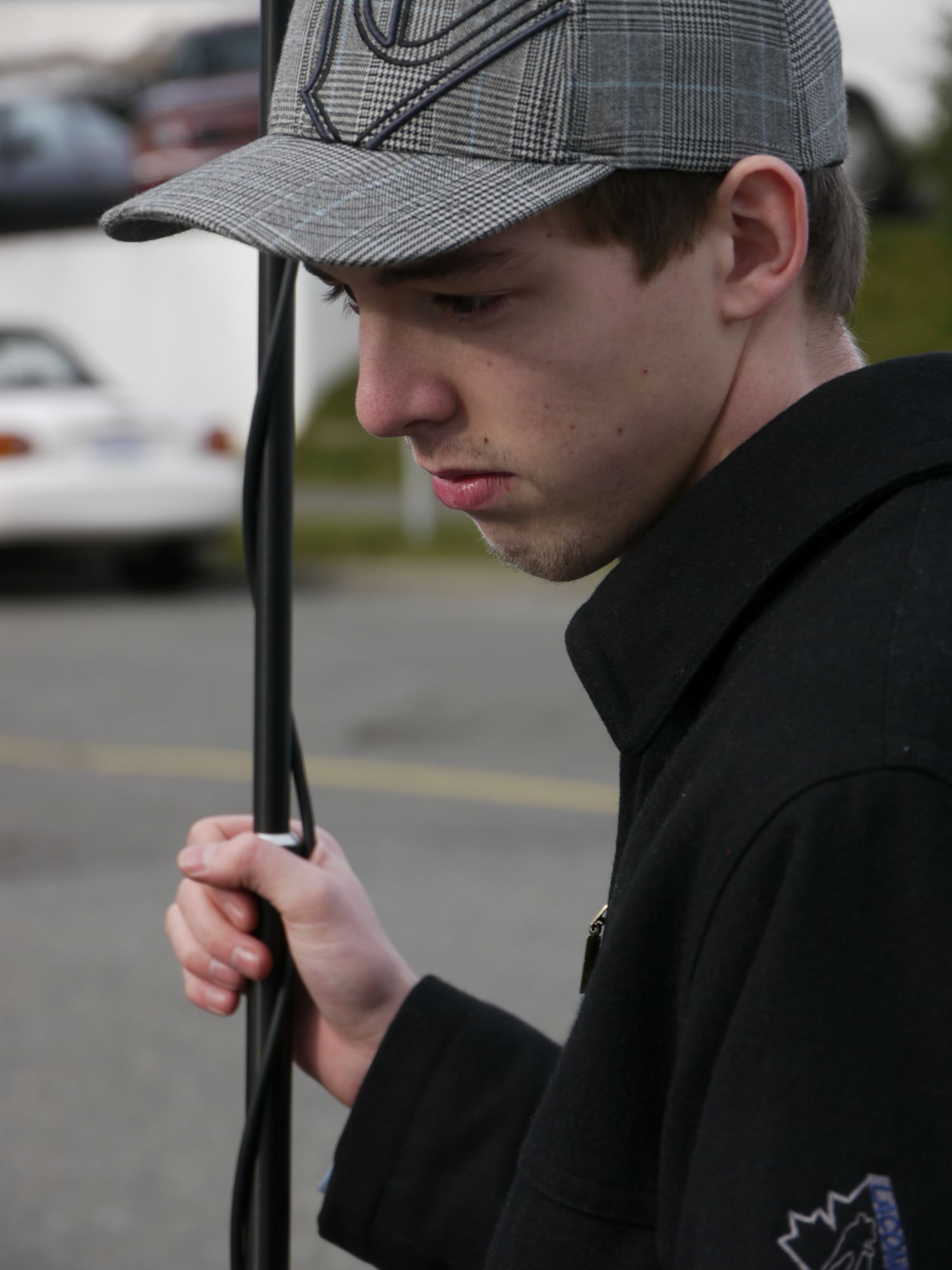
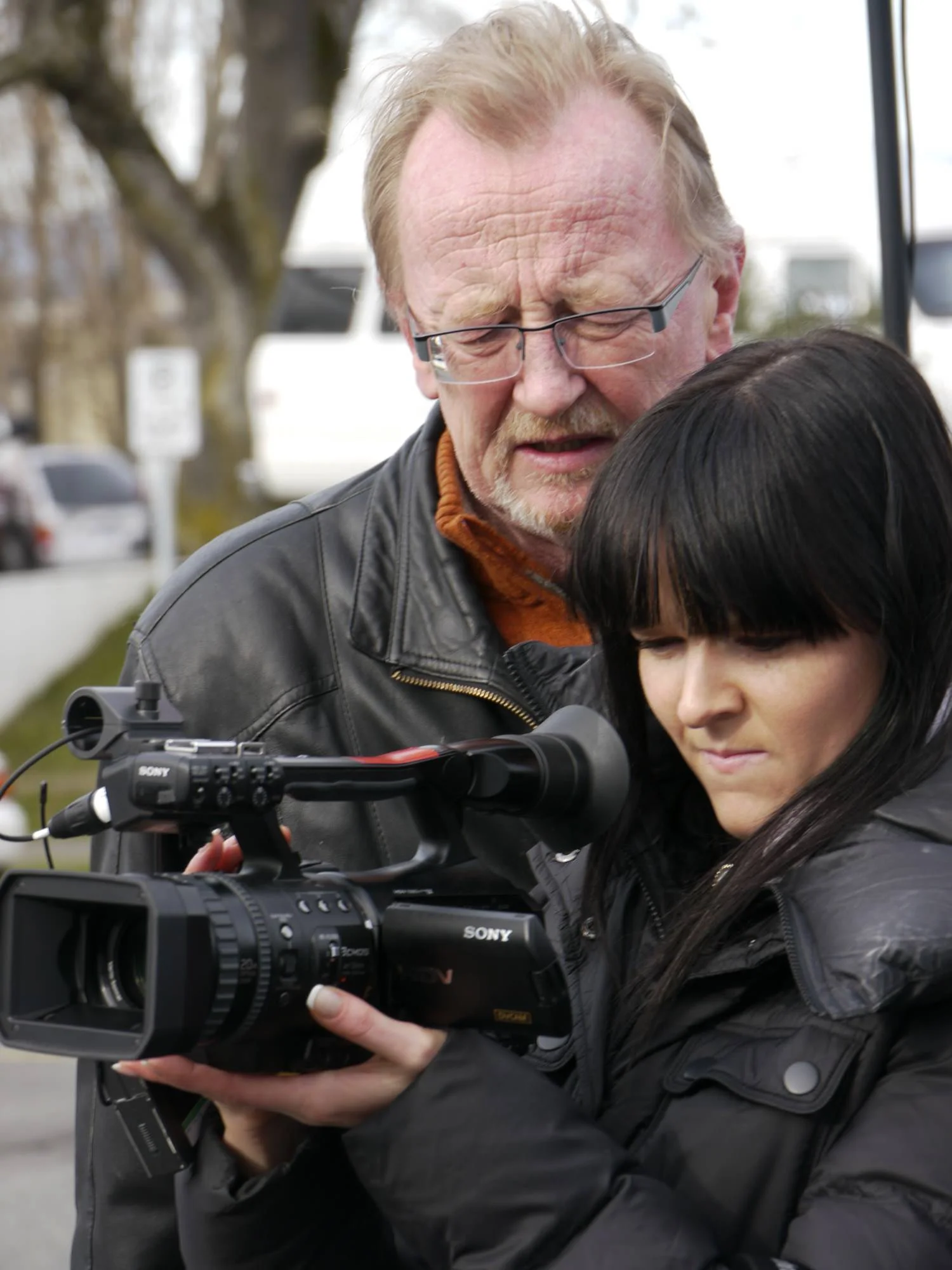
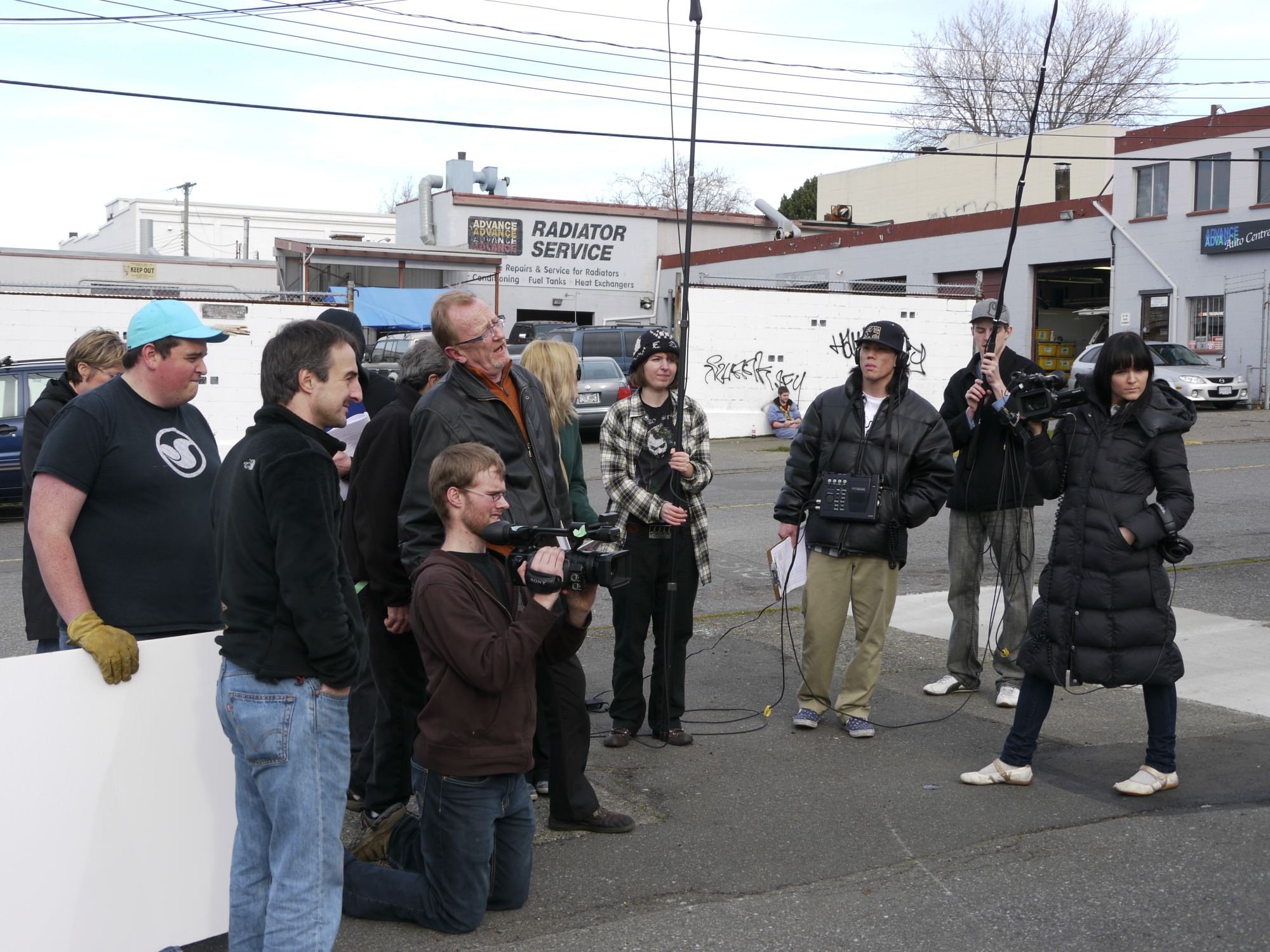
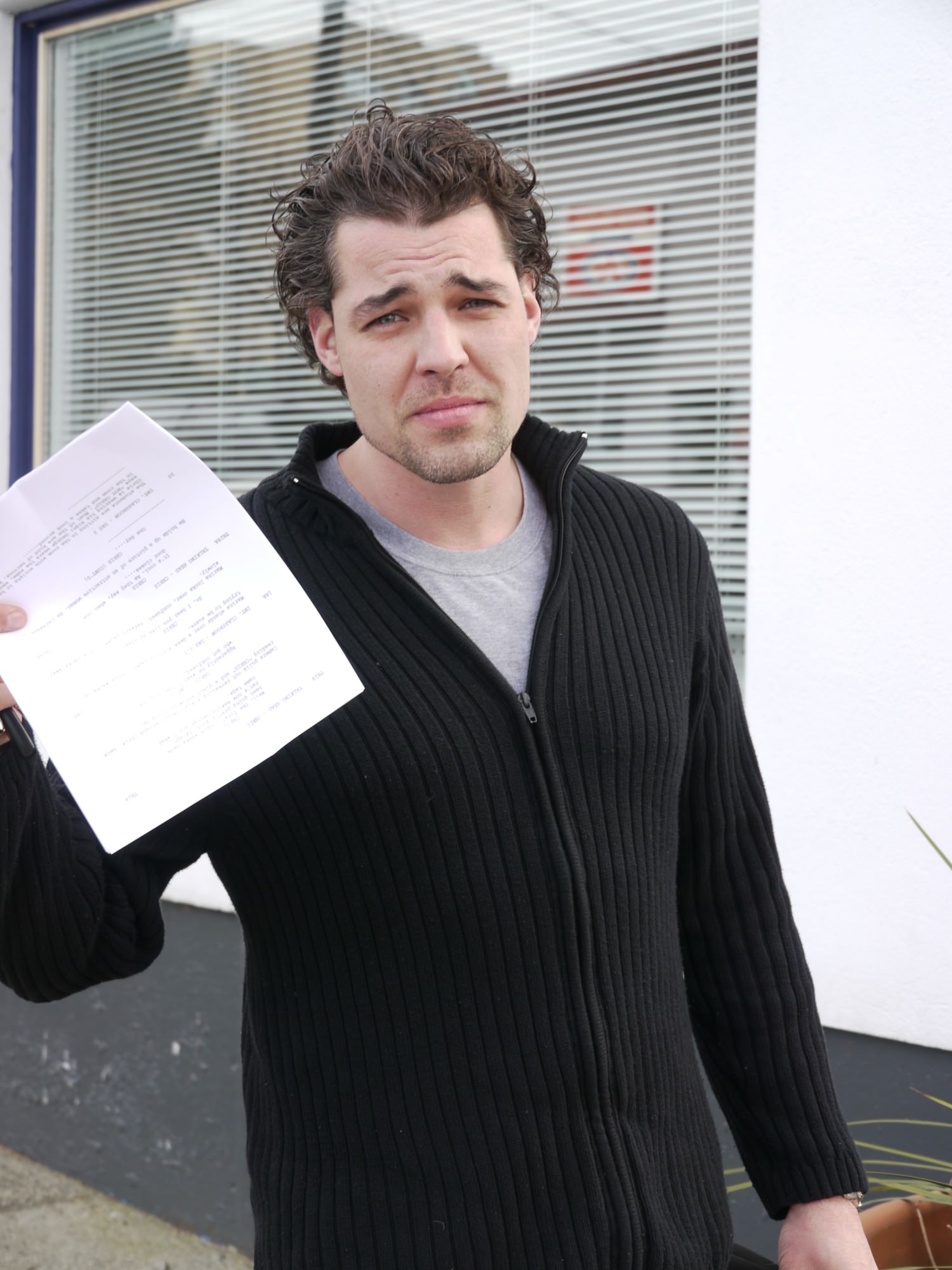
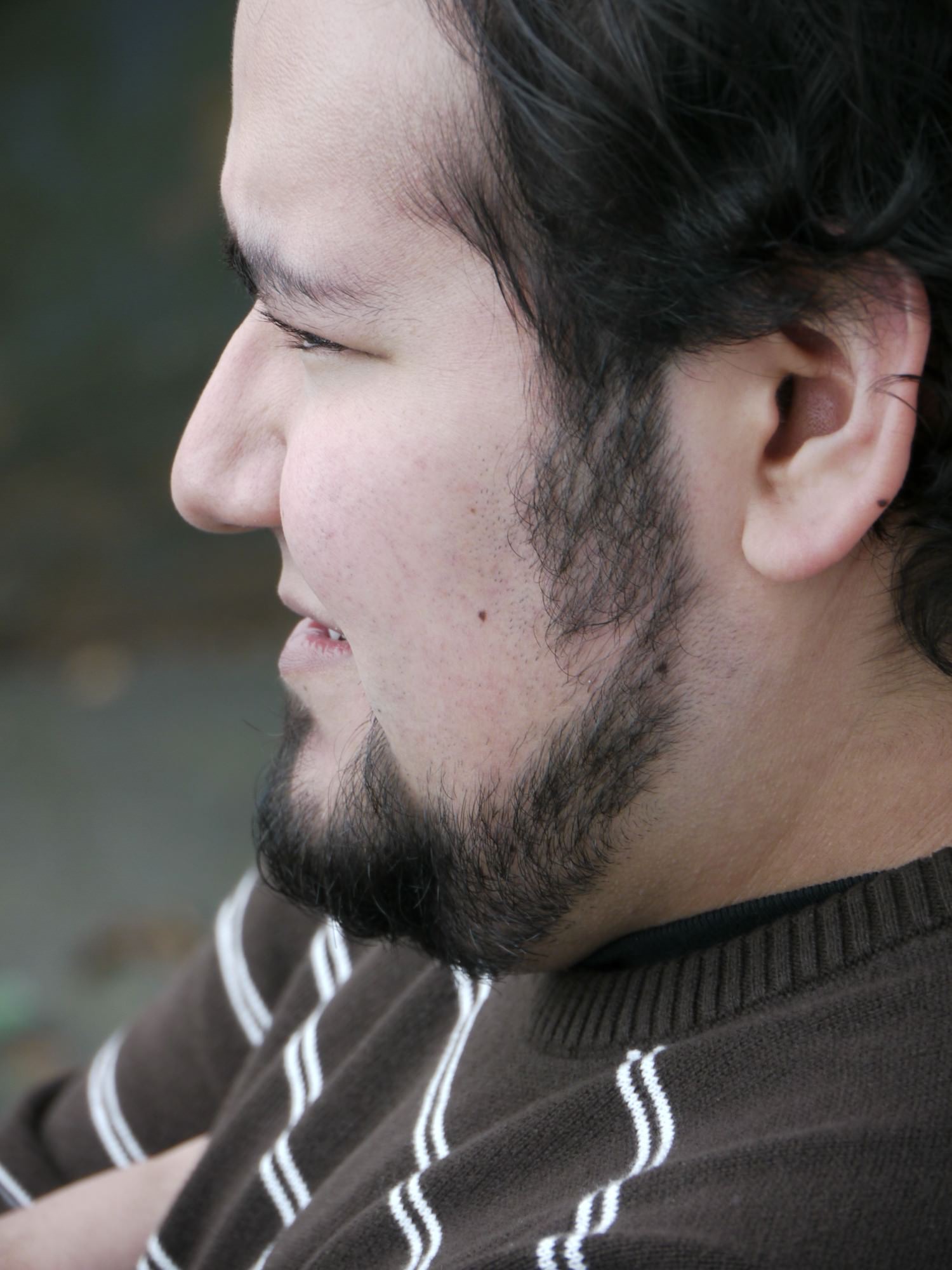
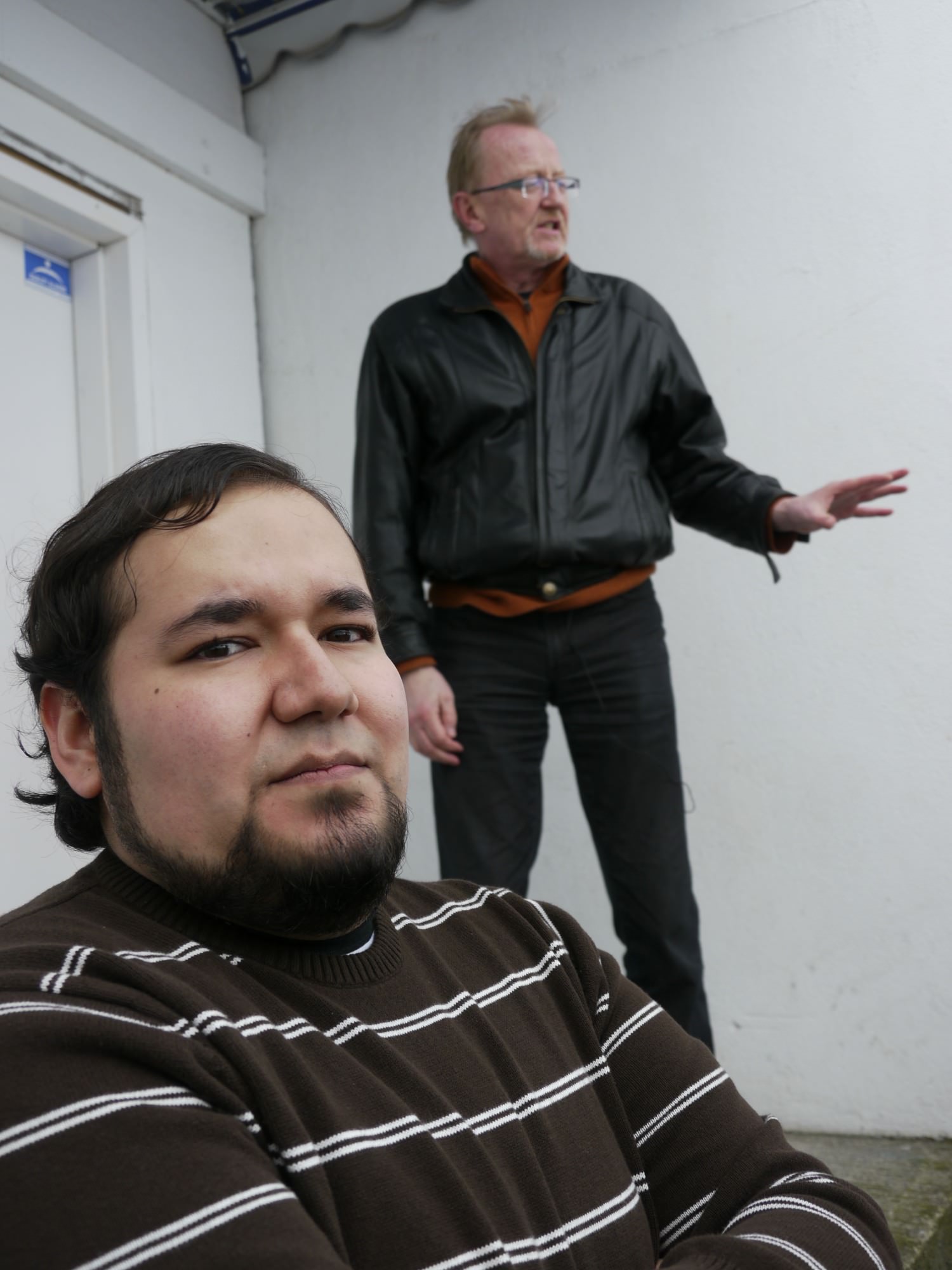

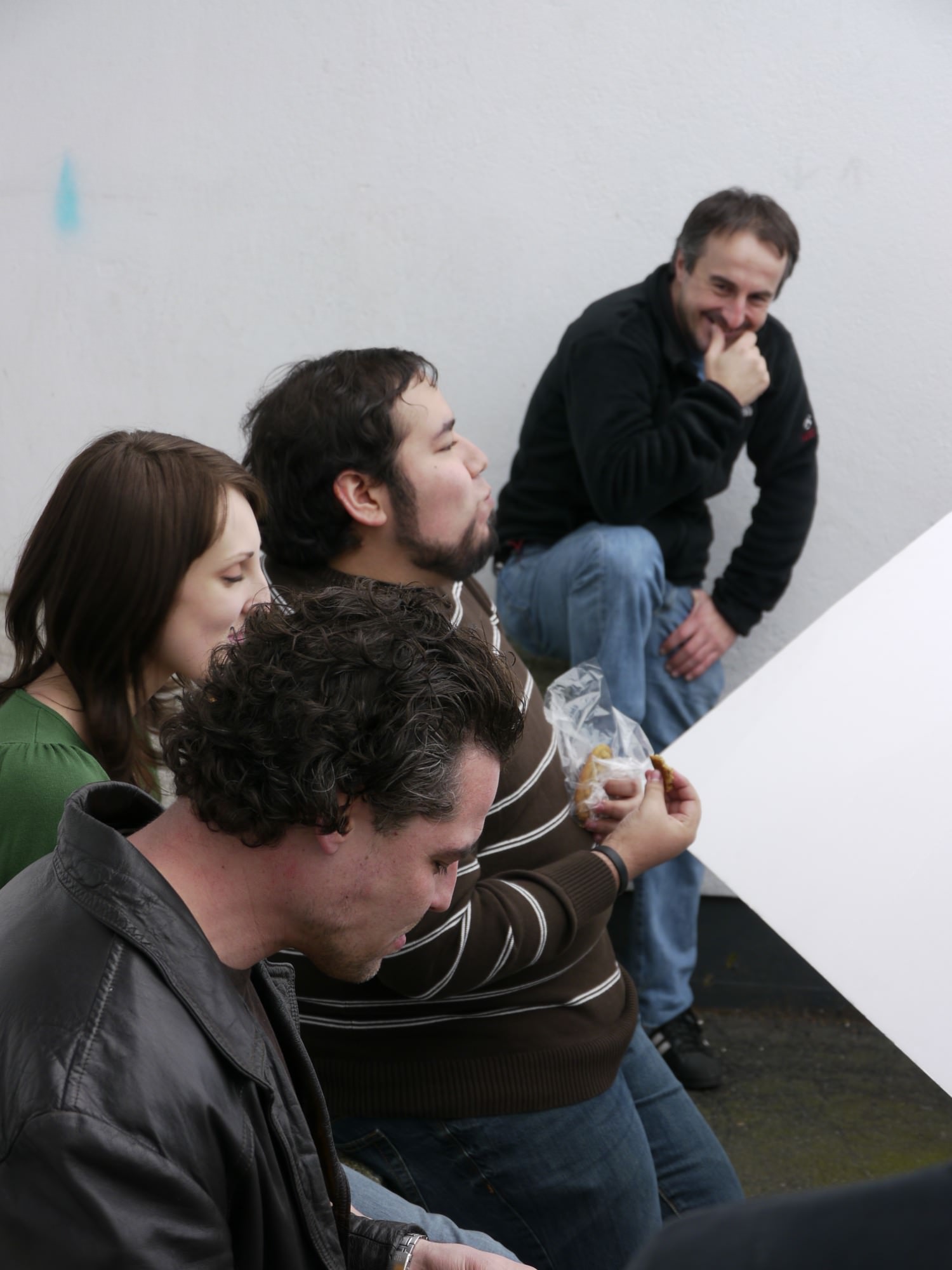
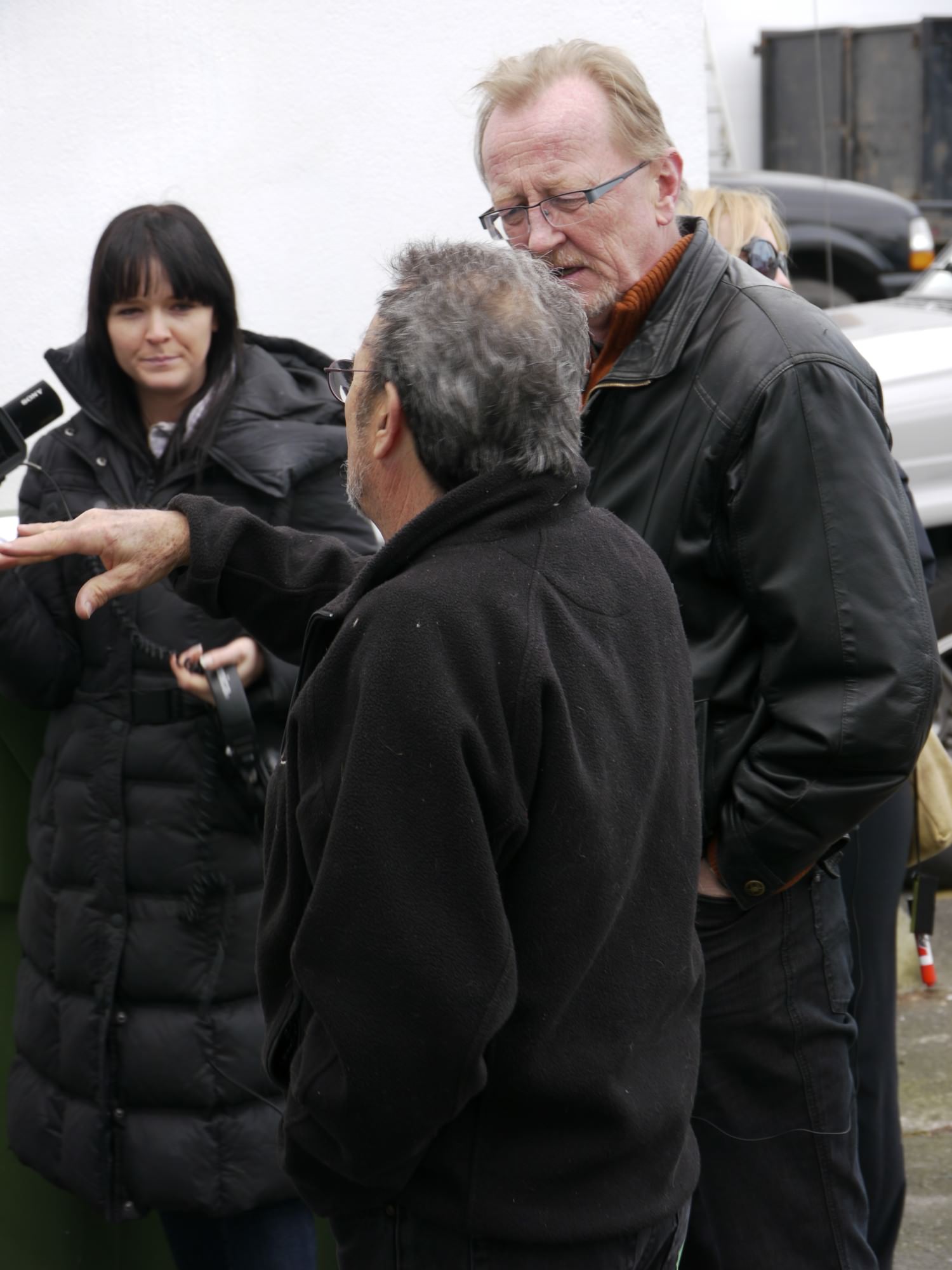
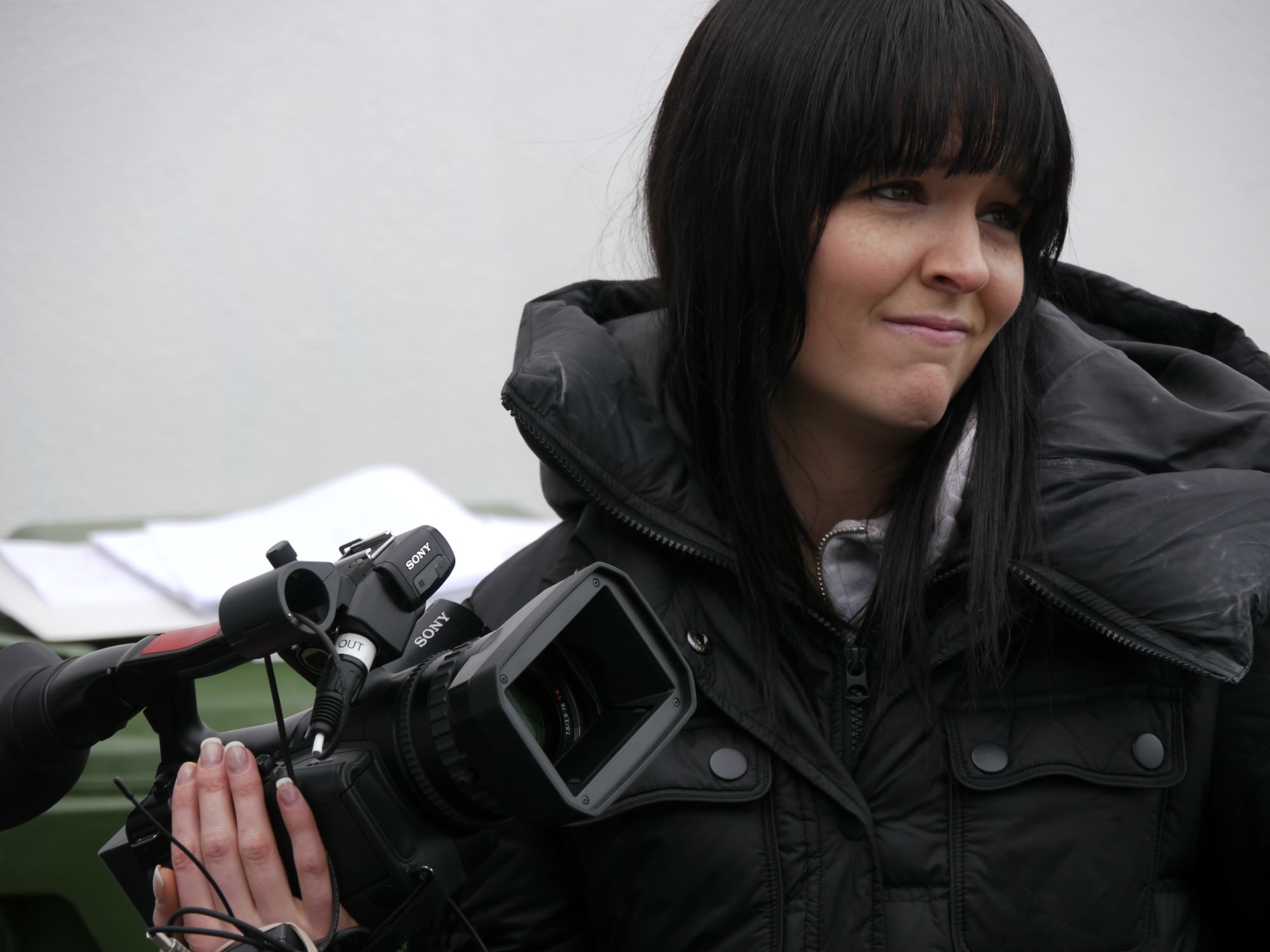
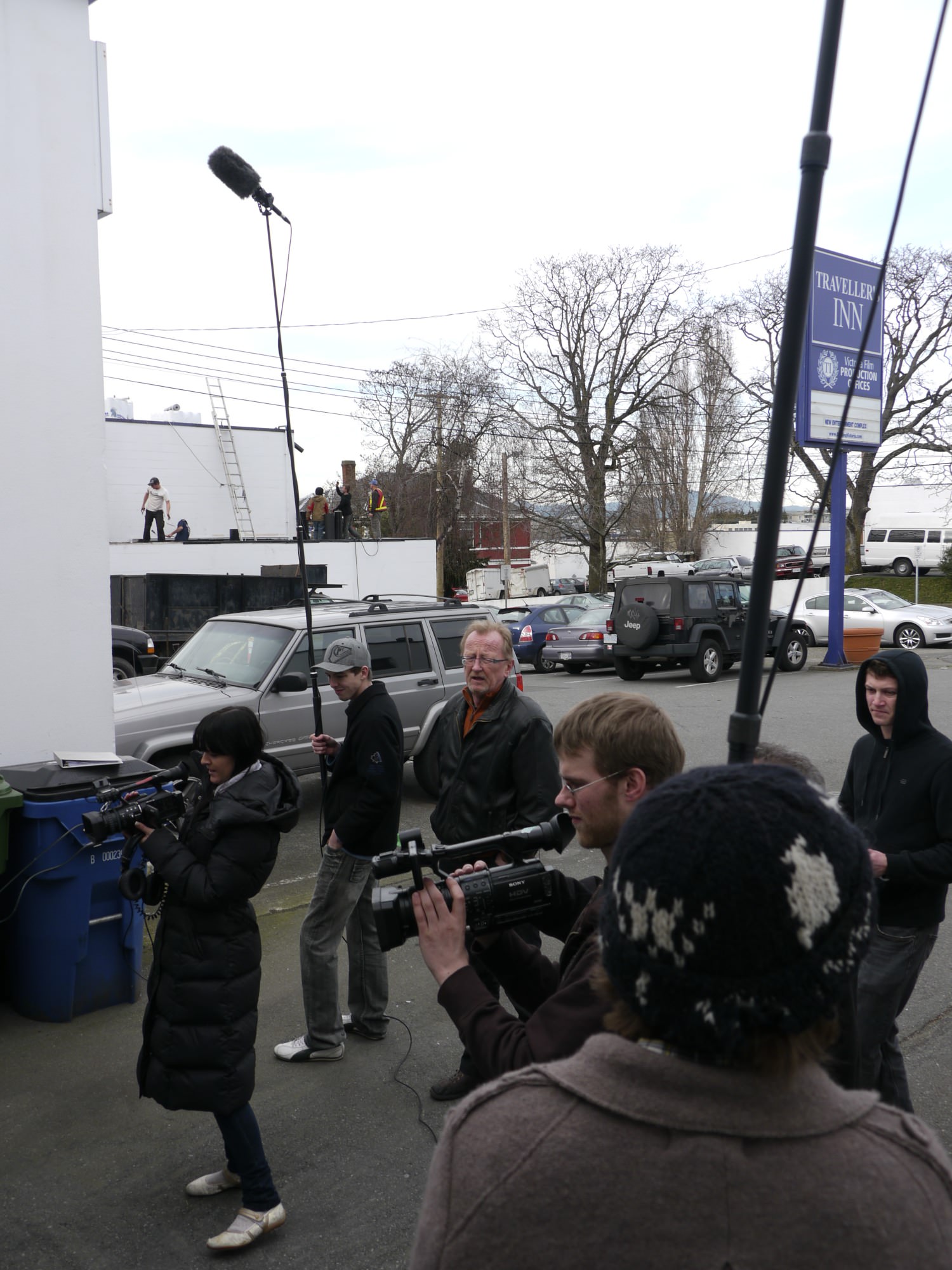
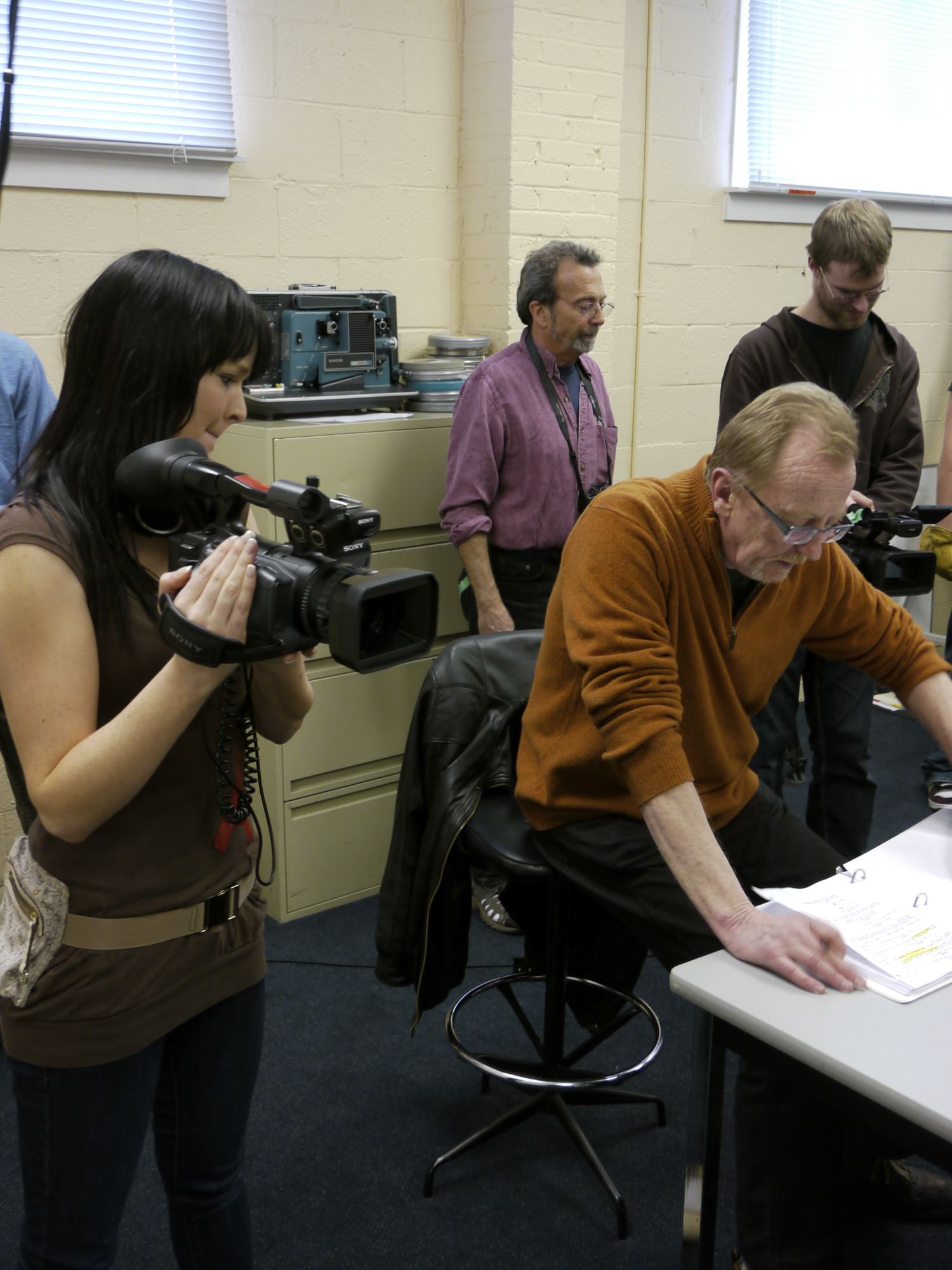
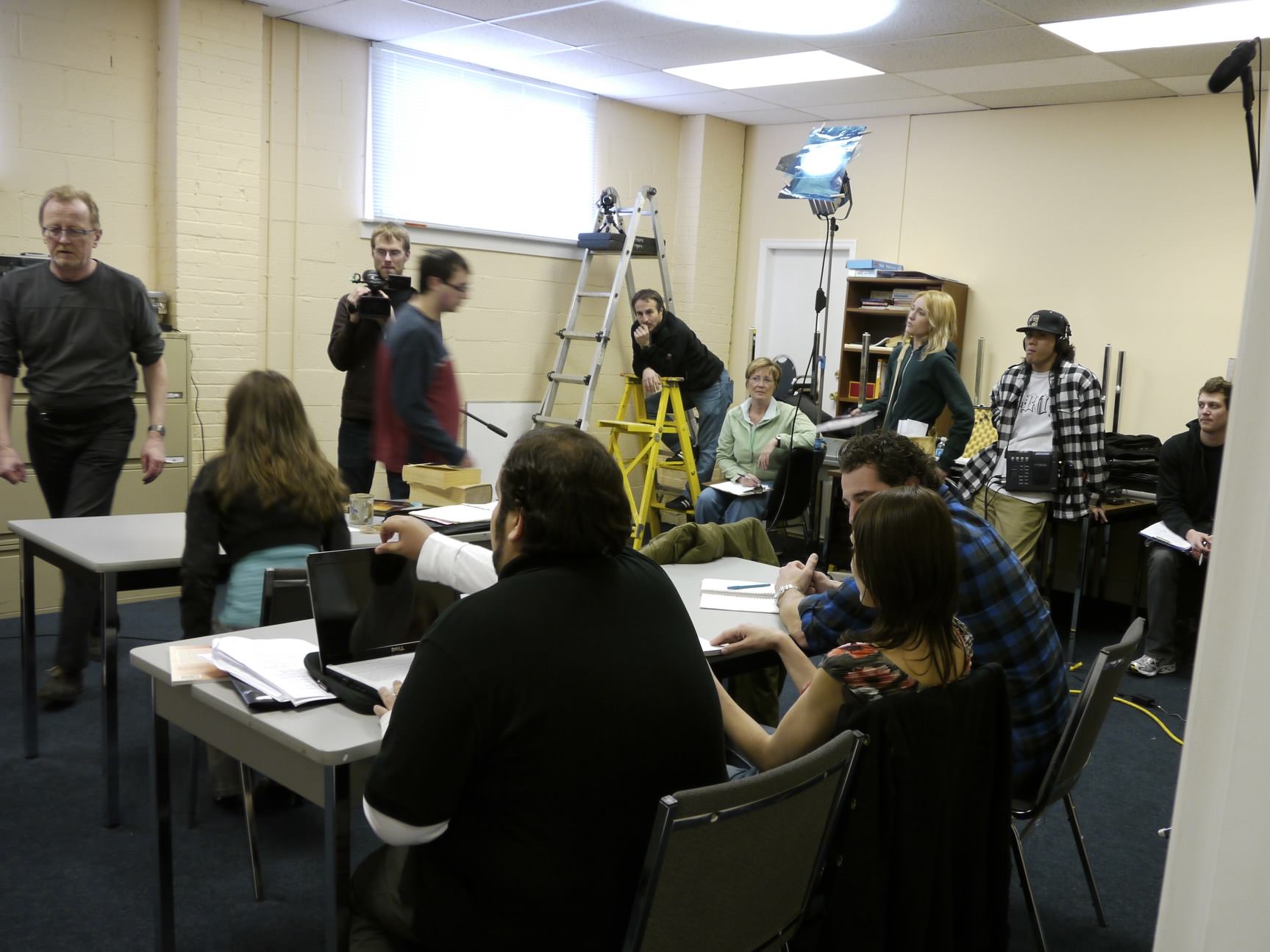
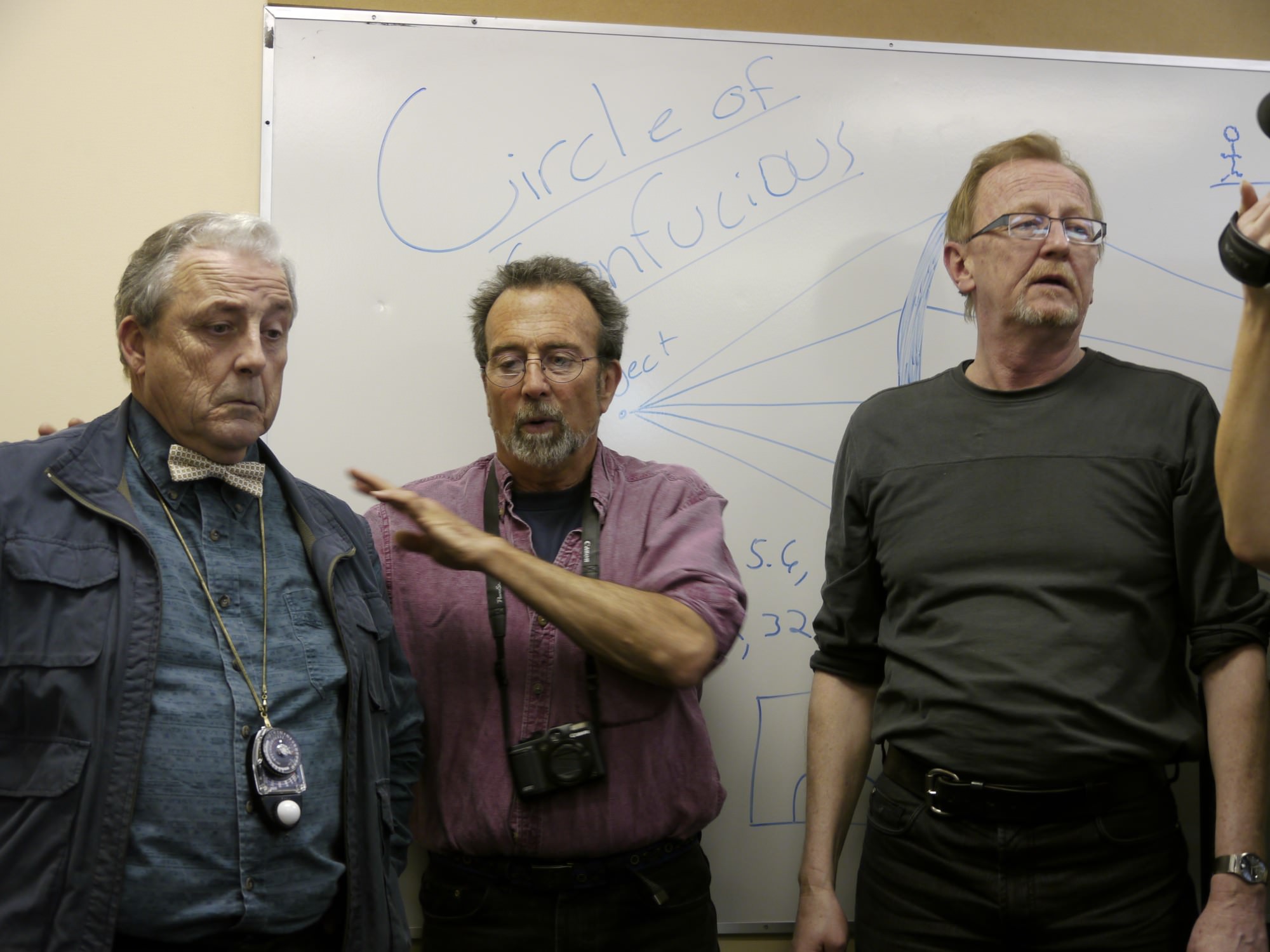

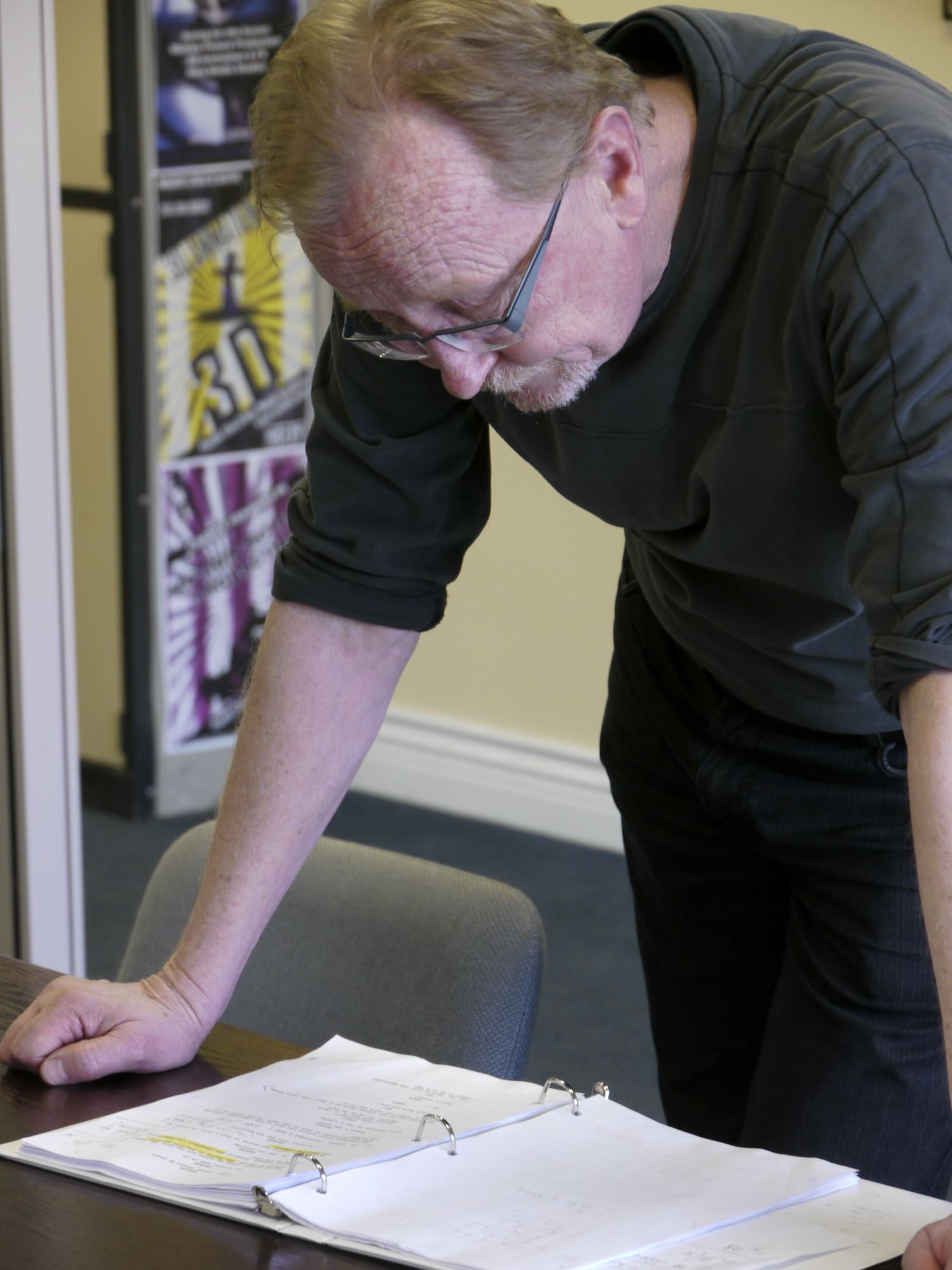
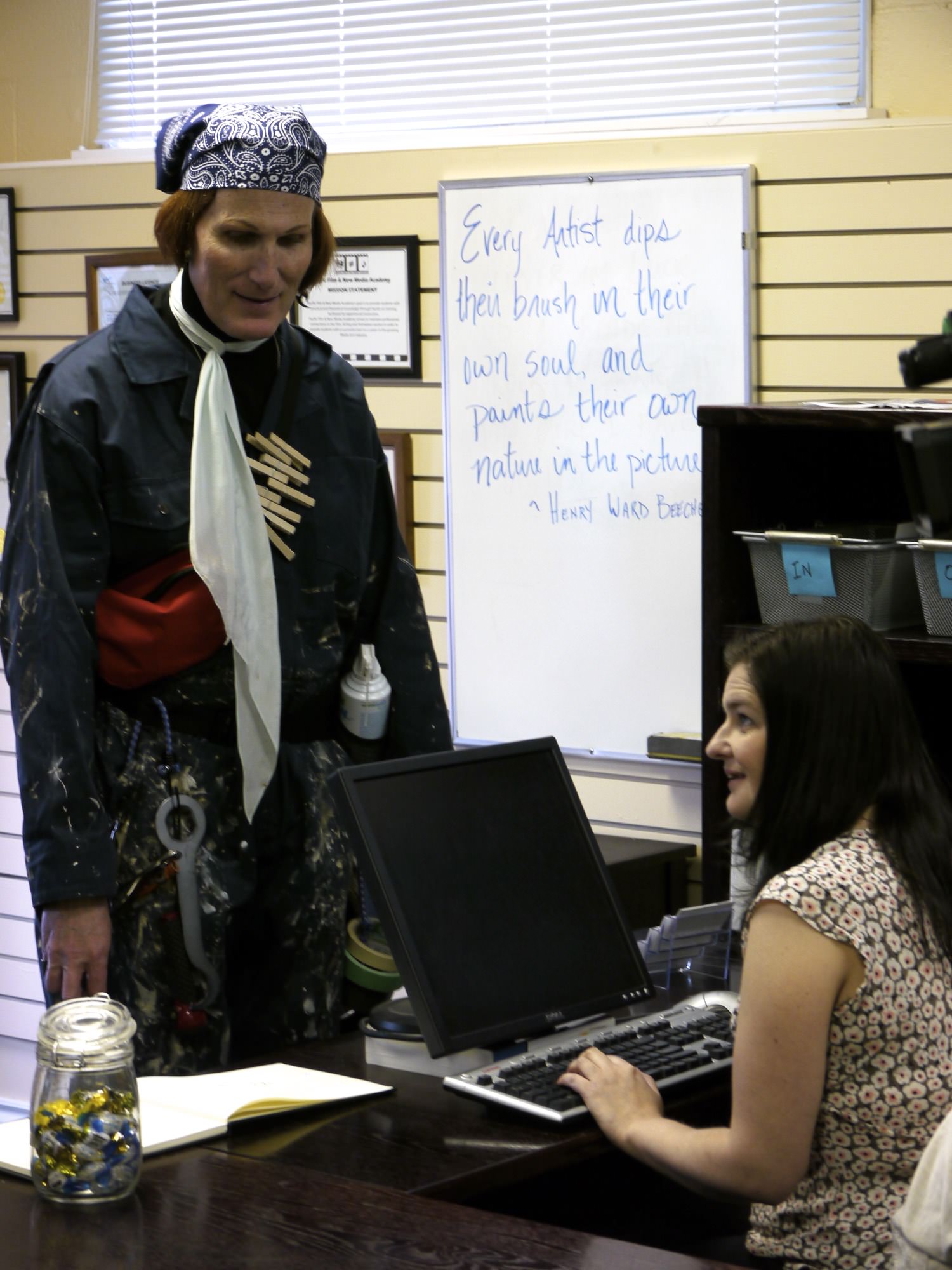
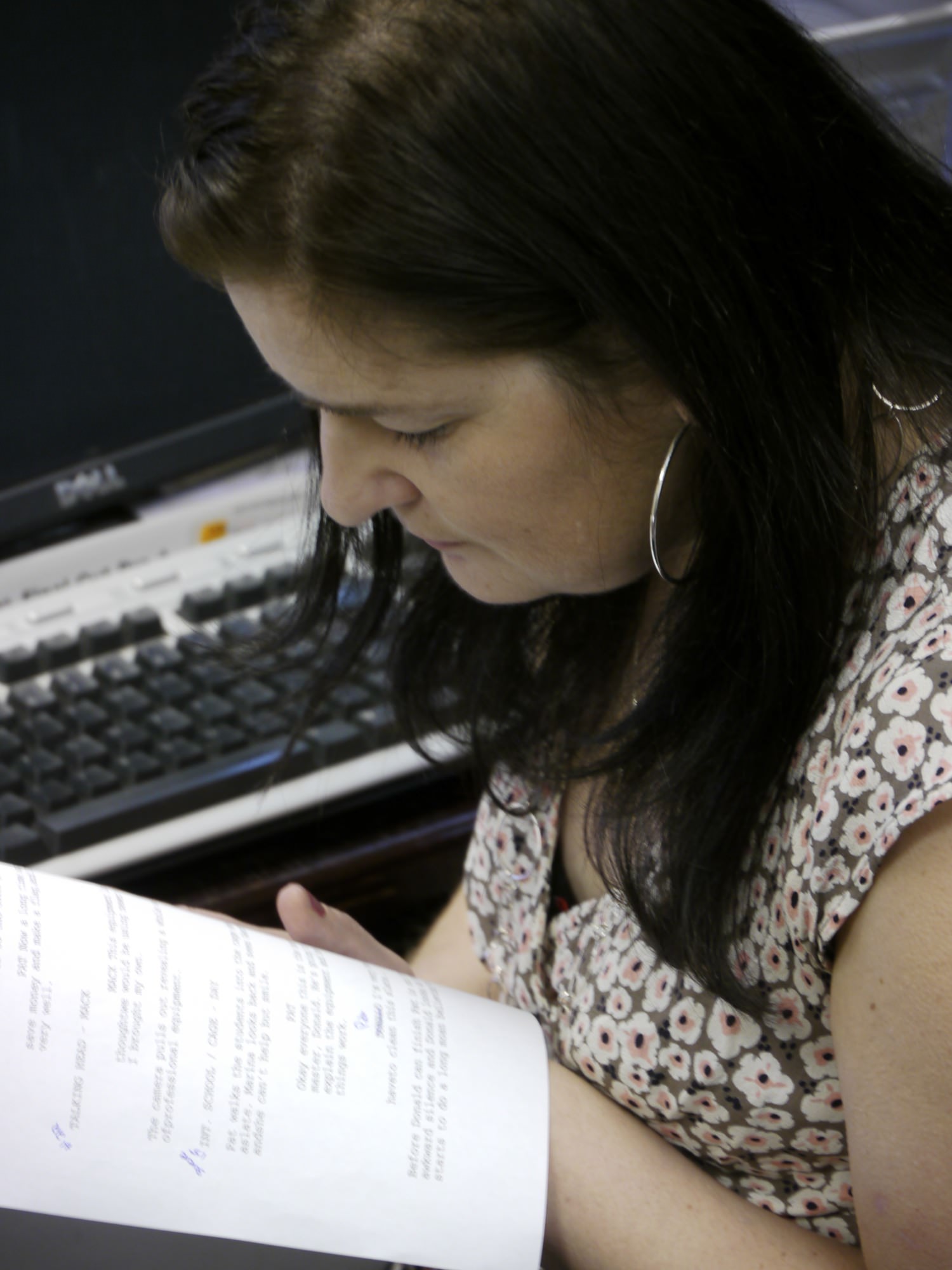
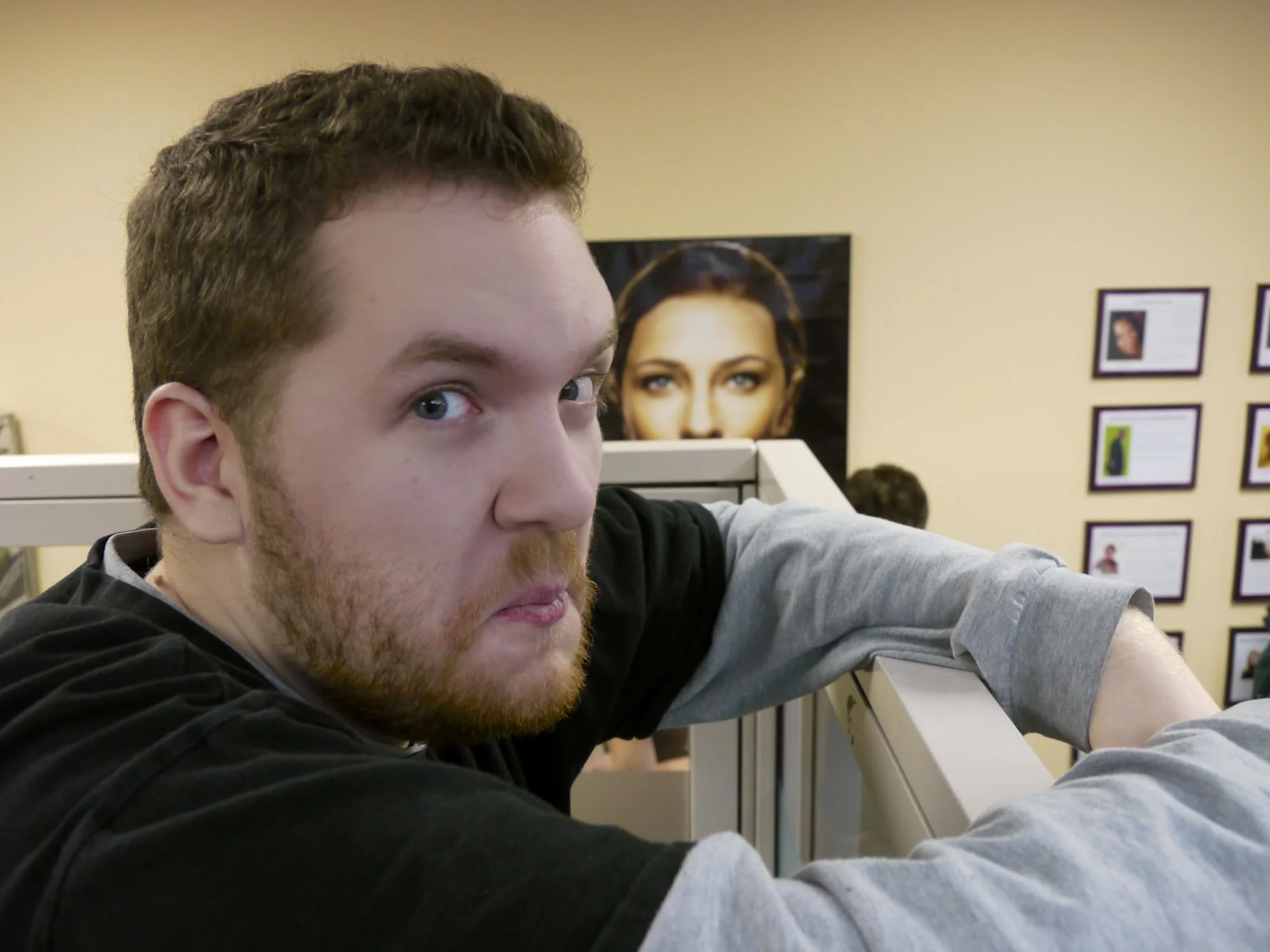
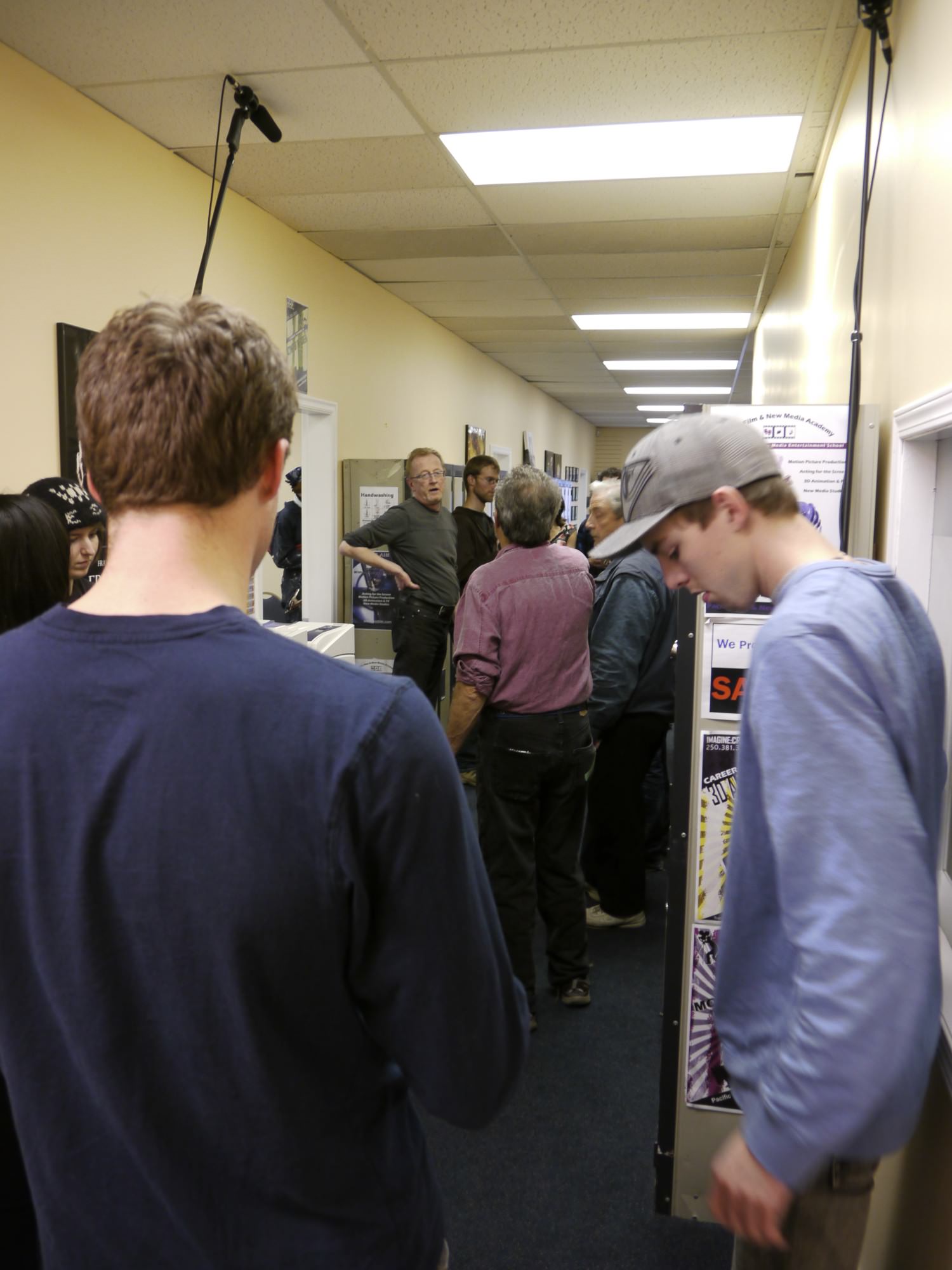
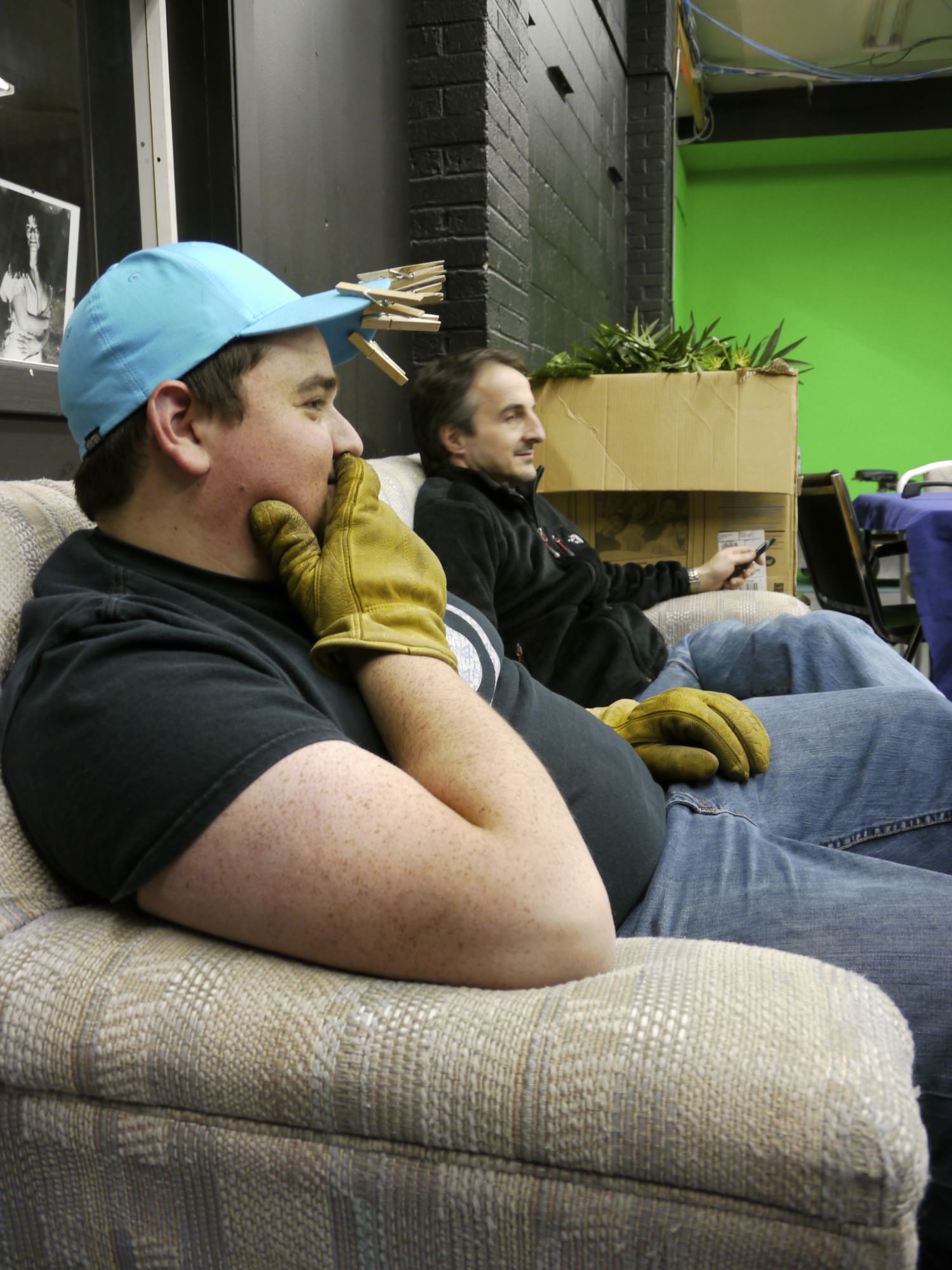
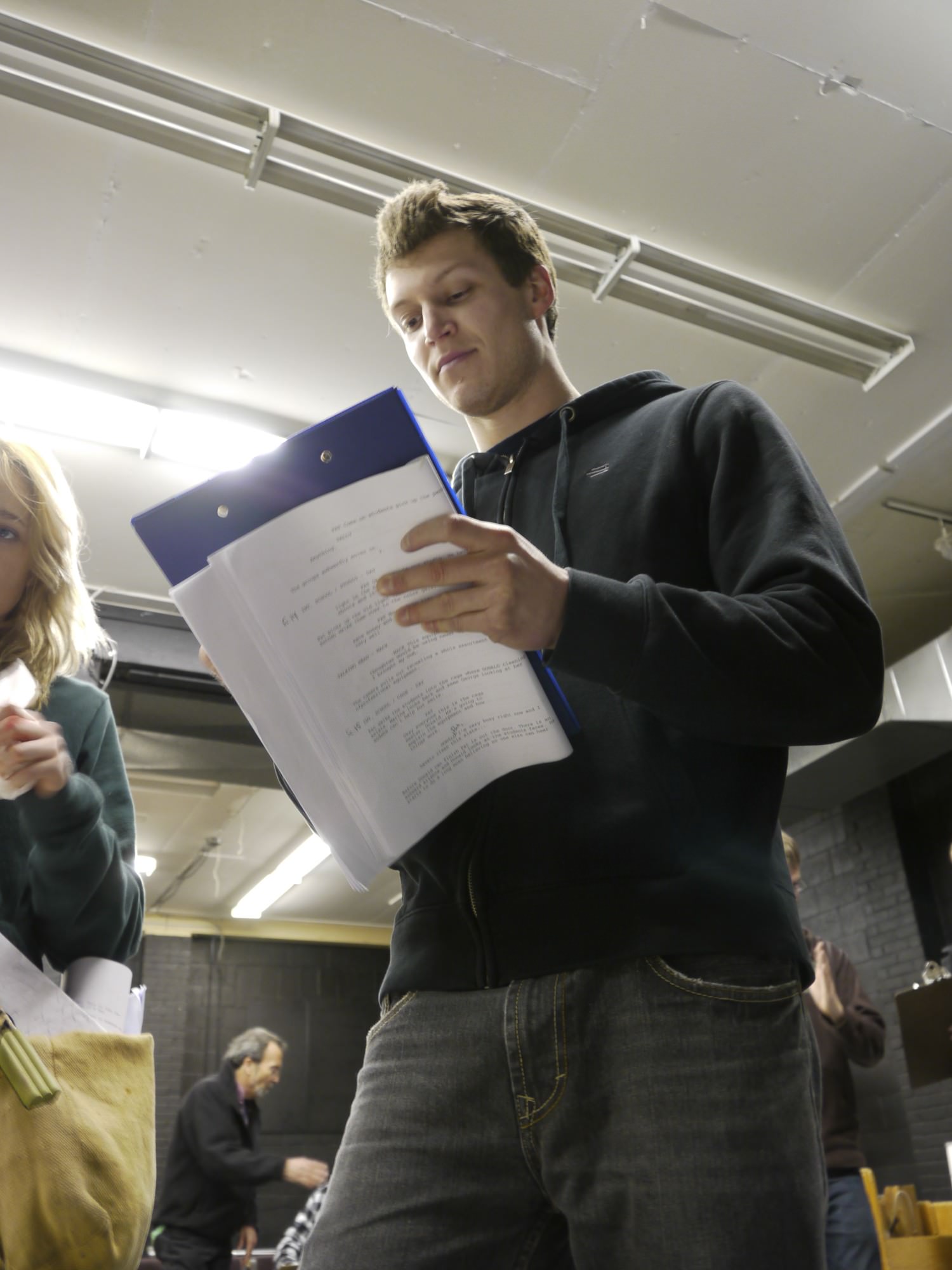
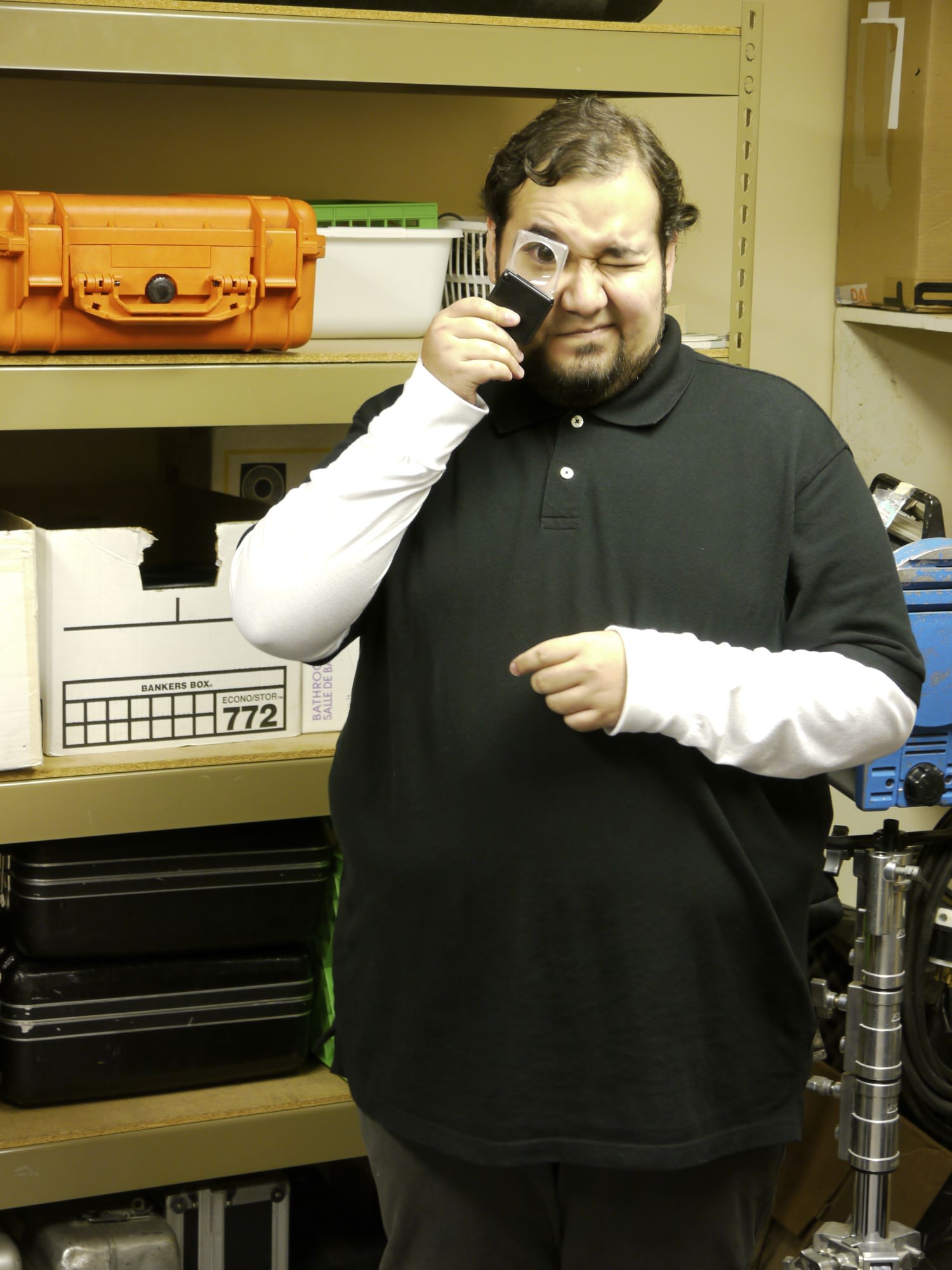
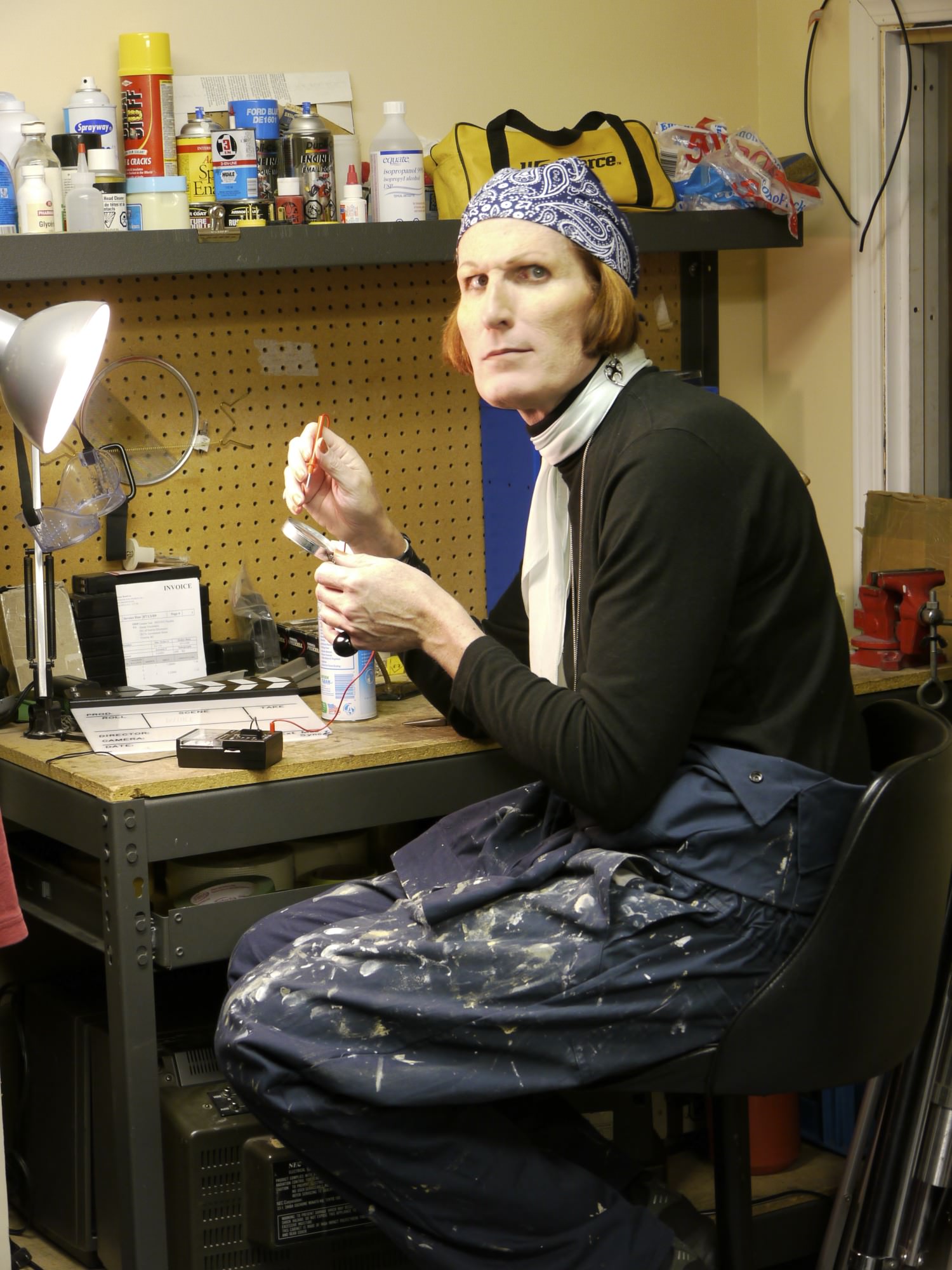
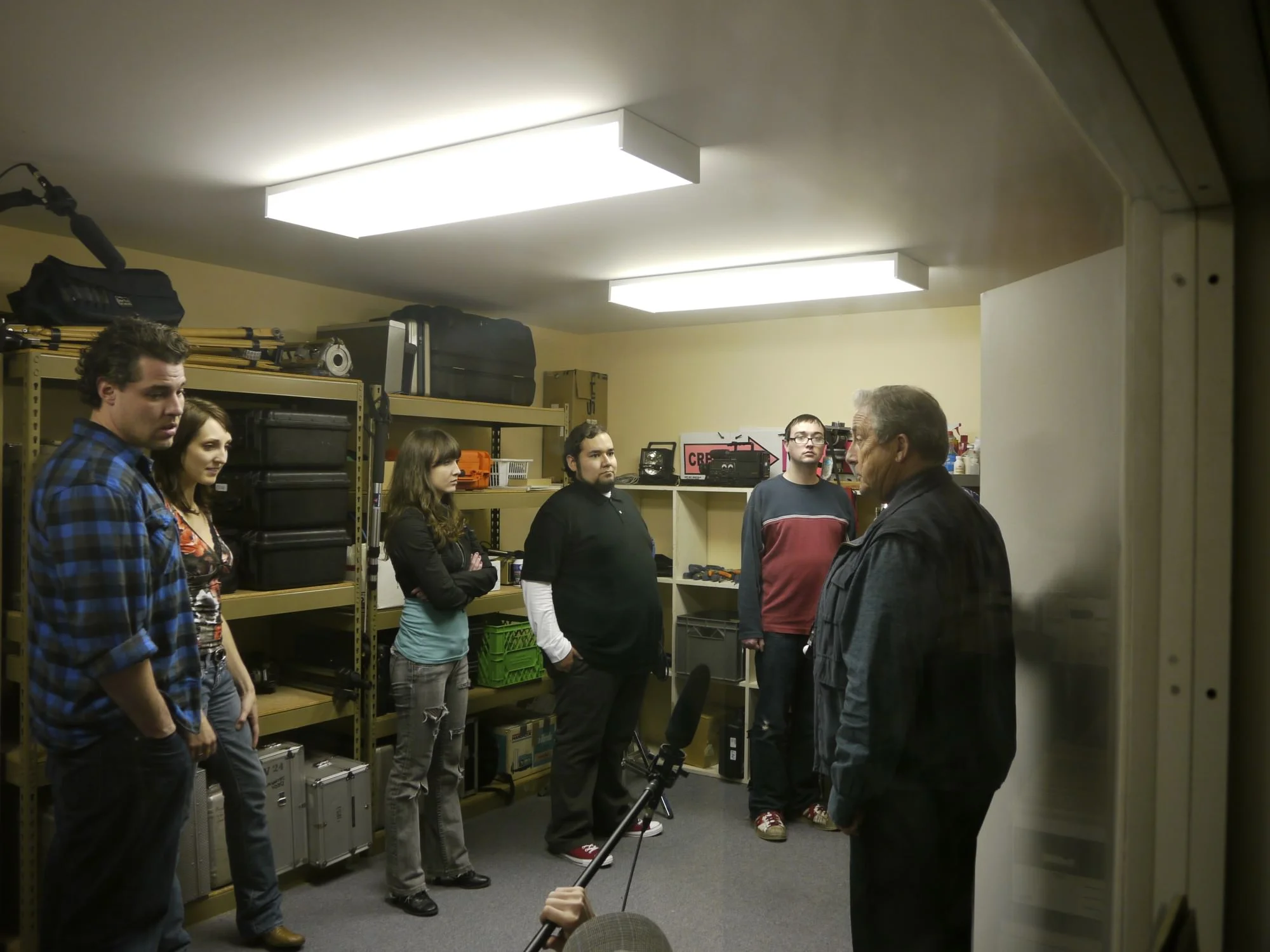
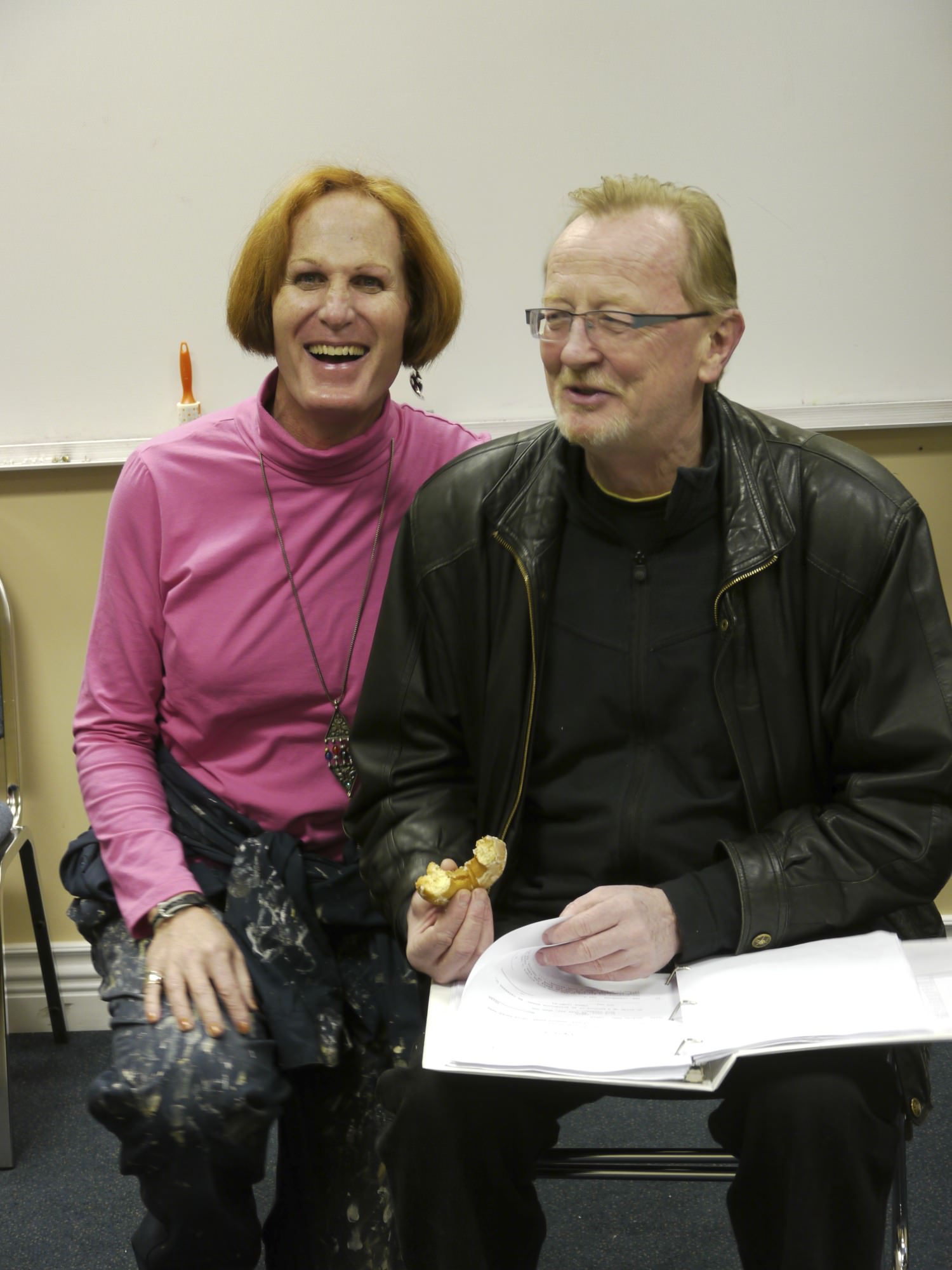
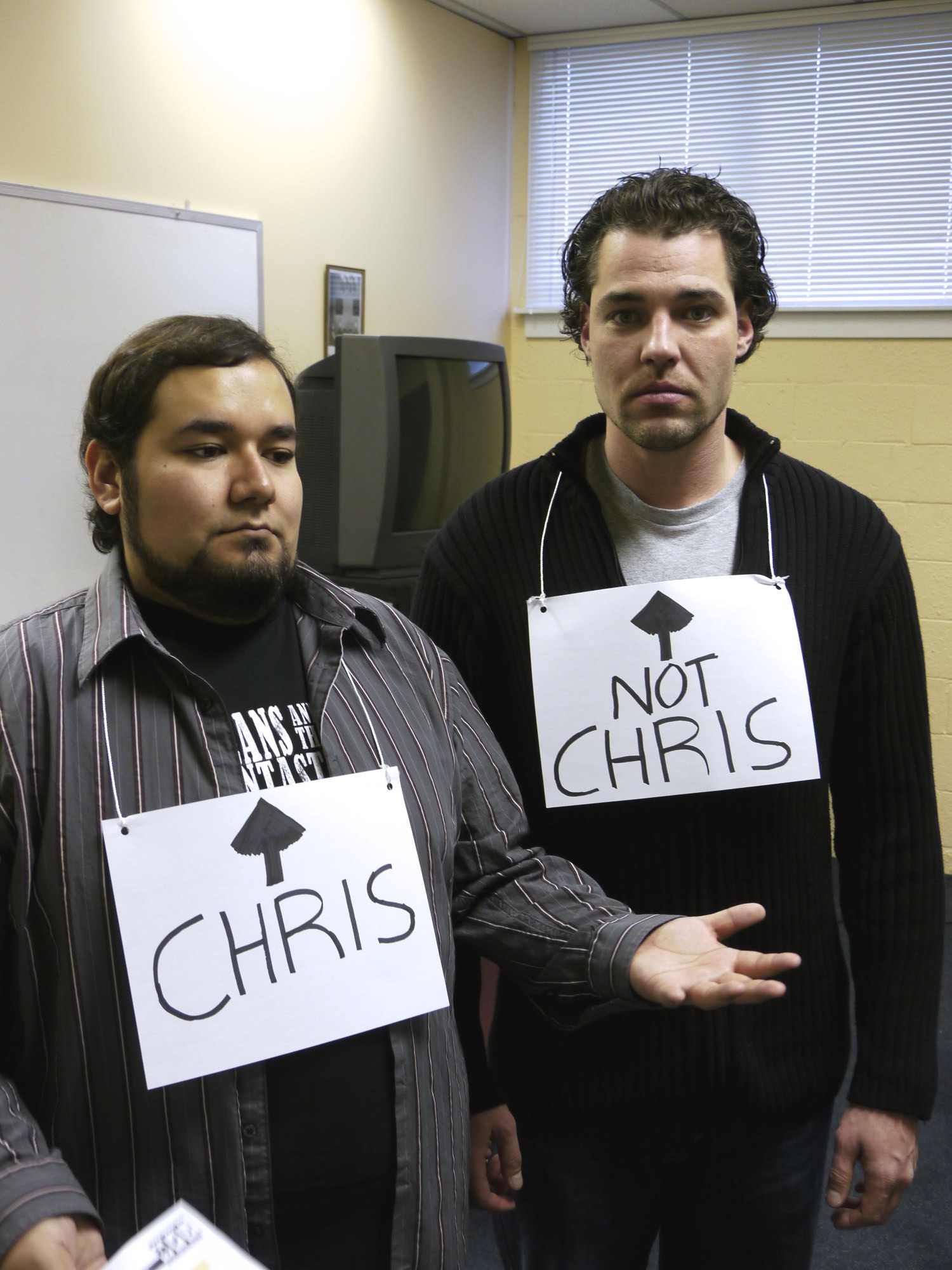
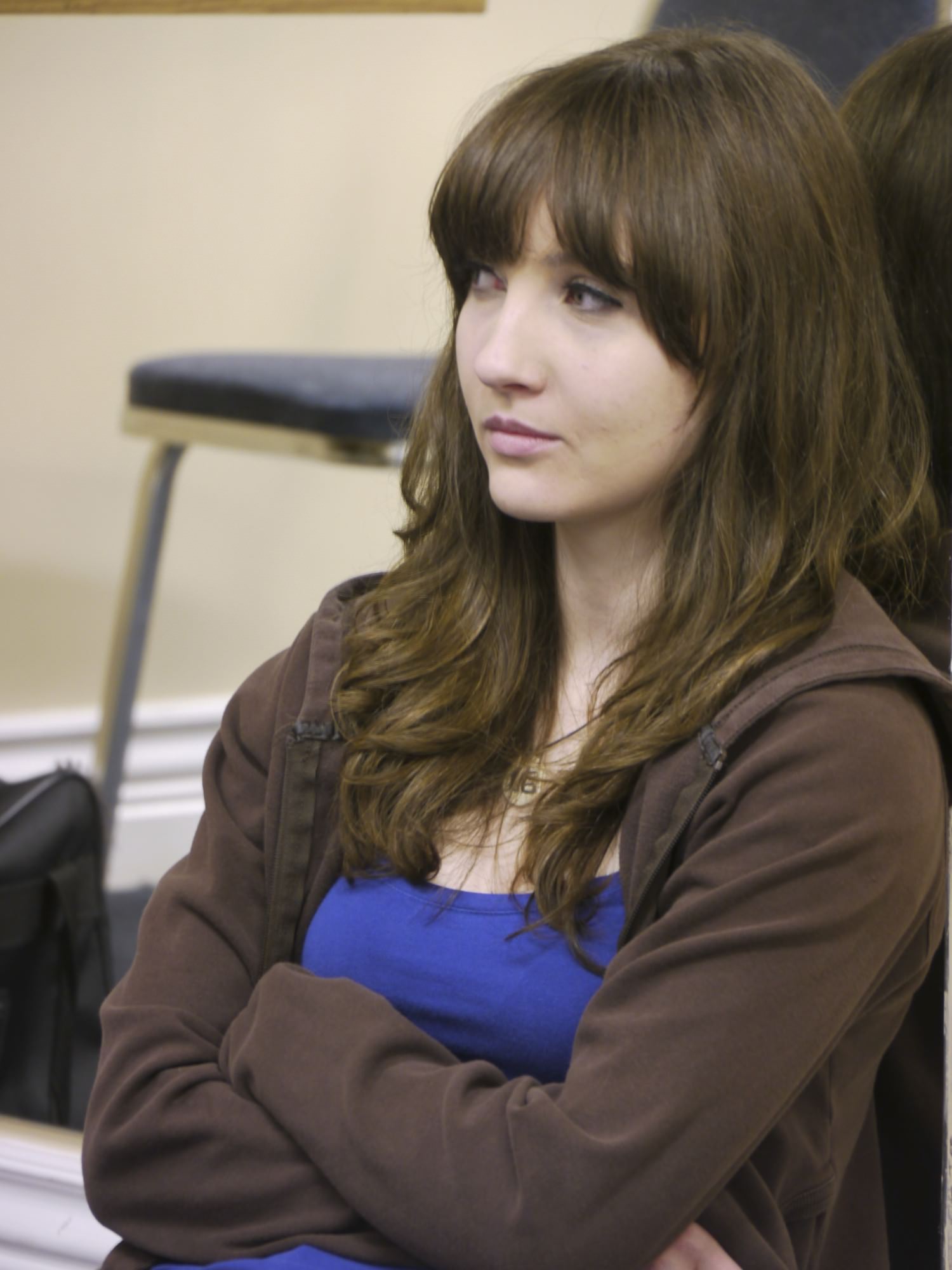
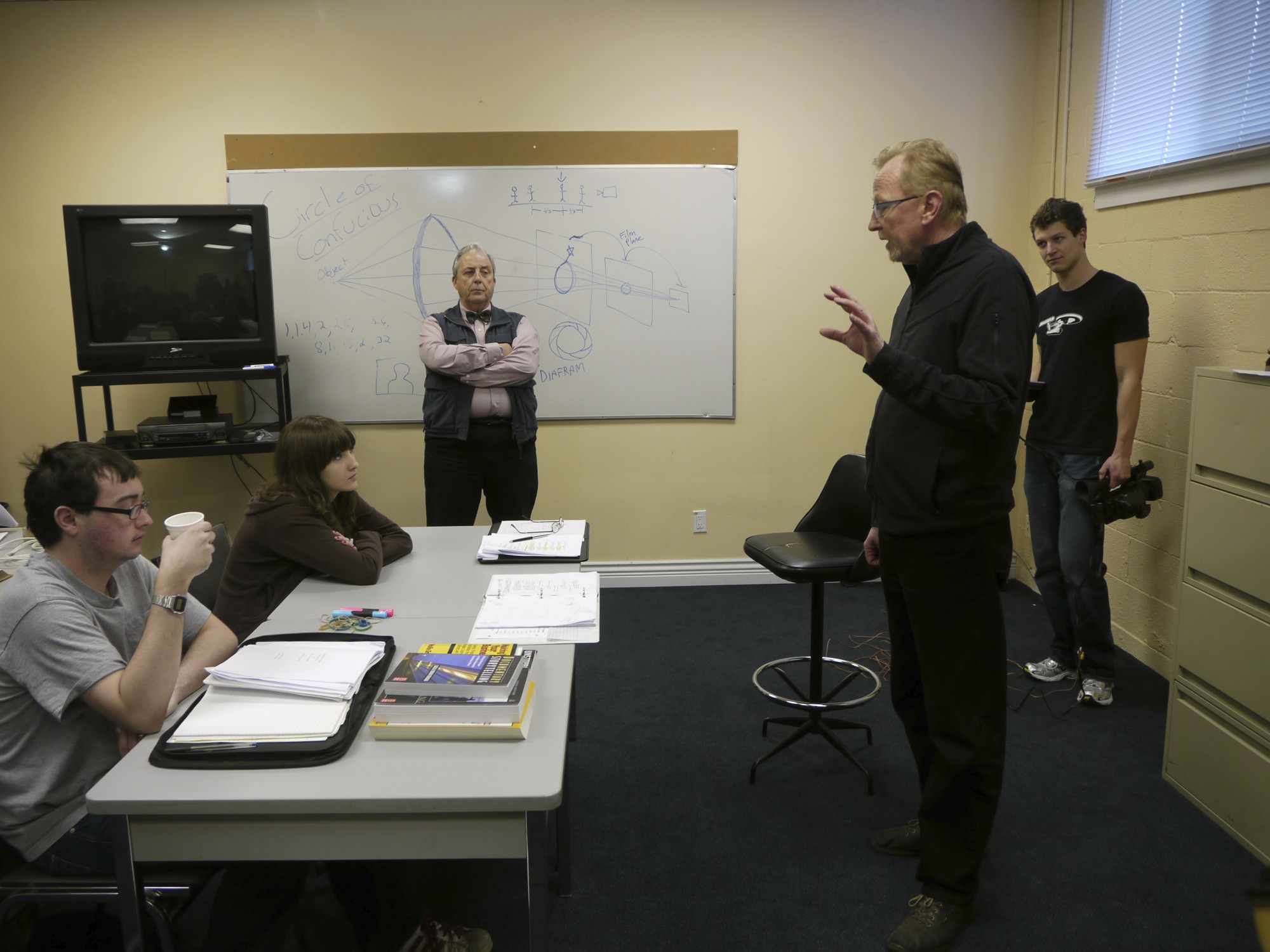
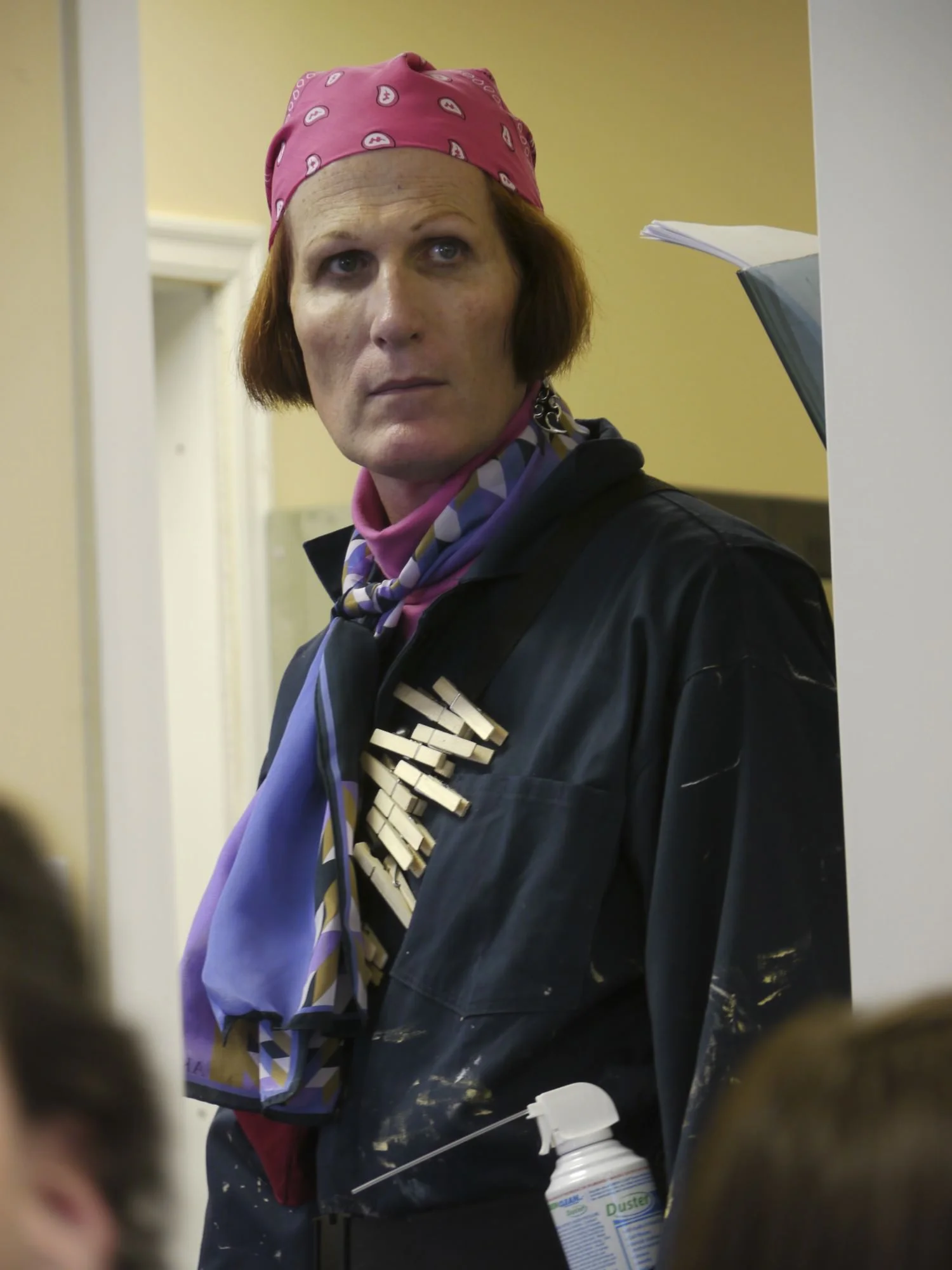

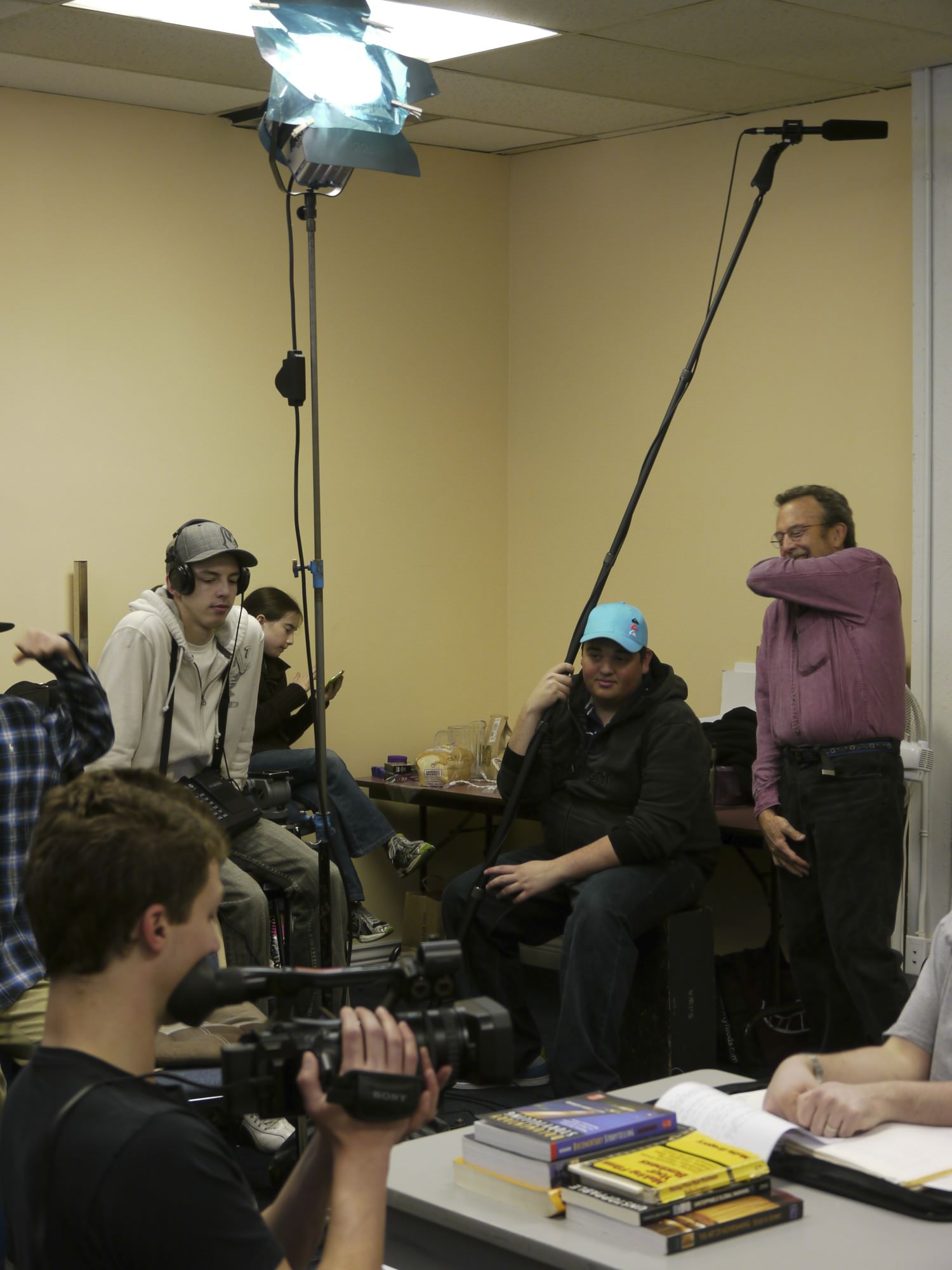
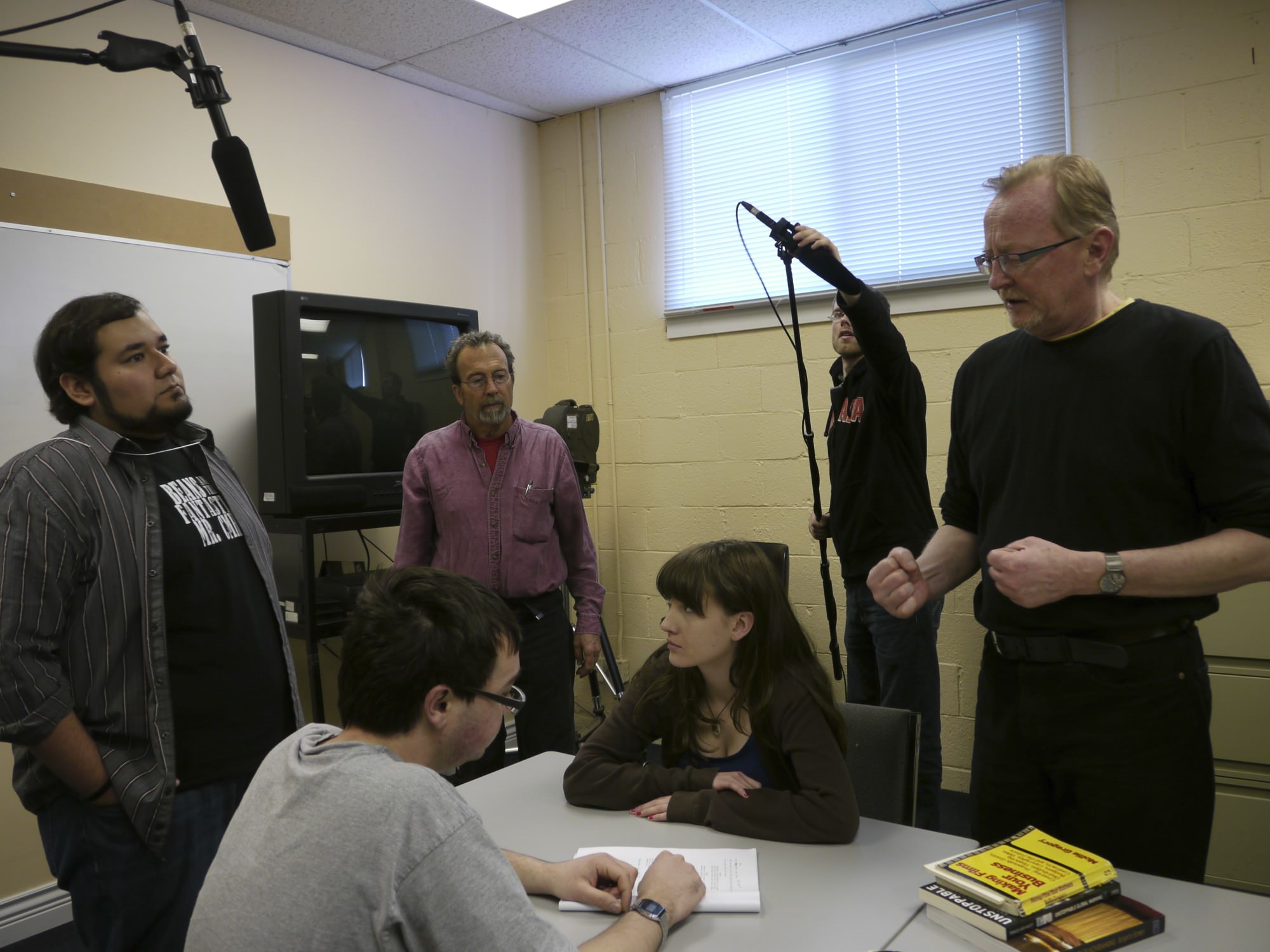
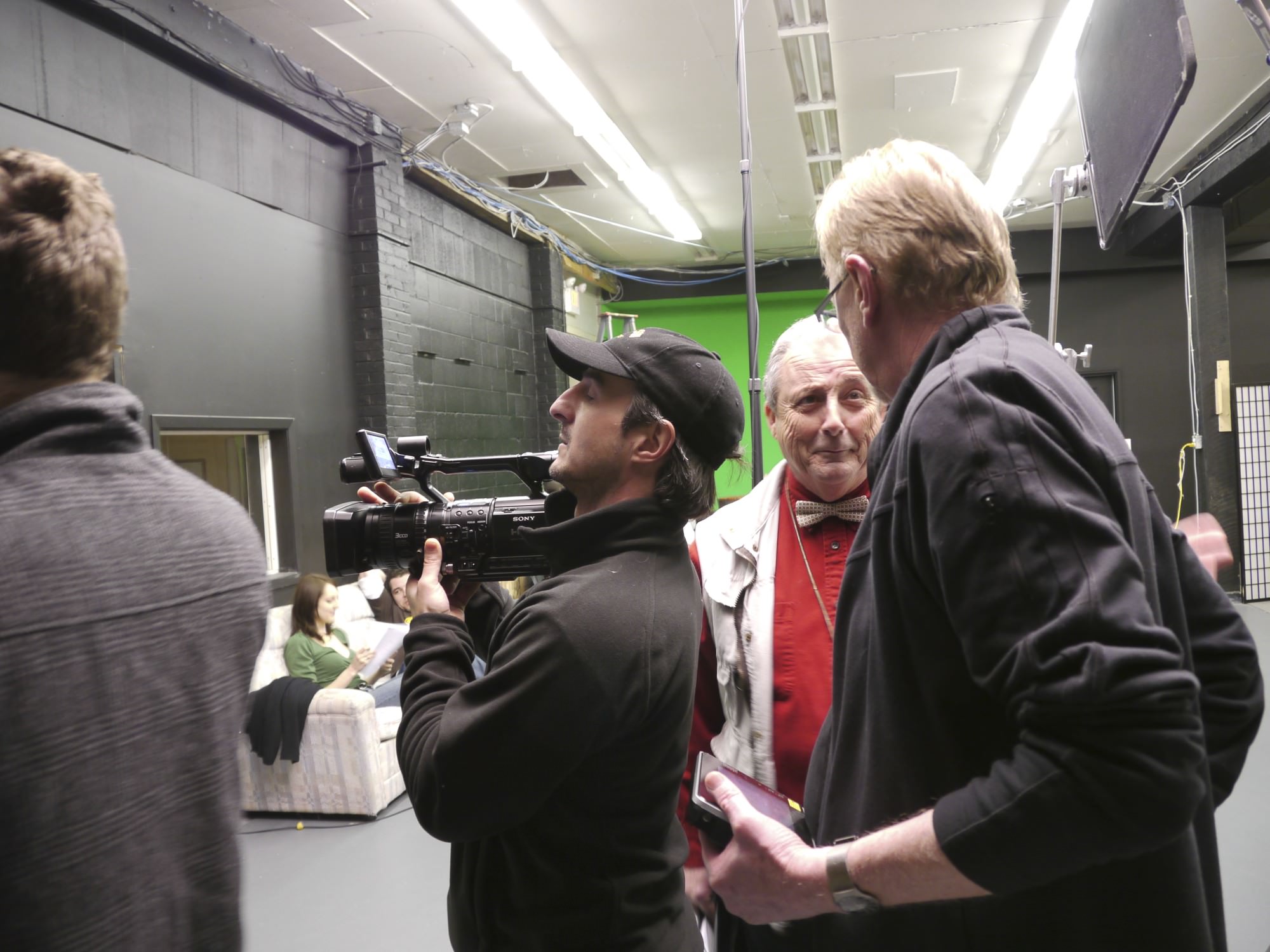
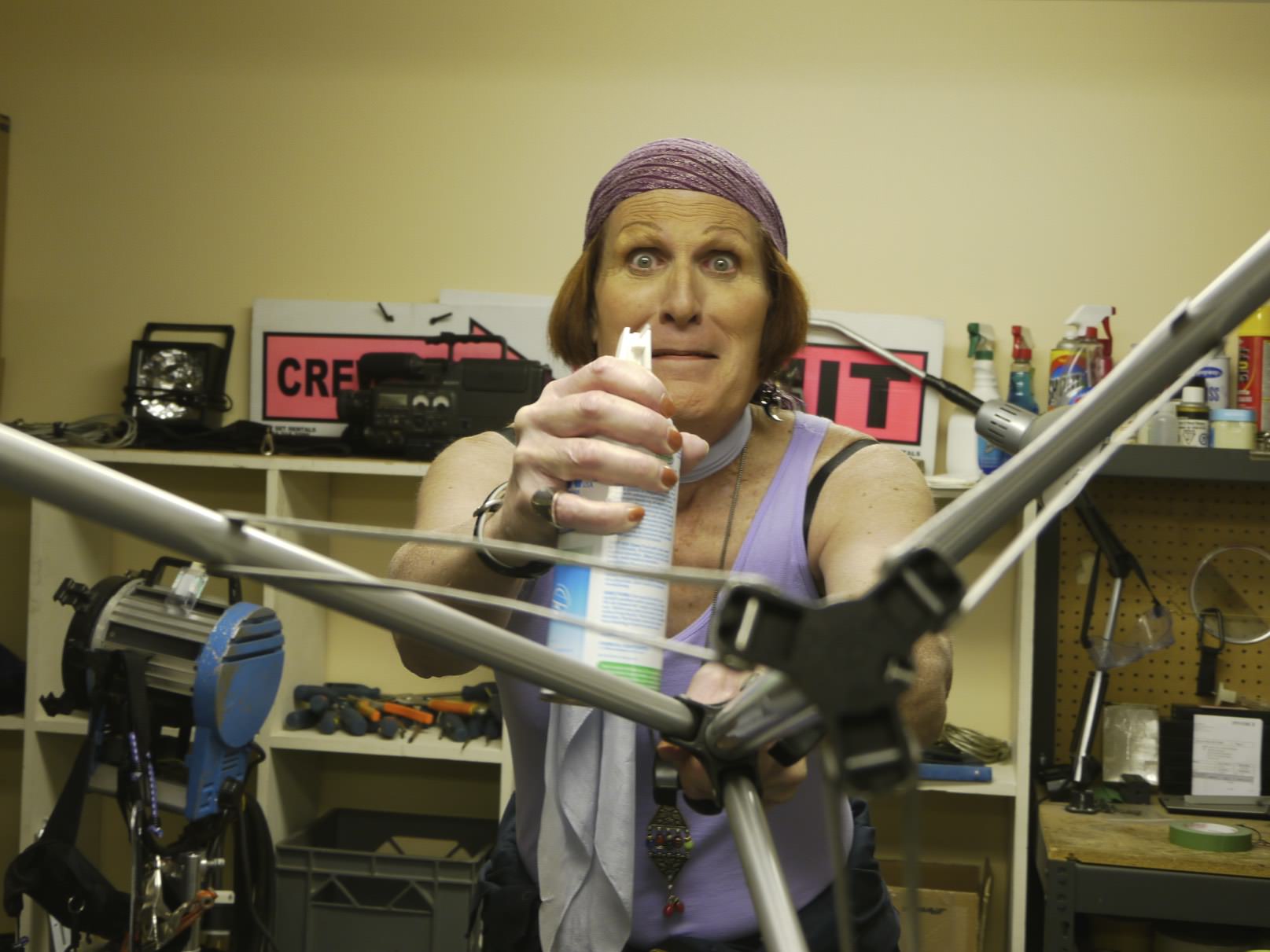
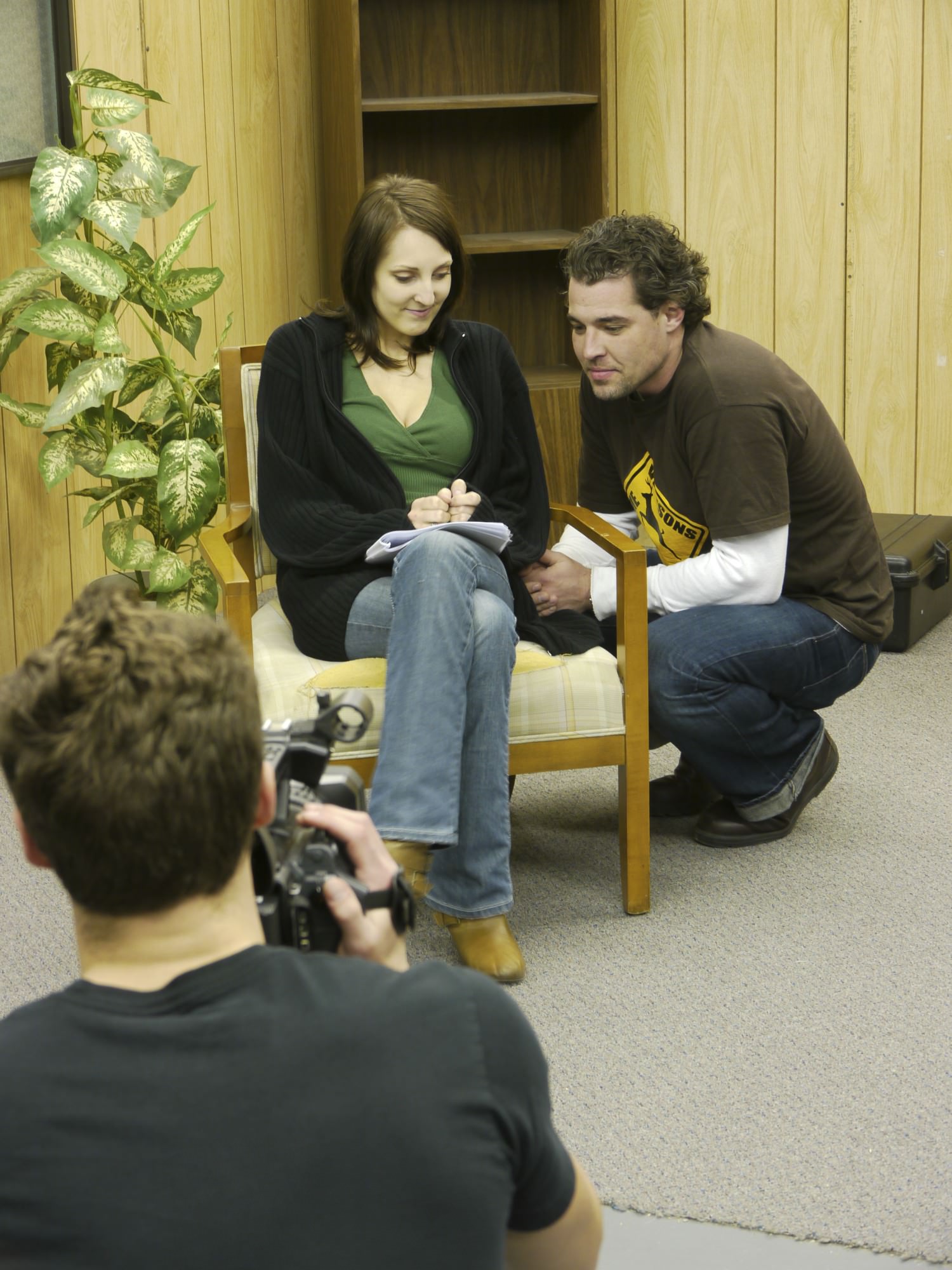
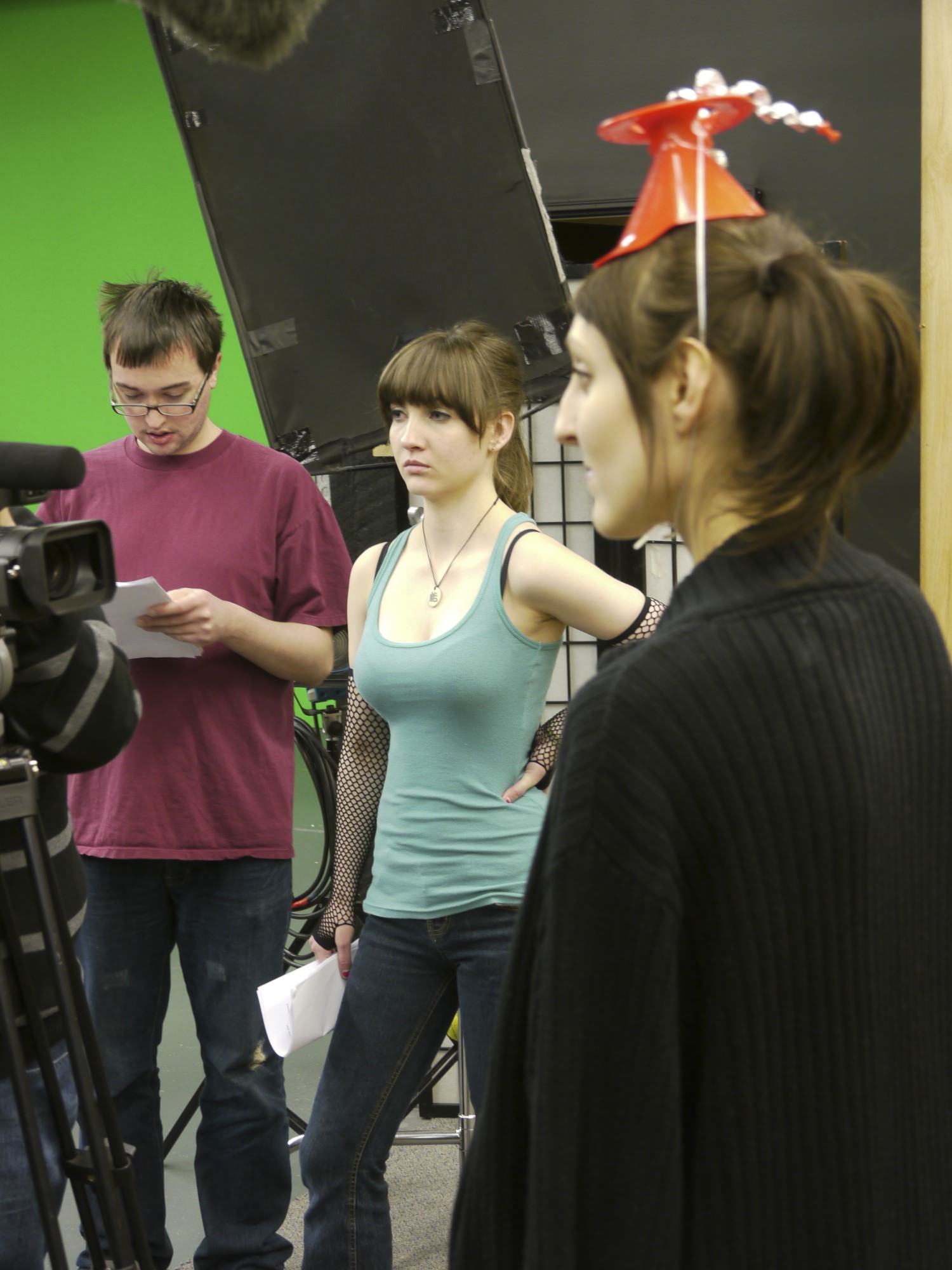
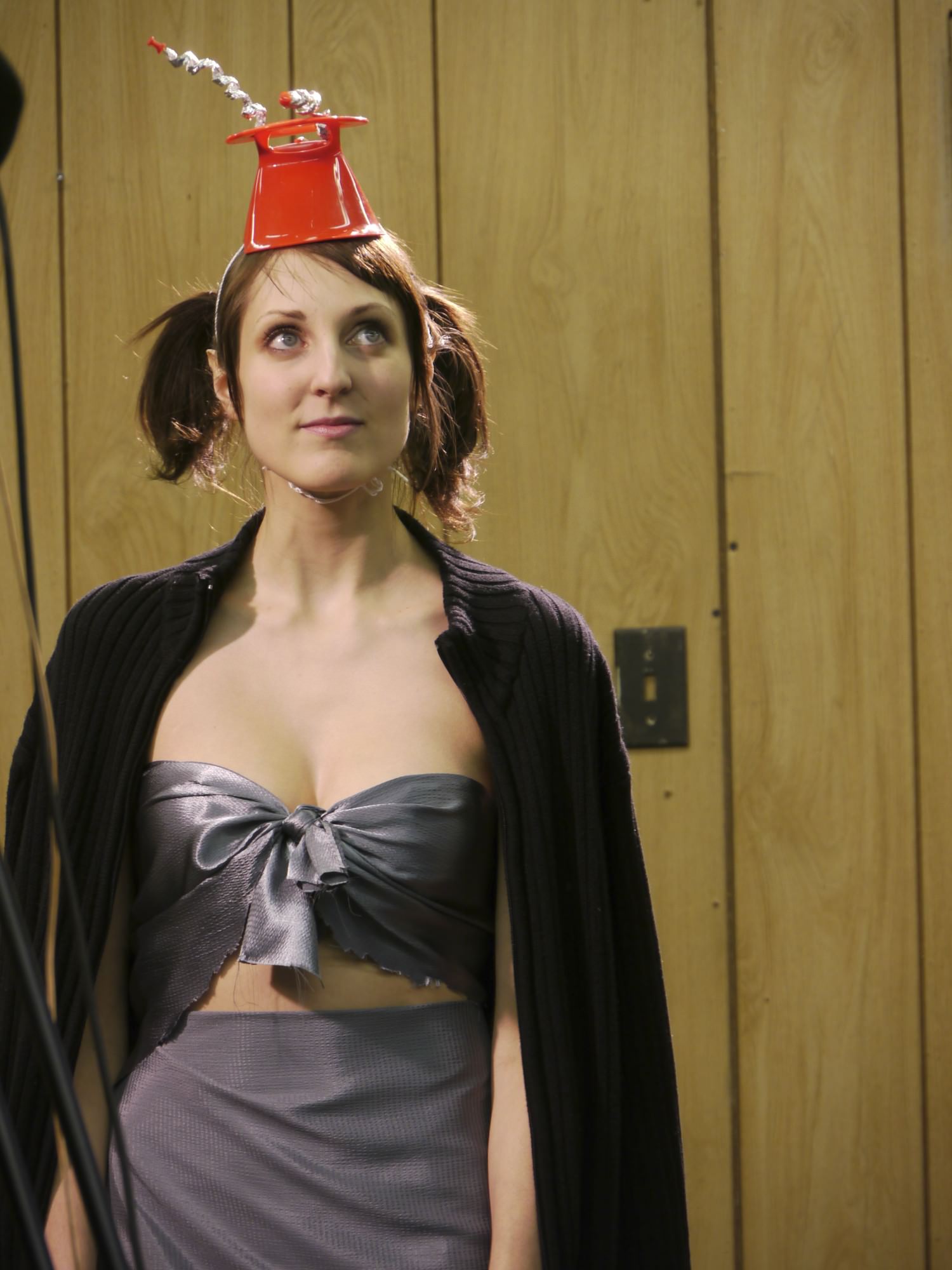
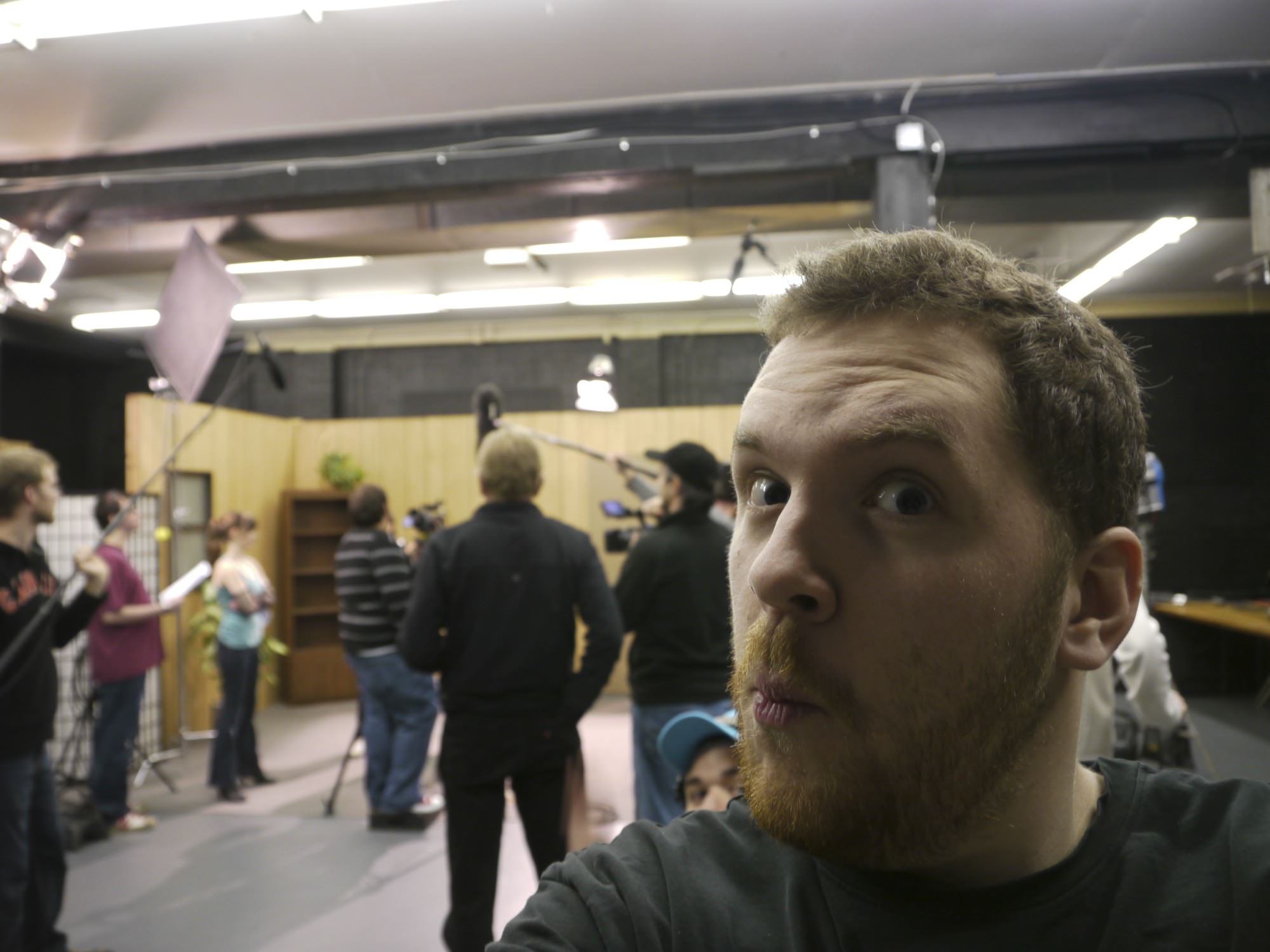
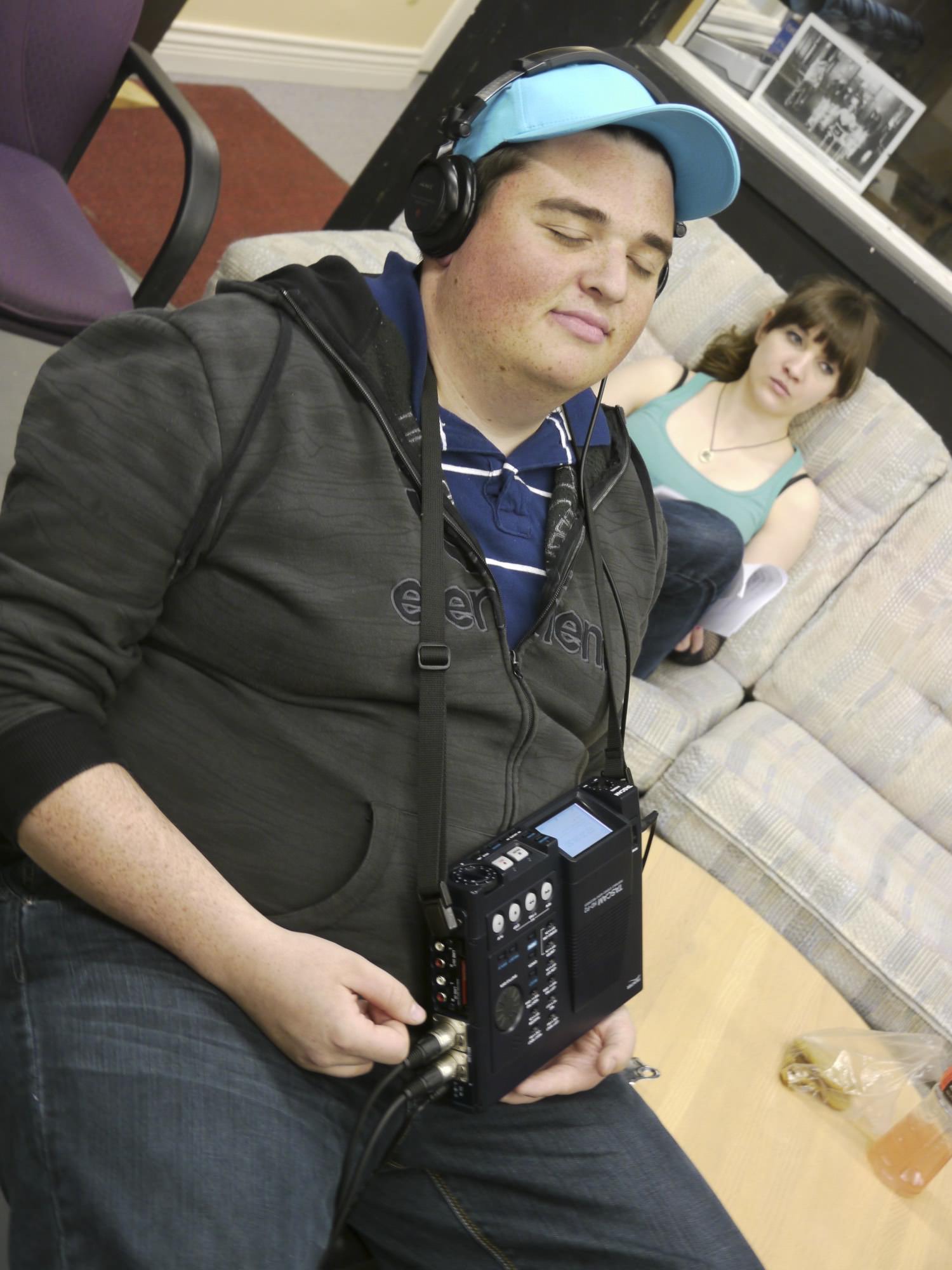
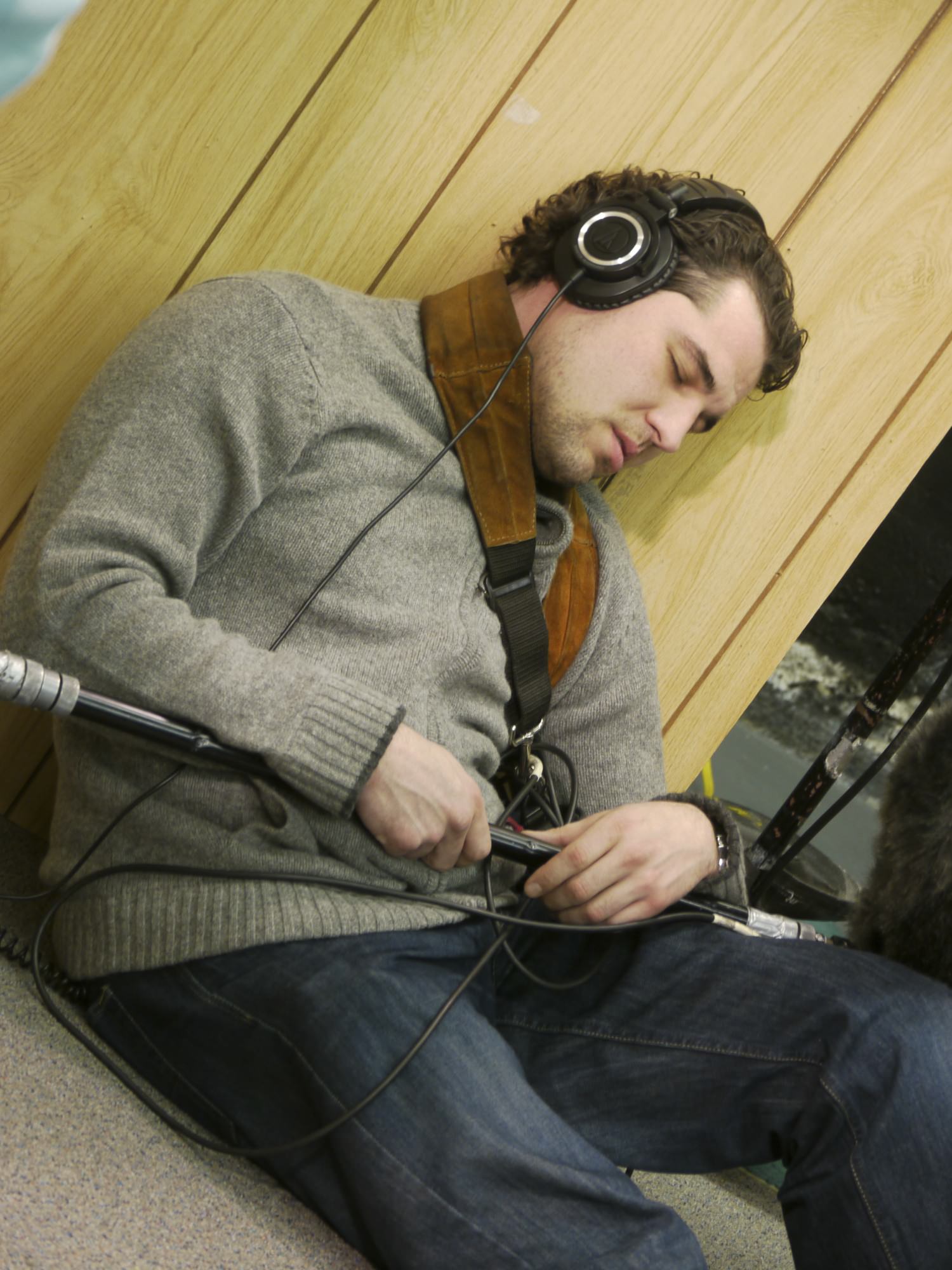
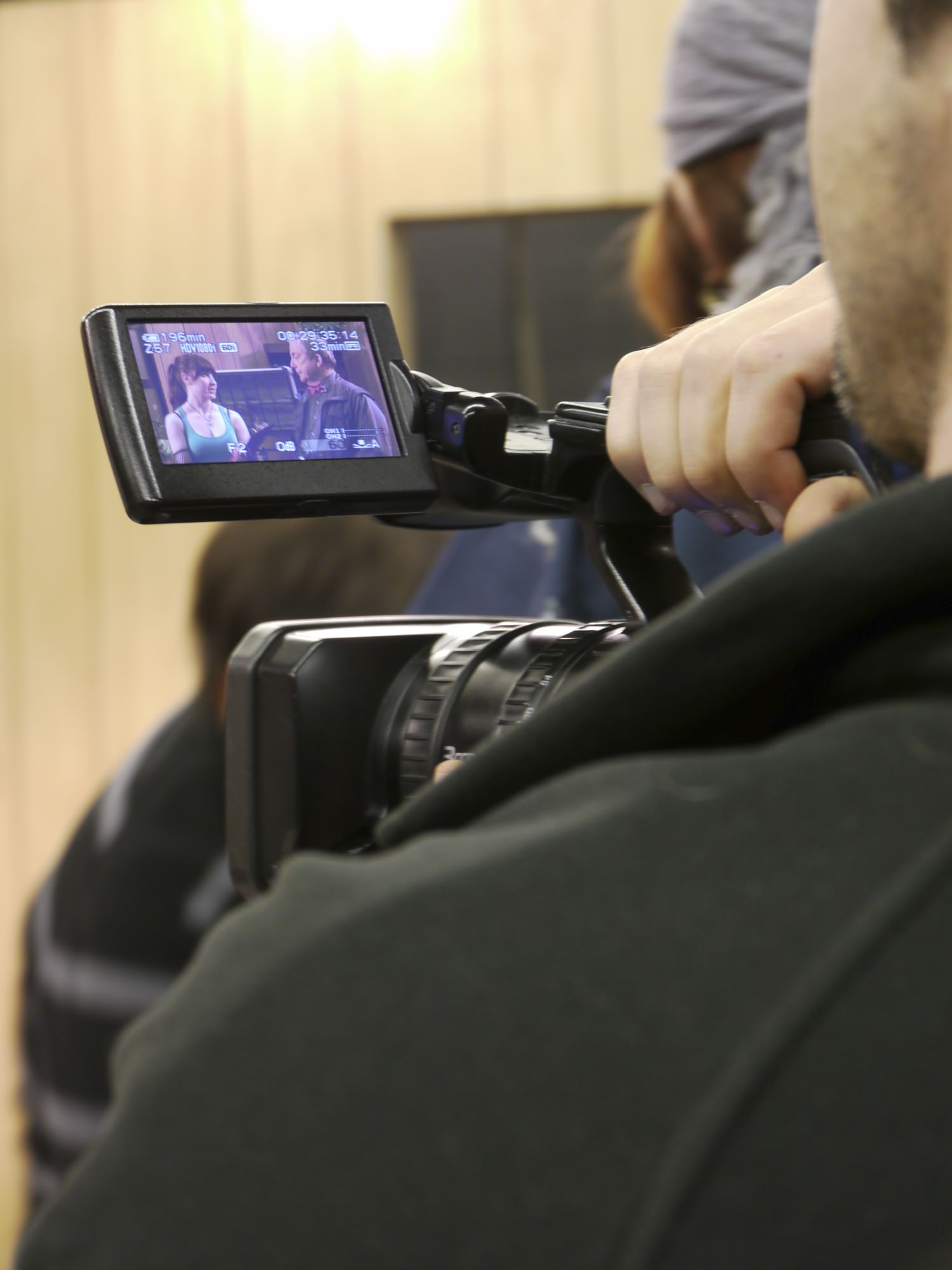
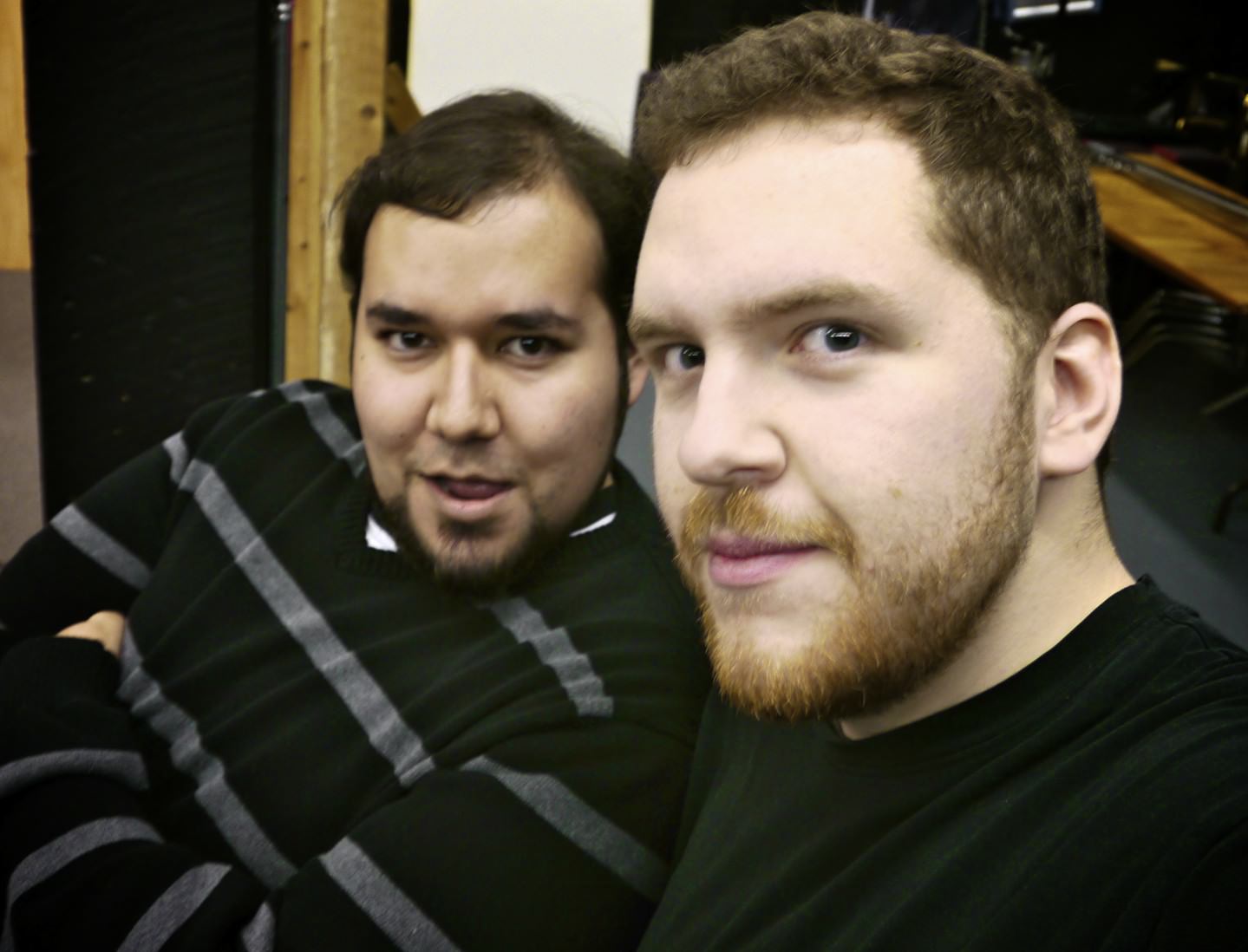
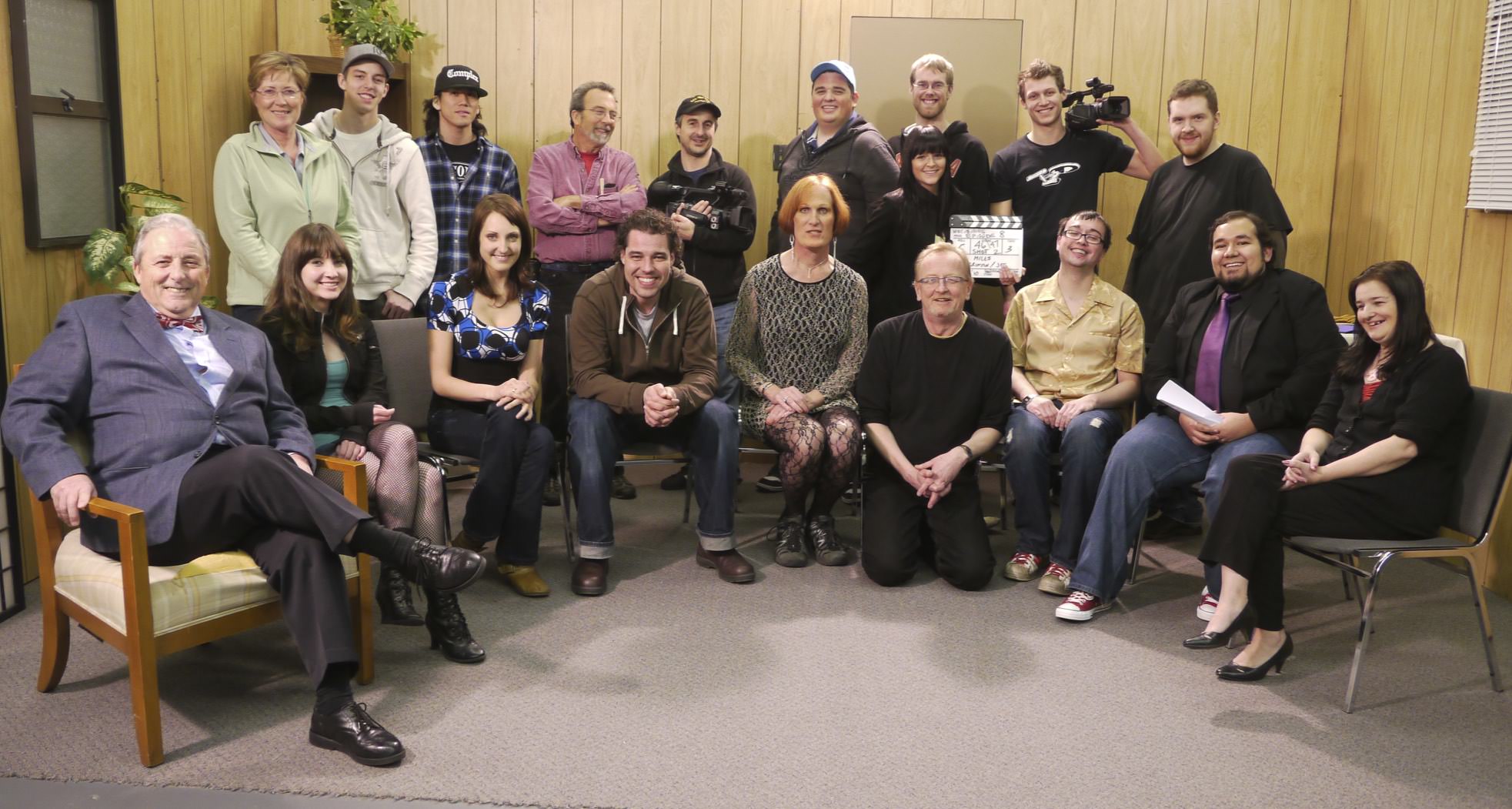
When the episodes went live in April/May, they didn't exactly set the internet on fire but they were received warmly by those who saw them. Watching the episodes years later, it's hard not to see the little things we could have written better, but its also fantastic to still laugh at some of the jokes — the "Chris/Not Chris" signs always get me.
After the release, David asked Chris and I if we would convert the existing episodes into a pilot script. Nothing ever came from it, but it was fun to further explore these characters now that we had actually shot something with them. We knew the voices, we saw dynamics form between the actors and could play up what worked and change what didn't. It was my first experience in episodic writing, and I loved it.
For two guys who didn't know each other beforehand, Chris and I became great friends throughout the process of making Discovery Street. We've worked together many times since, always remotely because after 5 years, we've still never lived in the same city. It's safe to say Chris is the best friend I have whom I've only met in real life a dozen or so times.
I'm immensely proud of what everyone accomplished with this little web series. A huge shout out to all involved, you're all wonderful people and you did a great job. Plus an especially big thanks to David Mills for putting the whole thing on, and for taking two random bearded dudes and asking them to write together.
Relive the magic of Discovery Street right here:





